| Fairport Convention: "What We Did On Our Holydays" (Island, Jan. 1969) |
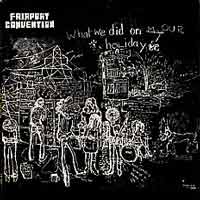 Gleich
drei starke Alben gab's im Jahre '69 von Englands bester Folkrockband.
Allerdings ist dieses insgesamt 2. Album der Band als übergang
von amerikanisch orientiertem Singer/Songwriter-Musik (z.B. Dylans
"I'll Keep It With Mine" und Joni Mitchells "Eastern
Rain") hin zu altenglischem Liedgut ("She Moves Through The
Fair", "Nottamun Town") einzuschätzen. Zum Kern
der Band (Bassist Ashley Hutchings, Trommler Martin Lamble
und den Gitarristen Richard Thompson und Simon Nicol)
kam für Judy Dyble die neue Sängerin Sandy Denny, die
damals bereits ihre eigene Karriere als Folksängerin hatte. Sänger
Ian Matthews war allerdings zum letzten Mal dabei (bzw. beim
Folgealbum "Unhalfbricking"
nur noch als Gast), was möglicherweise mit dem beginnenden Stilwechsel
der Band zu hatte. Gleich
drei starke Alben gab's im Jahre '69 von Englands bester Folkrockband.
Allerdings ist dieses insgesamt 2. Album der Band als übergang
von amerikanisch orientiertem Singer/Songwriter-Musik (z.B. Dylans
"I'll Keep It With Mine" und Joni Mitchells "Eastern
Rain") hin zu altenglischem Liedgut ("She Moves Through The
Fair", "Nottamun Town") einzuschätzen. Zum Kern
der Band (Bassist Ashley Hutchings, Trommler Martin Lamble
und den Gitarristen Richard Thompson und Simon Nicol)
kam für Judy Dyble die neue Sängerin Sandy Denny, die
damals bereits ihre eigene Karriere als Folksängerin hatte. Sänger
Ian Matthews war allerdings zum letzten Mal dabei (bzw. beim
Folgealbum "Unhalfbricking"
nur noch als Gast), was möglicherweise mit dem beginnenden Stilwechsel
der Band zu hatte. |
| Herbie Mann: "Memphis Underground" (Atlantic, Jan. 1969) |
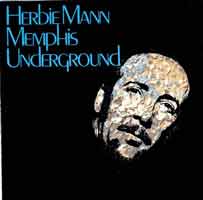 Herbie
Mann ist sicherlich einer der einflussreichsten Flötisten des Jazz,
der auf seinen zahllosen Platten mit vielen Stilen experimentiert hat.
"Memphis Underground" ist durchaus als "Zeitgeistplatte"
anzusehen: sie bringt Jazzsolisten (Herbie Mann selber, Freejazz-Gitarrist
Sonny Sharrock, Jazzrock-Gitarrist Larry Corryell und
den Vibraphonisten Roy Ayers) mit der damals angesagten Memphis-Rhythmusgruppe
um Reggie Young und Bobby Emmons zusammen. Produziert
hat das Ganze der legendäre Tom Dowd. Gespielt werden funkige
Soulgrooves (z.B. der bekannte Titelsong) und Instrumentalversionen
von Soulhits ("Chain Of Fool", "Hold On I'm Coming")
, auf denen sich die Solisten improvisatorisch ausbreiten können. Herbie
Mann ist sicherlich einer der einflussreichsten Flötisten des Jazz,
der auf seinen zahllosen Platten mit vielen Stilen experimentiert hat.
"Memphis Underground" ist durchaus als "Zeitgeistplatte"
anzusehen: sie bringt Jazzsolisten (Herbie Mann selber, Freejazz-Gitarrist
Sonny Sharrock, Jazzrock-Gitarrist Larry Corryell und
den Vibraphonisten Roy Ayers) mit der damals angesagten Memphis-Rhythmusgruppe
um Reggie Young und Bobby Emmons zusammen. Produziert
hat das Ganze der legendäre Tom Dowd. Gespielt werden funkige
Soulgrooves (z.B. der bekannte Titelsong) und Instrumentalversionen
von Soulhits ("Chain Of Fool", "Hold On I'm Coming")
, auf denen sich die Solisten improvisatorisch ausbreiten können. |
| Van Der Graaf Generator: "The Aerosol Grey Machine" (Fontana, Jan. 1969) |
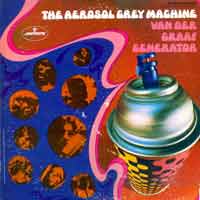 Van
Der Graaf waren eine der unterbewerteten Band der britischen "Progressive-Rock-Szene"
in den frühen 70ern. Dies ist ihr Debüt-Album. dass eigentlich
als Soloalbum des Sängers Peter Hammill geplant war, da
sich die Band Ende 1968 aufgelöst hatte (das tat sie danach noch
des öfteren). Da aber die anderen Mitspieler, Hugh Banton
(keyb), Keith Ellis(bg) und Guy Evans (dr), sowieso im
Studio dabei waren und mit dem neuen Charisma-Label ein neuer Plattenvertrag
ausgehandelt werden konnte, erschienen die Aufnahmen Anfang 1969 unter
dem alten Bandnamen. Den genialen Song "Necromancer" habe
ich damals irgendwo im Fernsehen gesehen (wahrscheinlich im Beatclub)
und als kleiner Bub natürlich erst nicht verstanden. Van
Der Graaf waren eine der unterbewerteten Band der britischen "Progressive-Rock-Szene"
in den frühen 70ern. Dies ist ihr Debüt-Album. dass eigentlich
als Soloalbum des Sängers Peter Hammill geplant war, da
sich die Band Ende 1968 aufgelöst hatte (das tat sie danach noch
des öfteren). Da aber die anderen Mitspieler, Hugh Banton
(keyb), Keith Ellis(bg) und Guy Evans (dr), sowieso im
Studio dabei waren und mit dem neuen Charisma-Label ein neuer Plattenvertrag
ausgehandelt werden konnte, erschienen die Aufnahmen Anfang 1969 unter
dem alten Bandnamen. Den genialen Song "Necromancer" habe
ich damals irgendwo im Fernsehen gesehen (wahrscheinlich im Beatclub)
und als kleiner Bub natürlich erst nicht verstanden. |
| Creedence Clearwater Revival: "Bayou Country" (Fantasy, Feb. 1969) |
 Wegen
"Born On The Bayou" und nicht wegen "Proud Mary"
mein klarer Favorit von den Jungs! Wegen
"Born On The Bayou" und nicht wegen "Proud Mary"
mein klarer Favorit von den Jungs! |
| Quicksilver Messenger Service: "Happy Trails" (Capitol, März 1969) |
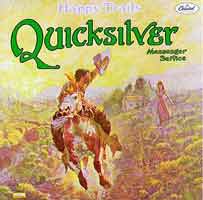 Diese
Platte ist vor allem wegen der über 20minütigen Version von
Bo Diddley's "Who Do You Love" bekannt. Aus der Band sind
die Gitarristen Gary Duncan und John Cippolina hervorzuheben.
Stammsänger Dino Valenti ist dieses mal nicht dabei (war
er zu der Zeit im Knast? Keine Ahnung), weshalb sich Gary Duncan und
Bassist David Freiberg die Leadvocals teilen. Diese
Platte ist vor allem wegen der über 20minütigen Version von
Bo Diddley's "Who Do You Love" bekannt. Aus der Band sind
die Gitarristen Gary Duncan und John Cippolina hervorzuheben.
Stammsänger Dino Valenti ist dieses mal nicht dabei (war
er zu der Zeit im Knast? Keine Ahnung), weshalb sich Gary Duncan und
Bassist David Freiberg die Leadvocals teilen. |
| The Rascals: "Freedom Suite" (Atlantic, März 1969) |
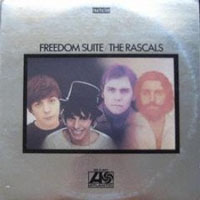 Gefunden in der Grabbelkiste!
Gefunden in der Grabbelkiste!
(12.06.2015)

 Mehr ...
Mehr ...
Adventure has to count for something. When the Rascals dropped the word "Young" from the front of their name, it offered listeners and fans the signal was that everything would be different from then on. While the band could � and would still � write infectious, sophisticated blue-eyed soul numbers, they'd heard Blonde on Blonde, Pet Sounds, and Sgt. Pepper's. They were also keenly aware of the time they lived in. Once Upon a Dream, issued in February of 1968, was their first reach into previously uncharted territory, being constructed as an album instead of as a collection of singles. In the 21st century, it stands as one of rock's great overlooked classics with its ambitious production, multi-part expanded songwriting exercises, and some of the most ambitious vocalizing the band had yet attempted. But if that outing had been ambitious and even visionary, Freedom Suite, released in 1969 as the group's fifth album, was off the map. The band dug in and wrote a single LP's worth of solid tunes including a quartet of fine singles. First, there is "People Got to Be Free," which spent five weeks at Number One on the pop (and hit number 14 on the R&B chart as well). Then there's easy summer soul and gospel groove on "A Ray of Hope," which may have only gotten to number 39, but it's among the most enduring cuts in the Rascals legacy. The track "Heaven," which closed the first disc of Freedom Suite, was also wrapped tightly in urban gospel.
"People Got to Be Free" is not typical of the Rascals massive offerings, but neither is it atypical of the first LP in the collection, which contains 11 more or less conventionally written (by Rascals standards) songs. While the four previously mentioned cuts stood out from the rest, there wasn't any filler on that first platter, either. Arif Mardin co-produced with the band and arranged and conducted strings and large horn sections. Some of the soloists included King Curtis on "Of Course," and David "Fathead" Newman on "Adrian's Birthday." Tom Down engineered a couple of cuts, but Adrian Barber did the rest of the session. Eddie Brigati and Felix Cavaliere wrote all but three songs on the first disc, and were as tight a team as ever. Gene Cornish wrote a pair on the first platter including the killer piano soul-jazz cum rock number "Me and My Friends." But it's disc two that flips out everyone at first, wondering if this is indeed the Rascals after all. There's the jazzed up (think Ramsey Lewis Trio groove) "Adrian's Birthday," which was downright funky with popping bass by Chuck Rainey, fuzzed out stereo-effects guitar from Cornish, and a loose as a goose feeling more like a basement jam than a Rascals cut, especially with the gutbucket tenor break from Newman.
But it is a portent of things to come with the two nearly side-long cuts that follow. First, there's "Boom," which clocks in at nearly 14 minutes. It's a Dino Danelli drum solo, all of it. True, Danelli, who'd played with New Orleans jazz legend Henry "Red" Tyler and Lionel Hampton's band could play the hell out of the drums, but 14 minutes on a rock & roll album? Then there's "Cute," running over 15 minutes, which is a jam, period. Beginning with Cavaliere's Hammond B-3 and Danelli's popping drum kit, Cornish digs deep into his soul-jazz hit. This sounds more like a Prestige date by Jack McDuff up until a third of the way through, with one of the three session bassists (Rainey or Gerry Jemmott or Richard Davis; the player isn't named), pulling out he stops and driving the trio. At about five minutes in it begins to slip into tripped out, improvisational territory. For most acts this would be the death knell, but not for these cats. They let it wander for a minute or so and bring the groove back and then let it wander and come back, but Danelli takes too long a drum break given you'd just had nearly 14 minutes of one a track earlier. It's excessive, but it rocks too. The jam works as such for most of its length because the grooves are so dirty and heavy, and the cracking rhythms with killer breakbeats are just what the doctor ordered after an album of pop tunes. But its excesses do overreach, and therefore, that second disc in the set becomes all but superfluous. Freedom Suite reached number 127 on the chart, because of its reach, and would be the second to last Rascals album to produce any singles in the Top 40. The CD version is actually easier to handle with the skip factor, and after "Adrian's Birthday," can be pulled. Still, one needs to hear "Cute" at least once.
(by Thom Jurek, All Music Guide)
|
| The Velvet Underground (Verve/MGM, März 1969) |
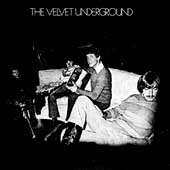 Das dritte Velvet-Album war eine Abkehr von den harschen Klängen
des Vorgängers "White Light/White Heat". John Cale
war zwar nicht mehr dabei, aber Lou Reed zauberte tolle Songs
wie "What Goes On", "Pale Blue Eyes", "Candy
Says", "Beginning To See The Light" und "Murder
Mystery". Trotz des genialen Bananenalbums
ist dies mein wahrer Favorit der Band!
Das dritte Velvet-Album war eine Abkehr von den harschen Klängen
des Vorgängers "White Light/White Heat". John Cale
war zwar nicht mehr dabei, aber Lou Reed zauberte tolle Songs
wie "What Goes On", "Pale Blue Eyes", "Candy
Says", "Beginning To See The Light" und "Murder
Mystery". Trotz des genialen Bananenalbums
ist dies mein wahrer Favorit der Band!

 Mehr ...
Mehr ...
Cale quit right after White Heat followed the debut album into obscurity, and was replaced by popster Doug Yule, a nice-meanin' kinda guy who, unfortunately, earned a strange reputation among Velvetheads which I could only compare with the reputation of Patrick Moraz among Moody Blues fans. I do not think, though, that it was Yule's fault that the band moved away from feedback experiments and began rapidly advancing in the direction of becoming a 'normal' band; rather it was the lack of Cale, who was indeed the catalyst for all the weirdness. Anyway, this album is a perfect start for your VU collection - especially if you are, like me, upset about the likes of 'Sister Ray' or 'European Son'. I'd say that overall the songwriting level is a bit of a let down as compared to Nico: few of the songs managed to grapple me at once, but, once they did, they managed to convert me. So this one wins out as the best VU album simply because of its consistency (I mean, Loaded is also consistent, but it's a bit too un-Velvetish to get all the honours).
VU is actually quite different-sounding from the early stuff. If you ask me, the music perfectly matches the album cover - our heroes, dressed in perfectly normal and homely clothes, are sitting on a perfectly normal and homely sofa in what looks like a perfectly normal and homely living-room (okay, maybe it's a basement, it's dark in there; even so, it's a perfectly normal and homely basement). And the music, too, is inviting and homely, with the production stripped-down to an absolute minimum - most of the time, it's just a quiet guitar, soft percussion and an uninvolving bassline. And it's horrendously quiet - the guitars are either acoustic or, if they are electric, they're soft and inoffensive, the singing is inobtrusive and a bit muffled, and even when there are rockers ('What Goes On', 'Beginning To See The Light'), there's not an ounce of aggression or even energy about them. This is the kind of album that you are indeed able to make in your living room - just set up a recorder and a couple of guitars, and you can knock it off in two hours. Not that I actually imply that they did knock it off in two hours, mind you, because it's obvious that it took a long time to pen these terrific songs; but somehow I doubt that they really spent too much time in the studio. In any case, they probably didn't have much of a budget to experiment with sitars or phasing, what with their total lack of commercial success and all.
Of course, the main drawback of this approach is that for many a weak soul among us the record will serve as a great cure for insomnia - I myself sometimes feel like dozing off at the last minutes of 'Pale Blue Eyes' or even 'Candy Says', my favourite song on here. But that's not because the songs are boring, mind you, or bad, or poorly written. They're more like great lullabies, see - now you wouldn't want to call a lullaby 'boring' because it makes you go to sleep? That's what lullabies are for! If you really fall asleep to the sound of 'Candy Says' or 'Jesus' or 'Pale Blue Eyes', that's quite healthy. In fact, this is one excellent album to put on before turning off the lights (maybe even after turning them off) - so nice and soothing and calm and brilliant. Kinda like Dylan's Selfportrait, but don't kill me for saying that. Selfportrait is pretty underrated, by the way.
In any case, like I said, there are tons of great songwriting here. The only track that somehow connects it to the 'bizarreness' of old is the nine-minute 'Murder Mystery', a 'psycho' experiment where all the band members pronounce endless stream-of-conscience speeches all at once that they set to two alternating melodies. This can be mind-numbing at times, but both the melodies are cleverly constructed, and the piano coda is nice, too, so, if not a masterpiece, the number is at least much more tolerable than 'European Sun' or even 'Heroin'. Plus, it's got Moe Tucker singing (see below)!
Elsewhere, you get just a couple buzzing rockers - 'What Goes On' is partially ripped-off from the same-titled Beatles song (for some strange reason, nobody notices that, even if Lou croaks the line 'What goes ooon in your mind?' exactly in the same way as Ringo does it), but only partially, and the chainsaw solo in the middle is by far the most rousing moment on the whole album; and 'Beginning To See The Light' has some subtle repetitive charm of its own, like in 'Waiting For The Man', only this time there's no real weirdness around, just a crazy simulation.
But the album's true bliss lies not in the rockers - Lou and company have striken upon a golden mine of balladry, alternating one minor chef-d'oeuvre with another. 'Candy Says' is a song that heralds a series of firsts: it has the first time Doug Yule is singing lead vocals (and he does it pretty well, too), it's the first song with the title constructed according to the formula '[female name]+says' (cf. 'Stephanie Says', 'Caroline Says', 'Lisa Says', ad infinitum), and it's also the first song in the Velvets' catalogue that could be called 'sappy' - but it's the wonderful kind of sap that makes you shed tears and not feel even a little guilty. The melody is so awesome, and Yule croons out the lyrics devoted to an Andy Warhol drag queen with such tenderness and devotion, and the little silly 'doo-doo-wah' chants at the end are so cute, that it's easily the best number on the album. 'Pale Blue Eyes' has been called one of the world's greatest love songs by the Rough Guide to Rock, and while I could hardly agree, it's certainly charming and extremely touching in its almost childish naivety. And, of course, the lines 'thought of you as my mountain top/thought of you as my peak' are sheer genius. And 'Jesus'? Why - that's almost a religious hymn, people, and they seem to take it seriously. 'Help me in my weakness 'cause I'm falling out of grace'. What the hell is that? And, most of all, why the hell is it so beautiful? If you listen hard, you'll understand that it's actually based on a blues pattern, but they twist the melody in such a dazzling way that you could never guess. I only guessed after looking at the lyrics sheet...
Just to remind you, though: this is the Velvet Underground. Dem Velvets ain't no sissy gospel revival schlock. Dem Velvets used to sing 'bout SEX, remember that? That's why they have 'Some Kinda Love' on here, too - you can actually hear Lou giggle as he grumbles out: 'the possibilities are endless/And for me to miss one/Would seem to be groundless'. Indeed; if it's possible to put this jolly ode to kinkiness on the same side with a humble religious prayer, then the possibilities are truly endless. Another possibility is croaking out a convincing 'soul' tune ('I'm Set Free'), and another possibility is to let Moe Tucker bring the album to a close with a short, acoustic-driven ditty about death. Actually, if 'After Hours' hadn't been undermined by the steady 'grunt - grunt - grunt - grunt' of Yule's bass holding up the acoustic guitar, it could have easily been mistaken for a 'live' recording of a 'homemade' tune sung by some camp girl taking a hike with her friends. Poor Moe, she can't sing at all - she's terribly off-key, but in a certain way, this only makes the song more charming and innocent. Just as 'Candy Says' is the perfect album opener, 'After Hours' is the perfect closer to the VU's most consistent, listenable and impressive fourty-five minutes.
Why this record never sold much is a mystery to me; the only explanation I can offer is that the rock public was by then far more keen on bombastic, pretentious types of music - hard rock was in full bloom, and prog was just taking off. In that way, this album's initial failure to gain the public's eye can probably be compared only to the bombing of the Kinks' Village Green: both were quiet, humble, moderate records that never guaranteed much excitement but should be listened to in a relaxed, self-composed condition, with no drugs or stimulants in sight. Fortunately, time has corrected that mistake, and we should finally give both of these classics their due. So go out and buy it today, if your parents never bothered to buy it thirty years ago!
(from George Starostin's Reviews)
Upon first release, the Velvet Underground's self-titled third album must have surprised their fans nearly as much as their first two albums shocked the few mainstream music fans who heard them. After testing the limits of how musically and thematically challenging rock could be on Velvet Underground & Nico and White Light/White Heat, this 1969 release sounded spare, quiet, and contemplative, as if the previous albums documented some manic, speed-fueled party and this was the subdued morning after. (The album's relative calm has often been attributed to the departure of the band's most committed avant-gardist, John Cale, in the fall of 1968; the arrival of new bassist Doug Yule; and the theft of the band's amplifiers shortly before they began recording.) But Lou Reed's lyrical exploration of the demimonde is as keen here as on any album he ever made, while displaying a warmth and compassion he sometimes denied his characters. "Candy Says," "Pale Blue Eyes," and "I'm Set Free" may be more muted in approach than what the band had done in the past, but "What Goes On" and "Beginning to See the Light" made it clear the VU still loved rock & roll, and "The Murder Mystery" (which mixes and matches four separate poetic narratives) is as brave and uncompromising as anything on White Light/White Heat. This album sounds less like the Velvet Underground than any of their studio albums, but it's as personal, honest, and moving as anything Lou Reed ever committed to tape.
(by Mark Deming, All Music Guide)
|
| Scott Walker: "Scott 3" (Philips, März 1969) |
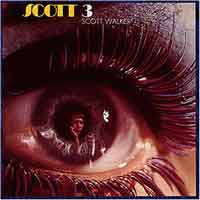

 Mehr ...
Mehr ...
|
Scott Walker's final British Top Ten album was the first to be dominated
by his own songwriting. Ten of the 13 tunes on this 1969 LP are originals;
the remaining three, naturally, were written by one of his chief inspirations,
Jacques Brel. There are some interesting moments here. "Big Louise"
talks about a hefty prostitute with shocking explicitness for a pop star
album of the era. "Copenhagen" (like much of Walker's '60s work)
foreshadows David Bowie. "Funeral Tango" is a particularly vicious
Brel song. "30 Century Man" is an uncommonly folkish and focused
tune for Walker. "We Came Through" is an oddball cavalry charge
featuring one of his occasional forays into Ennio Morricone spaghetti
Western-like production. The tension between Walker's dense, foreboding
lyrics and orchestral production is unusual, to say the least. But too
often, it's too difficult to penetrate Walker's insights through Wally
Scott's string-drenched production. It shrouds the lyrics in a fog that's
often too syrupy to justify the effort needed to fight through it. (by
Richie Unterberger, AMG)
|
|
| “Auf dem 1969er Album `Scott 3´finden
sich außer den obligatorischen (drei) Brel Interpretationen nur noch
selbstverfasste, hochwertige Songs wie `Copenhagen´, `It´s Raining
Today´ und `We Came Through´.“ (ME/Sounds. 6 von 6 Sternen)
|
|
| „Vier superbe, nahezu gleichwertige LP´s veröffentlichte
Scott Walker in den letzten drei Jahren einer Dekade, die ihn schließlich
seiner scheinbaren Bestimmung zuführte: dem Bannen großer Gefühle,
dem Singen grandioser, spectorianischer Balladen als maßgebliches
Mitglied der Walker Brothers...“ (Rolling Stone. Die musiklaischen
Meilenstein der 60er) |
|
| Amon Düül II: "Phallus Dei" (Liberty. April 1969) |
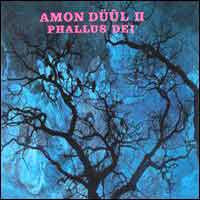

 Mehr ...
Mehr ...
|
Kein Zweifel, das erste Studio-Album der frischgesplitteten Amon Düül
II war wichtig. Sehr wichtig. Zum ersten, weil es fast zeitgleich mit
Psychedelic Underground von Amon Düül I erschien und gleich
dokumentierte, dass das kreative Level in beiden Kommunen hoch war. Von
der tiefen Befriedigung der sehr gut ausgebildeten Egos der Protagonisten
einmal abgesehen, war Phallus Dei, damals von der Plattenfirma taktisch
etwas unklug mit "Geis(!)el Gottes" übersetzt, tatsächlich
ein Meilenstein deutscher Rockgeschichte. Nie zuvor hatten Musiker so
kompromisslos und konsequent die Konventionen hiesiger Studio-Produktion
über den Haufen geworfen. Dabei hatten sie nur versucht, ihre langen
kollektiven Improvisationen auf Band zu bannen. Die teilweise Überforderung
des Toningenieurs kann heute noch erahnt werden. Minutenlang fehlen manche
Instrumente auf der Abmischung. Allerdings ist der restliche bruitistische
Lärm immer entschlossen genug und trägt das Titelstück
eine ganze Plattenseite lang. Eine energetische Leistung, die der von
konventionellen Kritikern oft unterschätzten Innovation elektronischer
Sounds gerade adäquat war und auch sein musste, um ein Meisterwerk
einer neuen Musik daraus zu machen, für die damals wie heute noch
keine Schublade gefunden ist. Manche meinen, sie unter dem stupiden Begriff
"Krautrock" ablegen zu können. Werch ein illtum, um es
mit Jandl zu sagen. --Carl-Ludwig Reichert -- Dieser Text bezieht sich
auf eine vergriffene oder nicht verfügbare Ausgabe dieses Titels
(Aus der Amazon.de-Redaktion)
|
|
|
Exotisch und chaotisch gleichermaßen, krempelte die Münchener
Musi- kerkommune Amon Düül II ausgangs der Sechziger die deutsche
Rockszene um. Offen für Experimente mit Sounds und Effekten, entrückten
Choral-Tönen aufgeschlossen und auch der Violine zugetan, sprengten
sie im Kielwasser von Syd Barrets Pink Floyd oder Jefferson Airplane Song-Konventionen.
Folgerichtig krönte die wilde, leicht orientierungslose 20minütige
Improvisationsorgie Phallus Del das Debüt. Heute wirkt der "Phallus
Gottes" jedoch recht erschlafft.
© Audio
|
|
|
Den nationalen Pionieren widmet das Repertoire-Team CDs. Besondere Aufmerksamkeit
gilt der Münchner Musikkommune Amon Düül II, deren Soundexperimente
den deutschen Rock um seine Unschuld brachten: Das wilde Debüt "Phallus
Dei" enthielt 1969 im Keim all jene schillernden Hippierock-Elemente,
die bei "Yeti" und "Tanz der Lemminge" (1970/71, die
Rarität, stereoplay 11/92) zu mächtigen Underground-Pflanzen
aufblühten.
© Stereoplay
|
|
|
"Kanaan" starts the album wonderfully, a melange of rumbling
rock power, strings and sitars, Lothar Meid's almost Bowie-ish vocals
with Renate Knaup's wordless chanting in the background, that's just as
intoxicating many years after its first appearance as it was upon release.
The slightly jazzy concluding minute avoids sounding forced, blending
in beautifully with the song's general flow. "Dem Guten, Schoenen,
Wahren" takes a truly wacked-out turn, with Meid's bizarre falsetto
coming to the fore, swooping around the main melodies without regard for
them in yelps and chants, while the music chugs along in what almost sounds
like a beer-hall singalong at points, taking a more haunting, beautiful
turn at others (the heavily produced violins are an especially spooky
touch). "Luzifers Ghilom" brings out the psych-folk origins
of the band a bit more with Shrat's bongos, while the rest of the band
pulls off a nicely heroic rock piece that never sounds too inflated or
stupid, with appropriately nutty vocal breaks and interjections along
the way -- the sublime and the ridiculous never sounded so good together.
"Henriette Krotenschwanz" ends the first side with a brief choral
military march (if you will). The title track takes up the remainder of
the album, a complex piece which never loses a sense of fun while always
staying musically compelling. After a quiet start, the opening minutes
consist of a variety of drones and noises constantly brought up and down
in the mix, leading to a full band performance that builds and skips along
with restrained fuzz power. Everything builds to a sudden climax halfway
through, where all the members play a series of melodies in unison, while
drums pound in the background. After a quick violin solo, everything settles
into a fine percussion jam, with the full band kicking in shortly thereafter.
With Karrer's crazed vocals showing where Mark E. Smith got some good
ideas from, Phallus gets the Düül II career off to a flying
start.
(by Ned Raggett, All
Music Guide)
|
|
| Tim Buckley: "Happy Sad" (Elektra, April 1969) |
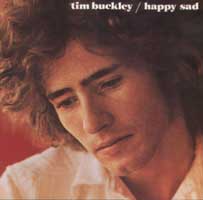 Tim Buckley, zum Dritten. Der Klang wird immer freier, nähert sich
immer mehr dem Jazz. Dafür sorgen neben dem begnadeten Sänger
Tim Buckley der Gitarrist Lee Underwood und der Vibraphonist
David Friedman.
Tim Buckley, zum Dritten. Der Klang wird immer freier, nähert sich
immer mehr dem Jazz. Dafür sorgen neben dem begnadeten Sänger
Tim Buckley der Gitarrist Lee Underwood und der Vibraphonist
David Friedman.

 Mehr ...
Mehr ...
| Schon nach den ersten Takten spürt man die fast erdrückende
Schwermut, die aus den elegischen, zum Teil sehr langen Songgedichten auf
Tim Buckleys drittem Album von 1969 spricht. Die sparsame Jazzinstrumentierung
aus Gitarren, Standbaß, Congas und Vibraphon oder Marimbaphon schafft
ein dichtes kammermusikalisches Umfeld und rückt "Happy Sad"
stilistisch in die Nähe von Van Morrisons "Astral Weeks".
Weit weniger depressiv musizierte Buckley noch auf dem Vorgänger "Goodbye
And Hello", der jetzt ebenfalls in einwandfreier Überspielung
als CD wiederveröffentlicht wurde.
© Stereoplay
|
|
|
Easily Tim Buckley's most underrated album, Happy Sad was another departure
for the eclectic Southern California-based singer/songwriter. After the
success of the widely acclaimed Goodbye and Hello, Buckley mellowed enough
to explore his jazz roots. Sounding like Fred Neil's Capitol-era albums,
Buckley and his small, acoustic-based ensemble weave elegant, minimalist
tapestries around the six Buckley originals. The effect is completely
mesmerizing. On "Buzzin' Fly" and "Strange Feelin',"
you are slowly drawn into Buckley's intoxicating vision. The extended
opus in the middle of the record, "Love from Room 109," is an
intense, complex composition. Lovingly underproduced by Jerry Yester and
Zal Yanovsky, this is one of the finest records of the late '60s.
(by Matthew Greenwald, All
Music Guide)
|
|
| Leonard Cohen: "Songs From A Room" (Capitol, April 1969) |
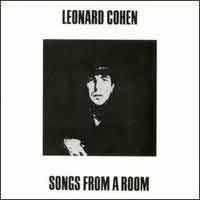 Auch
Cohens zweite Platte war wieder voller zukünftiger Klassiker, z.B.
"Story Of Isaac" und natürlich "Bird On The Wire". Auch
Cohens zweite Platte war wieder voller zukünftiger Klassiker, z.B.
"Story Of Isaac" und natürlich "Bird On The Wire". |
| Flying Burrito Brothers: "The Gilded Palace Of Sin" (A&M, April 1969) |
|
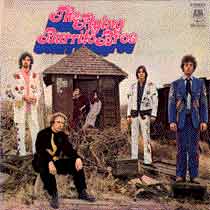 Nachdem
Gram Parsons bei den Byrds
mit seiner Countryrock-Vision ziemlich untergebuttert wurde, machte
er sich mit dem anderen Ex-Byrd
Chris Hillman, der bereits vor seiner Byrds-Zeit Bluegrass
spielte, als Burrito-Brüder selbständig. Mit dabei noch
der Bassist Chris Ethridge (Hillman spielt hier Gitarre und
Mandoline), der Steeler Sneaky Pete und wechselnde Studiotrommler.
Erst bei der 2.Platte war mit Michael Clarke, ebenfalls von
den Byrds, ein fester Trommler
dabei. Mit vielen Parsons-Klassikern. Anspieltipps sind: "Christine's
Tune", "Sin City", "Wheels" und die beiden
"Hot Burrito" (#1 und #2). Nachdem
Gram Parsons bei den Byrds
mit seiner Countryrock-Vision ziemlich untergebuttert wurde, machte
er sich mit dem anderen Ex-Byrd
Chris Hillman, der bereits vor seiner Byrds-Zeit Bluegrass
spielte, als Burrito-Brüder selbständig. Mit dabei noch
der Bassist Chris Ethridge (Hillman spielt hier Gitarre und
Mandoline), der Steeler Sneaky Pete und wechselnde Studiotrommler.
Erst bei der 2.Platte war mit Michael Clarke, ebenfalls von
den Byrds, ein fester Trommler
dabei. Mit vielen Parsons-Klassikern. Anspieltipps sind: "Christine's
Tune", "Sin City", "Wheels" und die beiden
"Hot Burrito" (#1 und #2).
"Fuck 'em! Who needs the Byrds anyway? This record
has all the big hits of the Gram-era Burritos -- most of them, at
any rate. "Wheels", "Sin City", "Hot Burrito
#2", the jovial misogyny of "Christine's Tune" and
Gram plugging away on a couple of Dan Penn's Muscle Shoals R&B
anthems. Naw, he didn't have the greatest voice, but somehow he makes
it all work. Uneven, but a classic."
|
| Joni Mitchell: "Clouds" (Reprise, April 1969) |
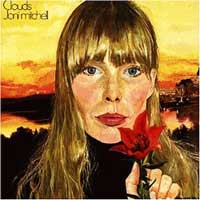 |
| The Youngbloods: "Elephant Mountain" (RCA/Racoon, April 1969) |
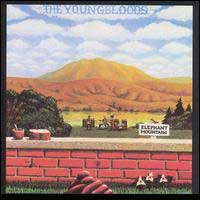 Zwei Rockbands erwies RCA damals die Ehre eines eigenen Plattenlabels:
Jefferson Airplane spendierte man "Grunt",
"Racoon" war extra für die Band um Sänger/Bassist
Jesse Colin Young, einem
ehemaligen Folksänger, und dem virtuosen Gitarristen/E-Pianisten
"Banana" gegründet worden.
Zwei Rockbands erwies RCA damals die Ehre eines eigenen Plattenlabels:
Jefferson Airplane spendierte man "Grunt",
"Racoon" war extra für die Band um Sänger/Bassist
Jesse Colin Young, einem
ehemaligen Folksänger, und dem virtuosen Gitarristen/E-Pianisten
"Banana" gegründet worden.
Enthält mit "Darkness, Darkness" einen häufig gecoverten
Songs aus dieser Zeit: mir sind Versionen u. a. von Ian Matthews,
Heidi Berry, Richard Shindell, Elliott Murphy,
Christy McWilson und den Cowboy Junkies bekannt.
(Dez. 2005)

 Mehr ...
Mehr ...
|
Elephant Mountain (1969) is the Youngbloods' third long player and marks
their debut as a trio -- featuring Jesse Colin Young (bass/guitar/vocals),
Joe Bauer (drums) and Lowell "Banana" Levinger(keyboards) --
after the departure of co-founder Jerry Corbitt (guitar/vocals). Although
the band initially formed out of the early 1960s Northeast folk scene,
by the time this set was issued they had relocated to the pastoral Northern
California county of Marin. Blending affective pop rock melodies and lyrics
with their good time jug band roots, the Youngbloods became instantly
embraced by the already blossoming Bay Area music community. This effort
contains some of the band's strongest material to date building on the
considerable momentum of their 1967 self-titled release and further enhanced
by their remarkable instrumental capabilities. Young's contributions are
particularly notable as he vacillates between the edgy and electric "Darkness
Darkness", to the light and earthy "Sunlight" and "Ride
The Wind", or the bouncy tales Smug" and "Beautiful".
Banana honours his new surroundings with the gorgeous and catchy instrumental
"On Sir Francis Drake" -- named after a heavily-travelled Bay
Area motorway. On this cut the textural combination of electric piano
and harpsichord provide a jazzy counterbalance to Young's propulsive basslines
and Bauer's nimble drumming. The "Rain Song (Don't Let The Rain Bring
You Down)" is left over from Corbitt's tenure and recalls the earlier
Youngbloods' sound which was more akin to the Sopwith Camel or the Lovin'
Spoonful than the trio's current folk-rock leanings. "Trillium"
is a hidden gem of a jam that examines the band's remarkably strong improvisational
interaction. "Sham" is perhaps the most straight-forward rocker
on the album and recalls Bay Area acts like the Sal Valentino-led Stoneground.
The disc concludes with the sublime "Ride The Wind" which sports
a very sophisticated and slightly Latin flavoured melody. A nearly ten
minute live rendering is the title track to the group's second live offering
Ride The Wind' (1971).
(by Lindsay Planer, All
Music Guide)
|
|
| MC5: "Kick Out The Jams" (Elektra, Mai 1969) |
 Der
größte Erfolg der "Motor City Five" aus Detroit
war dieses Livealbum mit dem berühmten "Beep" über
einer "Motherfucker"-Ansage. Beide Gitarristen erlangten danach
Kultstatus, wenn auch keinen übermäßigen Wohlstand:
Wayne Kramer als Semilegende in Punkrockkreisen, Fred "Sonic"
Smith durch seine Heirat mit Patti Smith . Das schöne
Comeback-Album nach der Kinderpause von 1988, "Dream
Of Life", haben Fred und Patti gemeinsam komponiert und eingespielt.
Leider verstarb er vor einigen Jahren. Der
größte Erfolg der "Motor City Five" aus Detroit
war dieses Livealbum mit dem berühmten "Beep" über
einer "Motherfucker"-Ansage. Beide Gitarristen erlangten danach
Kultstatus, wenn auch keinen übermäßigen Wohlstand:
Wayne Kramer als Semilegende in Punkrockkreisen, Fred "Sonic"
Smith durch seine Heirat mit Patti Smith . Das schöne
Comeback-Album nach der Kinderpause von 1988, "Dream
Of Life", haben Fred und Patti gemeinsam komponiert und eingespielt.
Leider verstarb er vor einigen Jahren. |
| Bob Dylan: "Nashville Skyline" (Columbia, Mai 1969) |
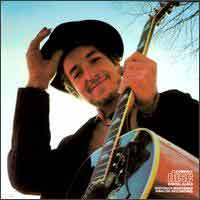 Dylans
Platte aus Nashville ist viel besser als ihr Ruf. Mit "Lay Lady
Lay" gab's nach längerer Pause auch mal wieder einen Hit.
Schön ist auch das Duett mit Johnny Cash bei "Girl
From The North Country". Dylans
Platte aus Nashville ist viel besser als ihr Ruf. Mit "Lay Lady
Lay" gab's nach längerer Pause auch mal wieder einen Hit.
Schön ist auch das Duett mit Johnny Cash bei "Girl
From The North Country". |
| The Moody Blues: "On The Threshold Of A Dream" (Decca/Deram, Mai 1969) |
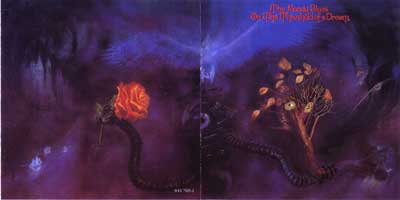 Diese Platte, die nur wenige Monate vor dem Meisterwerk "To
Our Children's Children's Children" entstand, ist auch schon
ein Genuss. Unbedingt mit Kopfhörer hören. Kaum zu glauben,
dass 1969 schon so ein toller Sound produziert wurde!
Diese Platte, die nur wenige Monate vor dem Meisterwerk "To
Our Children's Children's Children" entstand, ist auch schon
ein Genuss. Unbedingt mit Kopfhörer hören. Kaum zu glauben,
dass 1969 schon so ein toller Sound produziert wurde!

 Mehr ...
Mehr ...
On the Threshold of a Dream was the first album that the Moody Blues had a chance to record and prepare in a situation of relative calm, without juggling tour schedules and stealing time in the studio between gigs -- indeed, it was a product of what were almost ideal circumstances, though it might not have seemed that way to some observers. The Moodies had mostly exhausted the best parts of the song bag from which their two preceding albums, Days of Future Passed and In Search of the Lost Chord, had been drawn, and as it turned out, even the leftover tracks from those sessions wouldn't pass muster for their next long-player project -- but those albums had both been hits, and charted well in America as well as England, and had overlapped with a pair of hit singles, "Nights in White Satin" and "Tuesday Afternoon," on both sides of the Atlantic. Their success had earned them enough consideration from Decca Records that they could work at their leisure in the studio through all of January and most of February of 1969; what's more, with two LPs under their belt, they now had a much better idea of what they could accomplish in the studio, and write songs with that capability in mind. Equally important, they'd just come off of an extensive U.S. tour (opening for Cream) and had learned a lot in the course of concertizing over the previous year, achieving a much bolder yet tighter sound instrumentally as well as vocally, and they could now write to and for that sound as well. So this album is oozing with bright, splashy creative flourishes in two seemingly contradictory directions that somehow come together as a valid whole. On the original LP's first side (which was the more rock-oriented side), the songs "Lovely to See You," "Send Me No Wine," "To Share Our Love," and "So Deep Within You" all featured killer guitar hooks (electric and acoustic) and fills by Justin Hayward; beautiful, muscular bass from John Lodge; and vocal hooks everywhere. It's also a surprisingly hard-rocking album considering the amount of overdubbing that went into perfecting the songs, including cellos, wind and reed instruments, and lots of vocal layers -- yet it even found room to display a pop-soul edge on "So Deep Within You" (a number that the Four Tops later recorded).
Side two was the more overtly ambitious of the two halves -- after a pair of songs dominated by acoustic guitar and heavy Mellotron, "Never Comes the Day" and "Lazy Day" (the latter a piece of social commentary showing that Ray Thomas, at least, still remembered his roots in Birmingham), the remainder of the record was devoted to the most challenging body of music in the group's history. Justin Hayward's deliberately archaic "Are You Sitting Comfortably?," a piece that sounds almost 400 years out of its own time, evokes images out of medieval and Renaissance history laced with magic and mysticism, all set to Hayward's acoustic guitar and Thomas' flute, leading into Graeme Edge's poetic contribution, "The Dream," accompanied by Mike Pinder's Mellotrons in their most exposed appearance to date on a record. And all of that flows into Pinder's three-part suite, "Have You Heard, Pt. 1"/"The Voyage"/"Have You Heard, Pt. 2," a tour de force for the band -- check out Edge's and Lodge's rock-solid playing on "Have You Heard" -- and for Pinder, whose Mellotrons, in conjunction with Thomas' flute and supported by some overdubbed orchestral instruments, push the group almost prematurely into the realm of progressive rock. This synthesis of psychedelia and classical music, including a section featuring Pinder on grand piano, may sound overblown and pretentious today, but in 1969 this was envelope-ripping, genre-busting music, scaling established boundaries into unknown territory, not only "outside the box" but outside of any musical box that had been conceived at that moment -- perhaps it can be considered rock's flirtation with the territory covered by works such as Alexander Scriabin's Mysterium, and if it overreached (as did Scriabin), well, so did a lot of other people at the time, including Jimi Hendrix, the Doors, the Who, et al. To show the difference in the times, the Moodies even brought this extended suite successfully to their concert repertory, and audiences devoured it at the time. Amazingly, On the Threshold of a Dream was their first chart-topping LP in England, and remained on the charts for an astonishing 70 weeks, a feat made all the more remarkable by the fact that the accompanying single, "Never Comes the Day" b/w "So Deep Within You," never charted at all.
(by Bruce Eder, All Music Guide)
|
| John Stewart: "California Bloodlines" (Capitol, Mai 1969) |
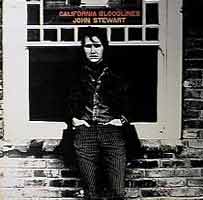 Der
Mann ist leider relativ unbekannt geblieben, sang zuvor im nicht so
tollen, aber erfolgreichen Kingston-Trio und hat u. a. für
die Monkees Hits geschrieben ("Daydream Believer").
Auf dieser Platte findet man sein anderes bekanntes Stück "July
You're A Woman" (würdet ihr alle wieder erkennen, wenn ihr's
hört!) Der
Mann ist leider relativ unbekannt geblieben, sang zuvor im nicht so
tollen, aber erfolgreichen Kingston-Trio und hat u. a. für
die Monkees Hits geschrieben ("Daydream Believer").
Auf dieser Platte findet man sein anderes bekanntes Stück "July
You're A Woman" (würdet ihr alle wieder erkennen, wenn ihr's
hört!) |
| Johnny Cash: "At San Quentin" (Columbia, Juni 1969) |
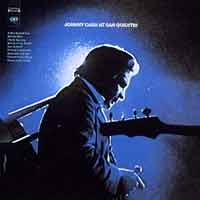 Kurz
nach "Folsom Prison"
bereits das zweite Livealbum aus dem Knast - und diesmal endlich Nr.
1 in den Albumcharts. Kurz
nach "Folsom Prison"
bereits das zweite Livealbum aus dem Knast - und diesmal endlich Nr.
1 in den Albumcharts. |
| Crosby, Stills & Nash (Atlantic, Juni 1969) |
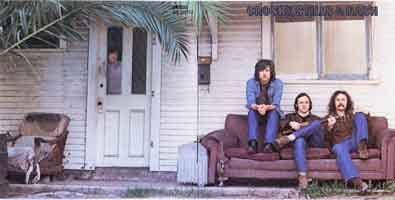 1969 trafen sich drei Ex-Mitglieder von recht erfolgreichen Bands, die aus
dem Stand deren Vorgaben noch getoppt haben: David Crosby hatte
die Byrds verlassen (McGuinn wollte für "5D"
angeblich "Triad" nicht aufnehmen), Stephen Stills
war mit den aufgelösten Buffalo
Springfield mittelprächtig erfolgreich und Graham Nash
hatte die Hollies verlassen (die wollten seinen "Marrakesh
Express" nicht aufnehmen). Endlich mal eine Supergroup, die nicht
enttäuschte: ihre Songs und ihre drei Stimmen zusammen waren eine
Offenbarung.
1969 trafen sich drei Ex-Mitglieder von recht erfolgreichen Bands, die aus
dem Stand deren Vorgaben noch getoppt haben: David Crosby hatte
die Byrds verlassen (McGuinn wollte für "5D"
angeblich "Triad" nicht aufnehmen), Stephen Stills
war mit den aufgelösten Buffalo
Springfield mittelprächtig erfolgreich und Graham Nash
hatte die Hollies verlassen (die wollten seinen "Marrakesh
Express" nicht aufnehmen). Endlich mal eine Supergroup, die nicht
enttäuschte: ihre Songs und ihre drei Stimmen zusammen waren eine
Offenbarung.
|
| The Grateful Dead: "Aoxomoxoa" (Warner, Juni 1969) |
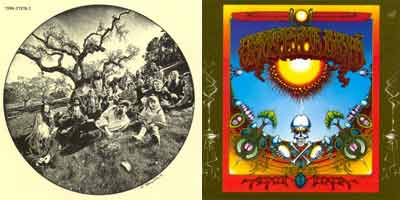 Der
dritte Streich meiner Helden, noch etwas unausgegoren, aber schon mit
einigen Klassesongs (z.B. "Saint Stephen" und "China
Cat Sunflower", fast alle Texte inzwischen von bandeigenen Lyriker
Robert Hunter und die Musik von Leadgitarrist Jerry Garcia
mit gelegentlicher Unterstützung von Bassist Phil Lesh),
denn ihre psychedelischen Exkursionen kamen erst live voll zur Geltung,
weshalb wenige Monate später auch das Live-Doppelalbum "Live/Dead"
erst den Durchbruch brachte. Im Studio gelangen die Bigpoints erst später
mit den Countryrockalben "Workingman's
Dead" und "American
Beauty" von 1970. Der
dritte Streich meiner Helden, noch etwas unausgegoren, aber schon mit
einigen Klassesongs (z.B. "Saint Stephen" und "China
Cat Sunflower", fast alle Texte inzwischen von bandeigenen Lyriker
Robert Hunter und die Musik von Leadgitarrist Jerry Garcia
mit gelegentlicher Unterstützung von Bassist Phil Lesh),
denn ihre psychedelischen Exkursionen kamen erst live voll zur Geltung,
weshalb wenige Monate später auch das Live-Doppelalbum "Live/Dead"
erst den Durchbruch brachte. Im Studio gelangen die Bigpoints erst später
mit den Countryrockalben "Workingman's
Dead" und "American
Beauty" von 1970. |
| Neil Young with Crazy Horse: "Everybody Knows This Is Nowhere" (Reprise, Juni 1969) |
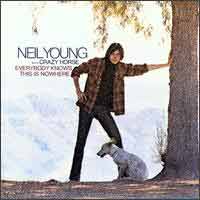 Bei
seiner zweiten Platte tat sich Neil Young mit Crazy Horse (Billy
Talbot, Ralph Molina und Danny Whitten) zusammen:
ein neuer Sound war geboren. Von mir erst relativ spät entdeckt
enthält die Platte bereits drei seiner besten Songs: "Cinnamon
Girl", "Cowgirl In The Sand" und "Down By The River". Bei
seiner zweiten Platte tat sich Neil Young mit Crazy Horse (Billy
Talbot, Ralph Molina und Danny Whitten) zusammen:
ein neuer Sound war geboren. Von mir erst relativ spät entdeckt
enthält die Platte bereits drei seiner besten Songs: "Cinnamon
Girl", "Cowgirl In The Sand" und "Down By The River". |
| Fairport Convention: "Unhalfbricking" (Island, Juli 1969) |
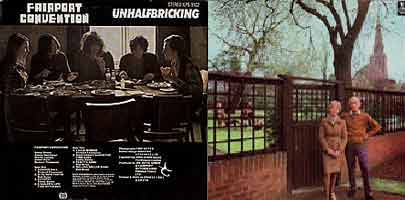 Ein Frühwerk der englischen Band, auf dem sie sich unter dem Einfluss
von Sängerin Sandy Denny noch stärker als beim Vorgänger
"What We Did On Our Hollidays" von
ihrer reinen Orientierung auf US-Singer/Songwriter-Musik lösen
und den Folk entdecken. "A Sailor's Life" deutet das an, was
die nächste Platte "Liege & Lief"
dann konsequent umsetzt. Richard Thompson und Simon Nicol
brillieren an den Gitarren, Ashley Hutchings ist am Bass dabei,
Martin Lamble trommelt vor seinem Unfalltod zum letzten mal,
Ian Matthews ist nach seinem Ausstieg nur noch bei einem Lied als
Gastsänger zu hören. Der damals bereits etablierte Folkgeiger
Dave Swarbrick taucht zum ersten Mal als Gast auf, bevor er später
fest zur Band stößt. Diese Platte habe ich mir bereits ca. 1974
zugelegt - wobei ich gar nicht mehr sagen kann, was mich damals schon
auf Folkrock gebracht hatte - und ist bis zum heutigen Tag mein Lieblinxalbum
der Band, eigentlich sogar eine meiner Lieblinxplatten überhaupt!
Ein Frühwerk der englischen Band, auf dem sie sich unter dem Einfluss
von Sängerin Sandy Denny noch stärker als beim Vorgänger
"What We Did On Our Hollidays" von
ihrer reinen Orientierung auf US-Singer/Songwriter-Musik lösen
und den Folk entdecken. "A Sailor's Life" deutet das an, was
die nächste Platte "Liege & Lief"
dann konsequent umsetzt. Richard Thompson und Simon Nicol
brillieren an den Gitarren, Ashley Hutchings ist am Bass dabei,
Martin Lamble trommelt vor seinem Unfalltod zum letzten mal,
Ian Matthews ist nach seinem Ausstieg nur noch bei einem Lied als
Gastsänger zu hören. Der damals bereits etablierte Folkgeiger
Dave Swarbrick taucht zum ersten Mal als Gast auf, bevor er später
fest zur Band stößt. Diese Platte habe ich mir bereits ca. 1974
zugelegt - wobei ich gar nicht mehr sagen kann, was mich damals schon
auf Folkrock gebracht hatte - und ist bis zum heutigen Tag mein Lieblinxalbum
der Band, eigentlich sogar eine meiner Lieblinxplatten überhaupt!

 Mehr ...
Mehr ...
|
by William Ruhlmann & Bruce Eder
Richard Thompson and Sandy Denny shine throughout this record, which is considered by some to be their Fairport peak together. The second album by a tragically short-lived Fairport Convention lineup. It seems top-heavy with Dylan tunes, three of them included, but they're done with such verve and freshness that they seem perfectly appropriate. As for the rest, Denny's performance on "Autopsy" is outshone only by her work on the apocalyptic nine-minute "A Sailor's Life," which is one of the great English folk-rock showcases ever recorded, a rival to such works as Phil Ochs' "Crucifixion" and Bob Dylan's "Desolation Row," as a song that just makes the listener "white out" inside, mouth open, when its over. Also highlighted by the definitive Denny recording of "Who Knows Where the Time Goes." And take in the powerhouse drumming, and realize what the band lost when Martin Lamble died.
|
|
| Isaac Hayes: "Hot Buttered Soul" (Stax, Juli 1969) |
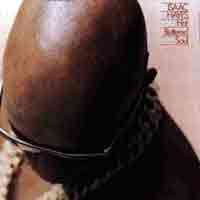 „...erlaubte sich bei seinem zweiten Solo-Album
Exzesse an Studio-Aufwand. Nach dem Motto `Soul goes symphonic´
arrangierte er seine Marathon-Kompositionen auf das üppigste mit
Streichern und legte mit `Hot Buttered Soul´ nebenbei eigentlich
auch bereits den Grundstein für den Discoboom der 70er Jahre.“
(Rolling Stone. 4 Sterne)
„...erlaubte sich bei seinem zweiten Solo-Album
Exzesse an Studio-Aufwand. Nach dem Motto `Soul goes symphonic´
arrangierte er seine Marathon-Kompositionen auf das üppigste mit
Streichern und legte mit `Hot Buttered Soul´ nebenbei eigentlich
auch bereits den Grundstein für den Discoboom der 70er Jahre.“
(Rolling Stone. 4 Sterne) |
| Creedence Clearwater Revival: "Green River" (Fantasy, Aug. 1969) |
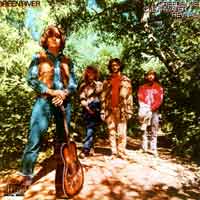 Das zweite von drei Alben innerhalb eines Jahres und ein weiteres absolutes
Highlight! Im Frühjahr kam schon das geniale "Born
On The Bayou" heraus, zum Jahresende sollte noch das für
meinen Geschmack schwächere "Willie & The Poorboys"
folgen. John C. Fogerty steht auf vorne auf dem Cover und auch
bei der Musik klar im Vordergrund: er war in Höchstform und schrieb
für dieses Album eine Reihe von Klassikern wie "Lodi"
oder "Bad Moon Rising", die natürlich jeder kennt. Aber
auch der Titelsong überzeugt. "Sinister Purpose" ist
wirklich sinister und das abschließende "Night Time Is The
Right Time" ist Garagenrock pur. Knappe 30 Minuten nur, aber am
Ende ist alles gesagt.
Das zweite von drei Alben innerhalb eines Jahres und ein weiteres absolutes
Highlight! Im Frühjahr kam schon das geniale "Born
On The Bayou" heraus, zum Jahresende sollte noch das für
meinen Geschmack schwächere "Willie & The Poorboys"
folgen. John C. Fogerty steht auf vorne auf dem Cover und auch
bei der Musik klar im Vordergrund: er war in Höchstform und schrieb
für dieses Album eine Reihe von Klassikern wie "Lodi"
oder "Bad Moon Rising", die natürlich jeder kennt. Aber
auch der Titelsong überzeugt. "Sinister Purpose" ist
wirklich sinister und das abschließende "Night Time Is The
Right Time" ist Garagenrock pur. Knappe 30 Minuten nur, aber am
Ende ist alles gesagt.

 Mehr ...
Mehr ...
"They say when you get lost in the woods, you should walk downhill until you find the river and then Revival, America was never that simple. They showed you why on their third album, the August 1969 masterpiece Green River. John Fogerty sings about a river, pure and unpolluted, with the power to "let me remember things I don't know." But his green river is alive with the noise of all the drowned souls it carries -- the ghost cries of flatcar riders and crosstie walkers, Pharaohs and Israelites, husbands and gamblers. Creedence bang out nine great songs in under thirty minutes as the pastoral beauty of "Green River" flows into the sexy nightmare of "Sinister Purpose."
CCR got looser and jammier on Green River, soaking in the Northern California air, but they stood apart from the San Francisco psychedelic bands - partly because of their blue-collar earthiness and partly because their drummer didn't suck. Fogerty's spit-and-growl voice was the purple-mountain majesty above the fruited plain of phenomenal rhythm section Doug Clifford and Stu Cook, California's answer to Wyman and Watts. The guys rambled their tamble while Fogerty ran down the road, chased by a tombstone shadow under a bad moon rising. Absurdly underrated as a lead guitarist - just listen to his terrifying one-note solo in "Tombstone Shadow" - Fogerty sang his hairy ass off in soulful ballads of struggles personal ("Lodi") and political ("Wrote a Song for Everyone"). Still, CCR were staunchly committed to the public pleasures of rock & roll, making music anyone could love at first listen, which is why their songs have been sung by everyone from Richard Hell to Def Leppard, from Tina Turner to the Minutemen, from the halls of Bonnie Tyler to the shores of Bon Jovi. In short, for a year or two there, Creedence were as great as any rock & roll band could ever be."
(Rolling Stone US)
If anything, CCR's third album Green River represents the full flower of their classic sound initially essayed on its predecessor, Bayou Country. One of the differences between the two albums is that Green River is tighter, with none of the five-minute-plus jams that filled out both their debut and Bayou Country, but the true key to its success is a peak in John Fogerty's creativity. Although CCR had at least one cover on each album, they relied on Fogerty to crank out new material every month. He was writing so frequently that the craft became second-nature and he laid his emotions and fears bare, perhaps unintentionally. Perhaps that's why Green River has fear, anger, dread, and weariness creeping on the edges of gleeful music. This was a band that played rock & roll so joyously that they masked the, well, "sinister" undercurrents in Fogerty's songs. "Bad Moon Rising" has the famous line "Hope you've got your things together/Hope you're quite prepared to die," but that was only the most obvious indication of Fogerty's gloom. Consider all the other dark touches: the "Sinister purpose knocking at your door"; the chaos of "Commotion"; the threat of death in "Tombstone Shadow" you only return to the idyllic "Green River" once you get lost and realize the "world is smolderin'." Even the ballads have a strong melancholy undercurrent, highlighted by "Lodi," where Fogerty imagines himself stuck playing in dead-end towns for the rest of his life. Not the typical thoughts of a newly famous rock & roller, but certainly an indication of Fogerty's inner tumult. For all its darkness, Green River is ultimately welcoming music, since the band rocks hard and bright and the melancholy feels comforting, not alienating.
(by Stephen Thomas Erlewine, All Music Guide)
RELEASED IN AUGUST 1969, a month before Woodstock, Green River is a crystalline expression of its time, a throwback to early rock'n'roll, and a visionary work that Imagines the world yet to come.
The album is bound to its time because it includes some important links in the string of remarkable hiss with which Creedence Clearwater Revival helped shape its era. "Green River," "Bad Moon Rising," "Lodi," and "Commotion" dehne the everyday quality of the band's music, the melodies and rhythms you seem to have known forever before you've heard them all the way through once.
That's what makes these songs throwbacks to pre-psychedelic rock'n'roll. Their kinship with the music of the '50s and the pre-Beatles '60s comes across in John Fogerty's New Orleans drawl and Doug Clifford's "Susie Q" backbeat, in the homage to Ray Charles in "The Night Time Is the Right Time" and the hints of rockabilly raveup in "Green River" and "Commotion". Even when he's taking guitar liberties that are absolutely late '60s, John Fogerty's songs distill an essence of rock'n'roll.
But this is not the late '60s in Haight-Ashbury; it's the late '60s of poor boys from an unhip town in the East Bay. The Green River album portrays the Future in darker terms than any other '60s rock band would have dared. Fogerty's fatalistic, desperate insights�a kind of realistic paranoia�crop up in the very first lines of the very first songs "Let me remember things I don't know," he sings and suddenly, you Sense that there's grimness lurking even in the bucolic bliss that is "Green River," a place that defines sweetness and joy. This guy is lost in a world grown cold�he's a modern Robert Johnson by that measure�and the only place he can think to turn is very likely a myth. ("Let me remember things I don't knovv Gould have been the motto of the greatest mythmaker of all, Ronald Reagan.)
The turmoil of the era is as real as 4/4 time and if what comes out of it isn't going to be a love revolution, disaster impends. That's the way Fogerty Sees it. He takes it personally in "Tombstone Shadow," vvith its very conscious echo of Johnson's "Crossroads", and "Lodi", which is the life he'd have lived if "Proud Mary" hadn't scored. But that's small potatoes. "Bad Moon Rising" offers a complete, social cataclysm. Fogerty sings in an Old Testament prophet's voice, warning the righteous and unrighteous alike. He sings like these Images and ideas�the earthquakes, the lightning, rivers overflowing, the voice of rage and ruin, the dread in the bass live�are pulled out against his will. He sings, in short, like the truth of the matter is just coming clear and leaves him with about half a prayer: `Hope you have got your things together / Hope you are quite prepared to die," Now the nature that offered solace in `Green River` has itself revealed a sinister purpose.
Within Green River, there is also another vision. It is halting, unsure of itself, but in the end it's just as powerful. "Wrote a song for Everyone" is perhaps John Fogerty's lost classic, a Statement of profound fatedness, related somehow to that scathing Strother Martin live from Cool Hand Luke � "What we have he-ah is a fail-yuh to comMUNikate" in a Southern voice exactly as affected, precisely as credible as Fogerty's. "Wrote a Song for everyone / And I couldn't even talk to you." If you knew soldiers stumbling home from 'Nam, civil rights workers crawling back from the South, revolutionaries who wound up face down in the mud of some farmer's field, then what Fogerty had to say fiere was past, present, and Future all wrapped up in one: "Saw the people standin' / Thousand years in chains / Someone Said it's different now / Look, it's just the Same."
It's not just that Fogerty can't communicate, that he's cast into some existential isolation. That would be a righteous boxe, as hordes of singer-songwriters sonn proved No, the thing that really makes him desperate is that John Fogerty is a true rock'n'roller and what he wants, more than anything, is to drill his point home, to make you believe that all he says is true, that if we don't stop turning our backs an love and one another, we really are going to wind up nothing but the shadow of our own headstones. Even more, he needs to know that he's drilled it down in the depth of his bones, and if he can't feel it, he's lost.
This is as far from `Green River" as you can get. It's not just a world where face overrules hope; it's a world where almost all that exists is despair. In a way, it's amazing that anyone this bitter, scarred, and scared Gould rise out of bed, let alone make music so heartbreaking.
Fogerty gets himself out of it in the usual fashion. He goes to church. That's all "The Night Time Is the Right Time" is, really. Sheer gospel, the letting loose of all the rage, yearning, and depression that these excursions into damnation have bottled up. Fogerty cuts most of it loose wich his mouth shut, through a blistering guitar solo. You can't say it's great gospel�it's not gospel any gospel Binger would recognize�but it purges Fogerty's soul, and that counts.
All that reflects a memory of things we don't know; it's not how Green River feels when you think back on it. I remember "Green River and "Bad Moon Rising" sluicing out of the radio, their beat an antidote to pretension, offering the joy inherent in hearing a great rhythm section speak its mind�a mind that may, indeed, have been at Cross purposes to the lyrics but then that's the whole purpose of having a band, right? Doug Clifford, Tom Fogerty, and Stu Cook were maybe the most underrated rhythm section in rock'n'roll in those days and just listening to them roll on these tight, dramatic Songs is sheer pleasure.
But when you listen, rather than just recall, there's an undertow that pulls you toward the nightmares and won't let go. Maybe it comes from the singularity of Fogerty's vision, or maybe it's just the residue of playing all those nights in "Lodi"-style bars. Maybe it's the commotion that 1969 left in everyone's head, maybe it's what happens when you have enough Stardom to look down and See where you came from, how far you now have to fall. (This was, after all, only Creedence's third album, only its second big hit.)
In the tumultuous world that its greatest album foresaw, Creedence Clearwater Revival is no longer mistaken for a teenybopper hit Singles band. Long after the hippies have been filed and forgotten, these East Bay working boys reign. And they should. They gave us everything they had�past, present, and future, vision and reality, love and fear�and it is not at all their fault that we have lived down to 1969's worst expectations. In a funny way, the fact that so mang of the permanent strangers who inhabit the black world of the 21 st century can still relate to the heart in this music is one of the few things that makes me want to live in it.
(DAVE MARSH, April 2000)
|
| Miles Davis: "In A Silent Way" (Columbia, Aug. 1969) |
|
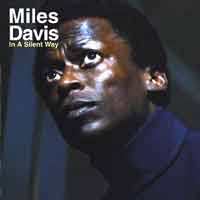 Miles beim übergang vom "normalen" Jazz zum Jazzrock, dieses
mal sehr leise (siehe LP-Titel!). Jeder seiner Begleiter war bzw.
wurde danach selber ein Star: John McLaughlin, Chick Corea,
Herbie Hancock, Wayne Shorter, Dave Holland,
Tony Williams und Josef Zawinul. Was für eine Mannschaft!
Miles beim übergang vom "normalen" Jazz zum Jazzrock, dieses
mal sehr leise (siehe LP-Titel!). Jeder seiner Begleiter war bzw.
wurde danach selber ein Star: John McLaughlin, Chick Corea,
Herbie Hancock, Wayne Shorter, Dave Holland,
Tony Williams und Josef Zawinul. Was für eine Mannschaft!
"In A Silent Way" entstand genauso wie schon "Birth
of the Cool" (1949) und "Kind
Of Blue" (1959) am Ausklang einer Dekade. Aufgenommen an
nur einem Tag, dem 18. Februar 1969, zeigt es Miles und seine Band
auf dem Sprung vom Akustik- hin zum Fusion-Klang. Die Musik klingt
sehr luftig und leicht, mit (noch) sehr zurückgenommenen Rhythmen.
Die Erweiterung der Band um Joe Zawinul (Orgel) und John McLaughin
(Gitarre) brachte aber schon Anklänge an das noch folgende Meisterwerk
(und neben "Kind Of Blue"
auch größten Verkaufserfolg) "Bitches
Brew".
|
| "Santana" (Columbia, Aug. 1969) |
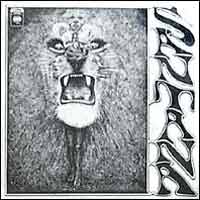 Das Debüt. Merkwürdigerweise eine meiner sehr späten Entdeckungen.
Aber auf jeden Fall um Klassen besser als das, was in den letzten Jahren
von Carlos und seiner Truppe samt Gaststars zu hören ist. Na ja
- gönnen wir ihm den spätem kommerziellen Erfolg!
Das Debüt. Merkwürdigerweise eine meiner sehr späten Entdeckungen.
Aber auf jeden Fall um Klassen besser als das, was in den letzten Jahren
von Carlos und seiner Truppe samt Gaststars zu hören ist. Na ja
- gönnen wir ihm den spätem kommerziellen Erfolg!
|
| Otis Rush "Mourning In The Morning" (Atlantic/Cotillion, Aug. 1969) |
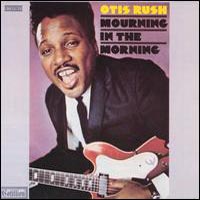
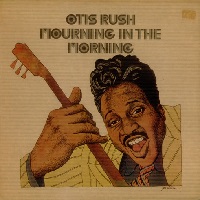

 Mehr ...
Mehr ...
Panned by many a critic upon its 1969 release, Otis Rush's trip to Muscle Shoals sounds pretty fine now (with the obvious exceptions of "My Old Lady" and "Me," which no amount of time will ever save). The house band (including Duane Allman and drummer Roger Hawkins) picks up on Rush's harrowing vibe and runs with it on the stunning "Gambler's Blues," a chomping "Feel So Bad," and a shimmering instrumental treatment of Aretha Franklin's "Baby I Love You."
(by Bill Dahl, All Music Guide)
|
| "Boz Scaggs" (Atlantic, Aug. 1969) |
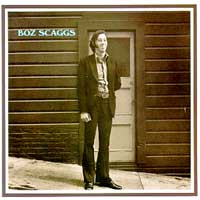 Zweites Soloalbum des ehemaligen zweiten Sängers/Gitarristen der
Steve Miller Band, aufgenommen in den berühmten Muscle Shoals-Studios
im tiefen Süden und produziert u. a. vom späteren(?) Rolling-Stone-Herausgeber
Jann Wenner. Eine der ersten Sternstunden des Gitarristen Duane
Allman. Ein kleine Anekdote am Rande: es gibt hier auch einen der
ersten Gesangsauftritte von Donna Godchaux, noch vor ihrer Zeit
mit Gatte Keith bei den Grateful Dead.
Zweites Soloalbum des ehemaligen zweiten Sängers/Gitarristen der
Steve Miller Band, aufgenommen in den berühmten Muscle Shoals-Studios
im tiefen Süden und produziert u. a. vom späteren(?) Rolling-Stone-Herausgeber
Jann Wenner. Eine der ersten Sternstunden des Gitarristen Duane
Allman. Ein kleine Anekdote am Rande: es gibt hier auch einen der
ersten Gesangsauftritte von Donna Godchaux, noch vor ihrer Zeit
mit Gatte Keith bei den Grateful Dead.
Ach so - die Musik? Wunderbarer Southern Rock mit viel Blues- und Soulgefühl.
(11.09.2004)

 Mehr ...
Mehr ...
Nach einem eher unbekannten Solo-Album namens „Boz“, welches in Schweden entstand, stieg Boz Scaggs bei der Steve Miller Band als Gitarrist und (zeitweise) Sänger ein. Das hielt nur zwei großartige Platten lang und Scaggs sollte `69 sein erstes "richtiges" Soloalbum aufnehmen, gloriose 44 Minuten, die er nie wieder übertraf.
Dazu ließ er den Psychedelik-Westcoast-Sound hinter sich und begab sich zur ersten Adresse im Süden: 3614 Jackson Highway, Muscle Shoals, Alabama.
Zu der Muscle Shoals Hausband mit den Gitarristen Jimmy Johnston, Eddie Hinton, David Hood (Bass), Barry Beckett (Keyboards) und Roger Hawkins (Drums) gesellte sich ein junger, mehr oder weniger unbekannter Gitarrist namens Duane “Skydog” Allman, der mit seinem atemberaubenden Spiel diesem Meilenstein den Goldstaub verpasste. Das 12-minütige “Loan Me A Dime” wurde durch die Gitarre-Gesang Call-und-Response-Technik von Duane und Boz zum weißen Bluesklassiker und Highlight ihrer Karriere. Aber neben Blues bot Boz auch siedend heißen Southern Soul, so wie das abschließende “Sweet Release”, welches sich mit Bläsern und Backgroundchären zu einem beinahe orgiastischen Ende steigert, dem sweet release halt. Mit “Waiting On A Train”, dem klassischen Jimmie Rodgers Hobo-Song, zeigt sich Scaggs von der Country-Seite, “I´ll Be Long Gone” ist ein weiterer schmachtender Blues-Song mit Soul-Feeling – alles perfekt. Ein Album für die Insel.
Und wer Scaggs von seinen späteren gelackten Lounge-Platten kennt (die auch immer wieder ihre kleinen Juwele hatten), der sollte das schnell alles vergessen – “Boz Scaggs” ist ein schwieliges, erdiges Southern-Soul-Blues überwerk.
Das Album wurde 1977 remixt und klingt auch ohne aktuelles Remastering wundervoll. Die Jungs (unter anderem wurde Rolling Stone Herausgeber Jann Wenner als Produzent gelistet) wußten, was sie taten."
Produced by Jann Wenner and featuring crack accompaniment by the Muscle Shoals house band, Scaggs's solo debut is a near-masterwork, mingling the pathos and heartbreak of vintage honky tonk with the celebration and release of Southern soul. The highlights of the album also flaunt its diversity: "Loan Me a Dime," an extended blues dirge, which features some of Duane Allman's finest work, and "Waiting on a Train," Scaggs's marvelous revamping of Jimmie Rodgers's classic hobo song.
(by Bruce Eder, All Music Guide)
|
| Muddy Waters: "Fathers And Sons" (Chess, Aug. 1969) |
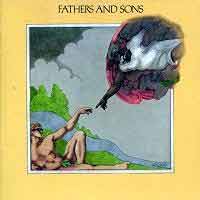 Dieses
Doppelalbum brachte Waters den Durchbruch beim Rockpublikum. Dazu wurde
eine der damals beliebten "Supersessions" angesetzt, die dieses
mal aber zu einem wunderbaren Ergebnis führte. Weitere "Väter"
waren: Otis Spann und der Drummer Sam Lay. Wir hören
die "Söhne" Paul Butterfield, Buddy Miles
und Michael Bloomfield. Dieses
Doppelalbum brachte Waters den Durchbruch beim Rockpublikum. Dazu wurde
eine der damals beliebten "Supersessions" angesetzt, die dieses
mal aber zu einem wunderbaren Ergebnis führte. Weitere "Väter"
waren: Otis Spann und der Drummer Sam Lay. Wir hören
die "Söhne" Paul Butterfield, Buddy Miles
und Michael Bloomfield. |
| The Beatles: "Abbey Road" (EMI/Parlophone, Sept. 1969) |
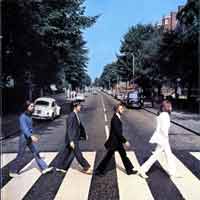 Eigentlich wollte ich die Platte hier gar nicht aufführen, denn
man glaubt sie ja in- und auswendig zu kennen - und es ist ja auch eine
viel zu offensichtliche Wahl. Auf jeden Fall habe ich mir "Abbey
Road" und das weiße Album frisch für meinen Auto-CD-Player
gebrannt und letzte Tage nacheinander weggehört. Und ich muss sagen:
klasse Platte, geht mir im Moment sogar besser als das weiße
Album rein. Auf der ersten Seite Hit auf Hit zum Mitsingen, auf
der zweiten Seiten (weil CD natürlich eine "gedankliche zweite
Seite"!) Lieder wie "Sun King" und "She Came In
Thru The Bathroom Window", die ich total vergessen hatte!
Eigentlich wollte ich die Platte hier gar nicht aufführen, denn
man glaubt sie ja in- und auswendig zu kennen - und es ist ja auch eine
viel zu offensichtliche Wahl. Auf jeden Fall habe ich mir "Abbey
Road" und das weiße Album frisch für meinen Auto-CD-Player
gebrannt und letzte Tage nacheinander weggehört. Und ich muss sagen:
klasse Platte, geht mir im Moment sogar besser als das weiße
Album rein. Auf der ersten Seite Hit auf Hit zum Mitsingen, auf
der zweiten Seiten (weil CD natürlich eine "gedankliche zweite
Seite"!) Lieder wie "Sun King" und "She Came In
Thru The Bathroom Window", die ich total vergessen hatte!

 Mehr ...
Mehr ...
It was a very happy record," said producer George Martin, describing this album in The Beatles Anthology. "I guess it was happy because everybody thought it was going to be the last." Indeed, Abbey Road -- recorded in two months during the summer of 1969 -- almost never got made at all. That January, the Beatles were on the verge of breakup, exhausted and angry with one another after the disastrous sessions for the aborted Get Back LP, later salvaged as Let It Be. Yet determined to go out with the same glory with which they had first entranced the world at the start of the decade, the group reconvened at EMI's Abbey Road Studios to make their most polished album: a collection of superb songs cut with an attention to refined detail, then segued together (especially on Side Two) with conceptual force. There was no thematic link, other than the Beatles' unique genius. John Lennon veered from the stormy metal of "I Want You (She's So Heavy)" to the exquisite vocal sunrise of "Because." Paul McCartney was saucy ("Oh! Darling"), silly ("Maxwell's Silver Hammer") and deliciously bitter ("You Never Give Me Your Money"). George Harrison proved his long-secret worth as a composer with "Something" (later covered by Frank Sinatra) and the folk-pop diamond "Here Comes the Sun," written in his friend Eric Clapton's garden after a grim round of business meetings. And Lennon, McCartney and Harrison reputedly sang more three-part harmony here than on any other Beatles album. Let It Be was the group's final release, but this album was their real goodbye: The completion of "I Want You (She's So Heavy)" on August 20th marked the last time all four members were together in the studio they had made famous.
(Rolling Stone)
Total album sales: 12 million
Peak chart position: 1
|
| Nick Drake: "Five Leaves Left" (Island, Sept. 1969) |
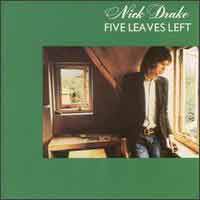 Ein Jahrhundertplatte! Absolut zeitlos! Bei den Songs fällt es mir
schwer, einzelne hervorzuheben: vielleicht "River Man" und
"Three Hours". In der Begleitung sind die damals auf Island-Platten
unverzichtbaren Richard Thompson von Fairport
Convention (Gitarre) und Danny Thompson von Pentangle
(Kontrabass) zu nennen. Tolle Streicherarrangements von Robert Kirby
und Harry Robinson.
Ein Jahrhundertplatte! Absolut zeitlos! Bei den Songs fällt es mir
schwer, einzelne hervorzuheben: vielleicht "River Man" und
"Three Hours". In der Begleitung sind die damals auf Island-Platten
unverzichtbaren Richard Thompson von Fairport
Convention (Gitarre) und Danny Thompson von Pentangle
(Kontrabass) zu nennen. Tolle Streicherarrangements von Robert Kirby
und Harry Robinson.

 Mehr ...
Mehr ...
Wer früh stirbt, hat noch ein langes Leben vor sich.
So lautet ein altbekannter Aphorismus im Showbusiness. Auf Janis Joplin,
Jimi Hendrix, John Lennon oder auch Elvis Presley trifft dieser Spruch fraglos
zu, und auch auf Nick Drake lässt er sich anwenden. Der Sänger
und Songschreiber aus Großbritannien war zu Lebzeiten kaum einem Menschen
bekannt, und die drei Alben, die er in der kurzen Zeitspanne seiner Musikerlaufbahn
aufnahm, verkauften sich damals auch nicht besonders gut. Als der scheue
und stets von psychischen Problemen geplagte Liedpoet dann im November 1974
an einer Überdosis Antidepressiva starb, begann allerdings langsam
sein Weltruhm.
Seine Gefolgschaft wuchs von Jahr zu Jahr, er wurde immer populärer
und inzwischen sind seine Werke längst als bahnbrechende Meilensteine
des Britfolk anerkannt. Seine Alben Five Leaves Left (1969), Bryter Layter
(1970) sowie Pink Moon (1972) liegen mittlerweile als Wiederveröffentlichungen
auf CD vor und wurden hierfür von Drakes damaligem Produzenten Joe
Boyd (Fairport Convention) klangtechnisch generalüberholt.
Auf seinem Debüt-Opus erleben wir den seinerzeit gerade einmal 21-jährigen
Künstler als einen grüblerischen Einzelgänger, der unter
Selbstzweifeln, Einsamkeit und Entfremdung leidet. Er spielt hier mit
Unterstützung von Pentangle-Bassist Danny Thompson einen schwermütigen
Akustikfolk, reichert seine Songs mit Barockstreichern an und singt dazu
in eingängigen Melodien von seinen Identitätskrisen, der eigenen
Sterblichkeit und depressiven Stimmungsqualen. Diese stillen Lieder sind
durchgehend todtraurig und doch kann man sich ihnen einfach nicht entziehen.
Ihr sensibler Zauber wirkt bis zum heutigen Tage fort.
(Harald Kepler, amazon)
|
|
| Peter Buck of R.E.M. once said that you could turn a Nick
Drake song up all the way, but it would still sound quiet. Drake's 1969
debut -- recorded while he was still at Cambridge University -- introduced
the world to his gorgeous, melancholy folk on songs such as "Time Has
Told Me." (Rolling Stone)
Total album sales: Under 500,000
|
|
| During his life-time, Nick Drake sold only a small amount
of records and played only a handful of concerts. His rise to prominence
in terms of reputation has been slow and gradual through the years. Word
of mouth helped his standing grow in England, a compilation or two for the
benefit of new generations. A TV advert recently in America brought this
most English of singer songwriters an amount of popularity world-wide. His
early tragic death has frozen him in time, of course. A shy, sensitive depressive
born with a skin too few. A soft, caressing voice over hypnotic folk and
jazz influenced guitar patterns. Little matter that Nick was actually a
happy child, growing up in a close family, and any form of depression only
really set in during the final three or four years of his life. Another
effect of being frozen time is being taken for granted - that the guitar
style Nick spent hours upon hours upon hours practising and perfecting -
was somehow a lucky twist of fate born into the world when Nick was. He
was blessed with natural talent of course, but days on end spent merely
tuning his guitar, playing figures and patterns, re-tuning, just snippets
that would later form the basis of songs. Nicks guitar playing is sometimes
overlooked when there is so much else on display through the poetic lyrics,
a gorgeous voice and the mystique surrounding his short time in this world.
The fact is, as well as all of those things, the guitar style of Nick was
completely unique to him, and has been unrepeatable since.
Opening with 'Time Has Told Me' is perfect, a wonderful way to open a
debut album, a statement of intent. All the Nick Drake trademarks are
present and correct. A lovely, lilting melody. Rich, deep and romantic
vocals. The guitar truly is hypnotic, I could just listen to that guitar
pattern over and over, all day long. 'River Man' which follows is bordering
on genius. The sound of Nick and acoustic is enhanced here by tasteful
string arrangements that sweep past and perfectly suit the melodies and
vocal lines. Nick sounds especially alluring and mysterious vocally through
this song. The lyrics are poetry and everything is just perfect. The guitar
is amazingly strong for acoustic guitar playing. 'Three Hours' was written
for a friend of Nicks. The lyrics are ever so slightly mysterious in their
poetry. So much so, that same friend didn't have the faintest idea what
the song was actually about. So, what chance the rest of us?! It hardly
matters, the words sound good when sung, the playing and singing as strong
and melodic as ever. 'Way To Blue' ditches the guitar entirely to concentrate
on orchestrated backing to highlight Nicks voice. A sad, beautiful and
mournful melody. Lyrics that sound so full of loneliness. So very lonely,
and going straight for the heart. Makes you want to hug somebody to comfort
them. So, powerfully strong emotionally, then? Well, yeah. Music works
best expressing the range of human emotions. But Nick expressed particular
emotions through 'Way To Blue' that perhaps have never been expressed
better by anybody else in music. And, that's some compliment. The guitar
returns for 'Day Is Done', a short little song to carry on from 'Way To
Blue' in a sense - but comes across more as a song of resignation. It's
no less beautiful for it though, and the string arrangements are something
else.
We were talking about emotions? Well, 'Cello Song' has a fair few for
you! A life-affirming joy, Nick sounds happy, the song full of a particular
energy bringing to mind a morning breaking in spring-time. It contrasts
with Nicks image of being perpetually Autumn. Early in the song he sings
'you have nothing to fear...' which is kind of nice. 'Thoughts Of Mary
Jane' continues the feeling of a hazy spring time, moving onto to a feeling
of spending a late afternoon with someone beautiful in a field of long
grass. 'the way she sings, and her brightly coloured rings....' and his
voice is just, ah..... just, well, so very romantic and touching. A brilliant
little guitar introduction leads into the breezy and jazzy 'Man In A Shed'.
It lacks the romance of other songs, but the performance is as good as
anything else here. 'Fruit Tree' is almost impossible to describe. Nick
sounds wise, lost, in his dying days. The strings are beautiful, the vocal
reaching into your heart and pleading. The guitar goes round, repeating
patterns, but changing them through variation, and the lyrics are some
of the best Nick ever wrote. 'Saturday Sun' rather than 'Fruit Tree' ends
the album. 'Fruit Tree' would have made a rather 'heavy' ending. 'Saturday
Sun' is subtly jazz influenced and utterly gorgeous - like being tucked
into a bed by a loved one. Really, it is! Well, I think so. Maybe you
will too.
(Adrian Denning)
|
|
| It's little wonder why Drake felt frustrated at the lack
of commercial success his music initially gathered, considering the help
he had on his debut record. Besides fine production from Joe Boyd and assistance
from folks like Fairport Convention's Richard Thompson and his unrelated
bass counterpart from Pentangle, Danny Thompson, Drake also recruited school
friend Robert Kirby to create most of the just-right string and wind arrangements.
His own performance itself steered a careful balance between too-easy accessibility
and maudlin self-reflection, combining the best of both worlds while avoiding
the pitfalls on either side. The result was a fantastic debut appearance,
and if the cult of Drake consistently reads more into his work than is perhaps
deserved, Five Leaves Left is still a most successful effort. Having grown
out of the amiable but derivative styles captured on the long-circulating
series of bootleg home recordings, Drake assays his tunes with just enough
drama — world-weariness in the vocals, carefully paced playing, and
more — to make it all work. His lyrics capture a subtle poetry of emotion,
as on the pastoral semi-fantasia of "The Thoughts of Mary Jane,"
which his soft, articulate singing brings even more to the full. Sometimes
he projects a little more clearly, as on the astonishing voice-and-strings
combination "Way to Blue," while elsewhere he's not so clear,
suggesting rather than outlining the mood. Understatement is the key to
his songs and performances' general success, which makes the combination
of his vocals and Rocky Dzidzornu's congas on "Three Hours" and
the lovely "'Cello Song," to name two instances, so effective.
Danny Thompson is the most regular side performer on the album, his bass
work providing subtle heft while never standing in the way of the song —
kudos well deserved for Boyd's production as well.
(Ned Raggett , All
Music Guide)
|
|
| Fleetwood Mac: "Then Play On" (Reprise, Sept. 1969) |
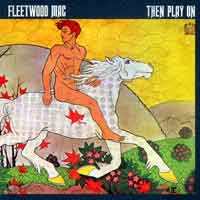 Eine recht späte Entdeckung! Natürlich kannte ich ein paar
der alten Hits, "Oh Well" und "Rattlesnake Shake"
habe ich auf einer "Greatest Hits"-Platte sogar schon seit
den 70ern im Regal stehen. Aber erst jetzt, nach etwa 30 Jahren, entdecke
ich dieses Album als ein wahres Juwel. Zu hören ist ein wunderschöner
Sound der drei Gitarristen (auf "Then Play On" sind
erst- und letztmalig Peter Green, Jeremy Spencer und Danny
Kirwan gemeinsam dabei), alles sehr relaxt, kein blödes Blues-gebolze
oder -geschrammel, sondern gute Songs von Green und dem damals 19jährigen
Neuzugang Kirwan.
Eine recht späte Entdeckung! Natürlich kannte ich ein paar
der alten Hits, "Oh Well" und "Rattlesnake Shake"
habe ich auf einer "Greatest Hits"-Platte sogar schon seit
den 70ern im Regal stehen. Aber erst jetzt, nach etwa 30 Jahren, entdecke
ich dieses Album als ein wahres Juwel. Zu hören ist ein wunderschöner
Sound der drei Gitarristen (auf "Then Play On" sind
erst- und letztmalig Peter Green, Jeremy Spencer und Danny
Kirwan gemeinsam dabei), alles sehr relaxt, kein blödes Blues-gebolze
oder -geschrammel, sondern gute Songs von Green und dem damals 19jährigen
Neuzugang Kirwan.
Mit dem Sänger, Songwriter und Ausnahmegitarristen Peter Green
an der Spitze praktizierten Fleetwood Mac zu Beginn ihrer Karriere authentischen
Blues, der sich nur wenig von den Vorlagen ihrer großen schwarzen
Vorbilder aus den USA entfernte. Mit der Veröffentlichung von "Then
Play On", welche die letzte LP Greens mit Fleetwood Mac werden
sollte, sprengten die Band im Herbst '69 aber die stilistischen Ketten
des Blues und boten experimentierfreudige, wie zugleich ausgereifte
Rockmusik höchster Güte, die ihre Blueswurzeln aber nicht
verleugnete.
Bei aller Freude am experimentieren und improvisieren, wie sie sich
in ausgedehnten Instrumentalpassagen zeigt, geht aber nie der musikalische
Faden verloren. Die exquisite Rhythm-Section (die Namenspaten Mick
Fleetwood und John McVie) liefert das Fundament, auf dem
sich die drei Gitarristen entfalten können. Der Gesamtsound ist
entsprechend gitarrenbetont, atmosphärisch variiert die Musik zwischen
kräftigem Rock ("Rattlesnake Shake") und ruhigen, harmonischen
Nummern ("Although the Sun is shining").
Bei "Then Play On" handelt es sich um eine erstklassige Rockscheibe,
die den Vergleich mit Klassikern der Branche wie "Electric
Ladyland" oder "Led Zeppelin
IV" keineswegs zu scheuen braucht. Leider wurde der Platte
nie die Anerkennung zuteil, welche sie verdient hätte. Ein Umstand,
der sich möglicherweise dadurch erklärt, dass sich das Blues-Publikum
der frühen Tage von Fleetwood Mac mit der Stiländerung nicht
so recht anfreunden konnte, während die Erfolge der ära nach
Peter Green mit einer stilistischen Hinwendung zum Pop einher gingen.
Liebhaber der künstlerisch äußerst fruchtbaren Phase
der Rockmusik Ende der 60er Jahre sind mit dieser Scheibe indes bestens
beraten.
(26.02.2004)

 Mehr ...
Mehr ...
Noch eine Anmerkung zum folgenden Zitat: mit "Almost
Blue" meint Wayne sicherlich "Kind
Of Blue"!
|
"Time isn't always very kind to seminal albums. Sgt.
Pepper, for all of its production flourishes and social impact, is not
The Beatles' best album nor their towering achievement. Almost Blue, inspite
of Miles Davis' inspired playing and developing compositional skills pales
in comparison to later greater works. Both have their place and their impact
on music and society haven't changed but hindsight has robbed them of much
of their greatness.
Fleetwood Mac's Then Play On is an exception to this rule. In spite of the
fact there is considerable filler on the album, the best material here is
unmatched anywhere else in the band or Green's canon. Much as the soaring
vocals of Lennon or McCartney and the playing of Davis overcame the obstacles
of weak material, Peter Green's anguished howling vocals and guitar playing
do the same here. Then Play On isn't the band's most consistent album but
Green's songs are still a remarkable towering achievement. Oh Well hurtles
over every other track on the album and bridges the gap between Green's
more traditional early blues compositions and the amazing single Green Manalishi.
Sadly, Green never returned to this level of powerful songwriting during
his brief early solo career.
There are other gems to be found on the album as well. Danny Kirwan's Coming
Your Way, Like Crying, Like Dying and Although The Sun is Shining rise to
the occasion and match Green's best work here. Rattlesnake Shake mines the
same terrain as Black Magic Woman and other Green compositions. What makes
the track so distinctive is that even on a song inspired by Mick Fleetwood's
inability to get laid, Green sounds as if he is singing and playing for
his life. Even the laid back Closing My Eyes hints at the emotional turbulence
in Green's life. Searching For Madge and Fighting For Madge are mere album
filler from Mick Fleetwood and John McVie. As jams go, they aren't bad but
they lack the directness and emotional intensity of the rest of the album.
The album closes on a track that could have come from the beginning; Before
The Beginning touches on the traditional blues style that Green loved so
much. On closer inspection, though, it's a 3 minute primal scream from Green's
soul for redemption.
This really was the end for Peter Green's version of the band. Sadly, both
he and Jeremy Spencer became involved with cults and, ultimately, succumed
to mental illness. The band soldiered on with Kirwan and Christine Perfect's
bluesy vocals and keyboards. The FM then went through a revolving door of
members. While the accomplishments of the more pop oriented FM are admirable,
they can't hold a candle to the emotional intensity of this remarkable album.
To give Lindsay Buckingham credit, he's come close on a number of occasions
(and remains one of the few members that can touch on the deep emotional
well that drove Green as well). A remarkable album Then Play On changed
many of the rules for white blues.
There's a great story that is told about the band. When they were playing
at Chess studios Willie Dixon heard a thrilling guitar solo as he entered
the studio. It ended before he saw the musician playing it. When he came
in he asked who the guitar player was. Everybody pointed to Peter Green.
Willie Dixon chuckled and said "I could of sworn you were black".
Peter smiled and replied, "No, I'm Green. Peter Green" That's
really all he needed to say and, not to slight the other talented performers
and writers in the band but it sums up the qualities that make this album
so amazing." (Wayne Klein © Thin Ice Publications, Inc.) |
|
| Love: "Foursail" (Elektra, Sept. 1969) |
|
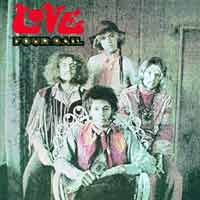 Weniger erfolgreich als der Vorgänger "Forever
Changes" und eine radikale Abkehr von dessen filigranem Sound:
mit neuer Mannschaft hatte Arthur Lee in seiner eigenen Garage
dieses wahrhafte "Garagenrock"-Album ohne technischen Firlefanz
aufgenommen - und mit dem Ergebnis viele Leute enttäuscht. Unter
anderem seine alte Plattenfirma ("Love For Sale" - falls
irgendjemand das Wortspiel immer noch nicht erkannt haben sollte!).
Auch ich entdecke dieses letzte Werk für Elektra erst jetzt mit
Verspätung und stelle fest: eine klasse Platte. Und völlig
egal, ob sie nun zu "Forever Changes" passt und deren Qualitätsstandard
hält oder auch nicht!
Weniger erfolgreich als der Vorgänger "Forever
Changes" und eine radikale Abkehr von dessen filigranem Sound:
mit neuer Mannschaft hatte Arthur Lee in seiner eigenen Garage
dieses wahrhafte "Garagenrock"-Album ohne technischen Firlefanz
aufgenommen - und mit dem Ergebnis viele Leute enttäuscht. Unter
anderem seine alte Plattenfirma ("Love For Sale" - falls
irgendjemand das Wortspiel immer noch nicht erkannt haben sollte!).
Auch ich entdecke dieses letzte Werk für Elektra erst jetzt mit
Verspätung und stelle fest: eine klasse Platte. Und völlig
egal, ob sie nun zu "Forever Changes" passt und deren Qualitätsstandard
hält oder auch nicht!
"Vom Original-Line-Up ist nur Arthur Lee geblieben,
der für die durchweg sehr potenten Songs verantwortlich ist und
dem Band-Sound eine deutlich härtere Richtung gibt. Natürlich
fällt das Album gegenüber dem epochalen Vorgänger „Forever
Changes“ ab und wurde folglich von der Kritik eher negativ bewertet,
aber im Ernst, wie sollte Lee einen solchen Geniestreich wiederholen?
30 Jahre später sollte man die Meinung revidieren und sich dieses
remasterte Album zu den anderen Love-CDs stellen..." (Glitterhouse).
|
| John Mayall: "Turning Point" (Polydor, Sept. 1969) |
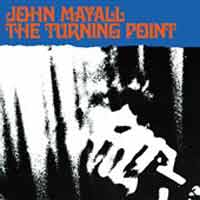 Auf
diesem Livealbum aus dem New Yorker Fillmore East wurde John Mayall
nur von Steve Thompson (Bass), Jon Mark (Akustikgitarre)
und Johnny Almond (Sax, Flöte) - also ohne Schlagzeuger
- begleitet. Viele kennen den Song "Room To Move", auf dem
Mayall an der Bluesharp zaubert. Dies war eine der besten Mayall-Bands.
Jon und Johnny machten sich danach bald als Duo "Mark-Allmond"
mit mittelprächtigem Erfolg selbständig. Auf
diesem Livealbum aus dem New Yorker Fillmore East wurde John Mayall
nur von Steve Thompson (Bass), Jon Mark (Akustikgitarre)
und Johnny Almond (Sax, Flöte) - also ohne Schlagzeuger
- begleitet. Viele kennen den Song "Room To Move", auf dem
Mayall an der Bluesharp zaubert. Dies war eine der besten Mayall-Bands.
Jon und Johnny machten sich danach bald als Duo "Mark-Allmond"
mit mittelprächtigem Erfolg selbständig. |
| Laura Nyro: "New York Tendaberry" (Columbia, Sept. 1969) |
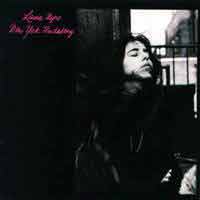 Sie veröffentlichte ihr erstes Album 1966 mit 19 Jahren, schrieb
damals Hits für die Fifth Dimensions, Blood, Sweat &
Tears u. a., blieb aber bei uns immer obskur. Dies ist ihr drittes
Album, das ich vor langen Jahren mal auf einem Schallplattenflohmarkt
erstanden habe. Die Qualität der Platte ist mir damals zuerst noch
entgangen.
Sie veröffentlichte ihr erstes Album 1966 mit 19 Jahren, schrieb
damals Hits für die Fifth Dimensions, Blood, Sweat &
Tears u. a., blieb aber bei uns immer obskur. Dies ist ihr drittes
Album, das ich vor langen Jahren mal auf einem Schallplattenflohmarkt
erstanden habe. Die Qualität der Platte ist mir damals zuerst noch
entgangen.

 Mehr ...
Mehr ...
Bronx-born Laura Nyro was a jazz-poet white soul singer-songwriter years before Joni Mitchell and Rickie Lee Jones. She soon became known as a hit songwriter, as her tunes became hits for Peter, Paul and Mary, the Fifth Dimension, and others. After a disastrous appearance at Monterey Pop in 1967, Nyro recovered with a couple of idiosyncratic, allusive, almost stream-of-consciousness LPs that were suprisingly successful. But she spent most of the next thirty years in retirement before her death in April of 1997, and her reputation is mostly built on what she accomplished in her late teens and early twenties.
(DBW, Wilson&Alroys Record Reviews)
Although New York Tendaberry was nearly as strong a record as its predecessor, Eli and the Thirteenth Confession, it wasn't as accessible. In large part that's because, unlike her first two albums, it didn't have three or four songs that would become instantly recognizable hits in the hands of other artists. But it was also because the mood of the record was considerably darker and the production quite a bit starker. It was hardly a gloomy affair, but the emphasis was on soulful laments and arrangements that often featured, in part or whole, nothing but her voice and piano. Without at all sounding blatantly derived from gospel, it often sounded very much in the spirit of gospel in its fervid passion, though using melodies from a wide pop/blues-soul canvas and addressing concerns far more secular and personal. There were crafty, dramatic punctuations of orchestration, yet these were far more subdued than they had been on the more jubilant Eli and the Thirteenth Confession. "Save the Country" (along with the upbeat section of "Time and Love") is really the only song here that has the immediate uplifting impact of her most famous early tunes, and even that track could have benefited from a less-bare setting. It's a rewarding album, but one that takes some effort to fully appreciate. The 2002 CD reissue adds two bonus tracks: the mono single version of "Save the Country," which has a far fuller arrangement than the album take, and the jaunty, previously unreleased "In the Country Way."
(by Richie Unterberger , AMG)
Schmutz und Leid, Anmut und Schmerz, dies ist "New York Tendaberry", Laura Nyro's Meisterwerk. Das Gewebe aus großer Schönheit und schmerzhaften Metaphern ist nicht für die Pop-orientierte Masse gedacht, welche die leicht verdaulichen Versionen von "Save the Country" und "Time and Love", interpretiert von anderen, gewohnt ist.
Nyro's Stimme, ebenso tröstend wie voller Verzweiflung, nimmt beide Songs mit auf ihre ganz eigene, verwickelte Reise. Man stellt sich 24 Stunden im Leben einer urbanen New Yorkerin vor, sie ist dabei ebenso Beobachterin wie Objekt. Sie wacht auf, als ihr Mann sie verlässt ("You Don't Love Me When I Cry"), nimmt uns an die Hand um ihr in die U-Bahn zu folgen um dort freudvolle Harmonien mit dem Echo der Züge zu singen ("Mercy on Broadway") um dann zur "Gibsom Street" zu fahren. Es wird Ihnen, wenn Sie empfindsam sind, ein Schauer den Rücken herunterlaufen, denn man hängt streunende Katzen in der Gibsom Street. Am Ende, in der kraftlosen, tiefen Nacht, eine kurze Feier in ihrer Nachbarschaft mit explodierenden Knallfröschen, Staub und Dahingleiten. Doch sie kommt zurück auf den Boden der Tatsachen, als sie durch silbernen Tränen auf die Menschlickeit, die ihr Leben begleitet, blickt ("New York Tendaberry").
Dieser letzte Song der LP ist der Höhepunkt der LP. Laura Nyro's unglaubliche Stimme und Darstellungskraft sind aus dieser Zeit, jetzt. So war es und wird für alle, die diese außergewöhnliche Künstlerin lieben und ihr zuhören wollen, immer sein.
Nyro wechselt von samtweichem leisem Gesang plötzlich zu expressiven Schreien, treibt die dynamische Spannbreite an die Grenzen. Meist arrangiert sie die Instrumente sehr sparsam, was den Titeln mit Band und/oder Orchester umso mehr Wucht verleiht. Alles fordert die Schneide- und Presskunst ganz besonders heraus. Das Pure-Pleasure-Team hat das 2008 vorbildlich hinbekommen.
(MINT, Oktober 2022)
|
| King Crimson: "In The Court Of The Crimson King" (Island/E'G, Okt. 1969) |
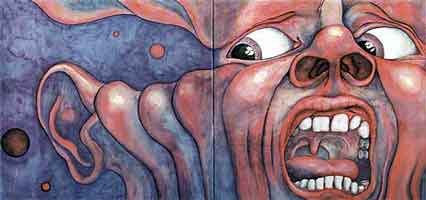
Das tolle Debüt von Robert Fripps Supertruppe. Unerreicht
und mit nichts anderem vergleichbar. Jeder kennt dieses Cover. Es
zierte in den frühen 70ern auch die Tür einer Freakkneipe
in Duisburg, an der wir damals auf unserem Weg mit der Straßenbahn
nach Duisburg-Mitte, meist auf dem Weg zum Amsterdam-Record-Shop,
oft vorbeikamen. Wir waren von dem Bild beeindruckt, ohne zuerst zu
wissen, um was es sich dabei handelte.
Damals gab's in England die ersten Mellotrons (über Keyboard
abgespielte Tonbandschleifen, meist von Geigen und Flöten; kennt
man auch von "Stairway To Heaven"), bei deren Verwendung
sich neben den Moody Blues King Crimson hervortaten. Auf dieser
Platte wird es von Ian McDonald (außerdem an Saxofon und Flöte)
bedient. Greg Lake singt und spielt Bass, so gut wie nie mehr
danach. Mike Giles an den Drums ist der Wahnsinn. Die Texte
stammen durchweg von Pete Sinfield, der sogar als nicht musizierendes
Bandmitglied geführt wurde. Anspieltipps: alles, vor allem aber
die schöne Ballade "I
Talk To The Wind", lange Zeit von Waiting For Louise
gecovert.

 Mehr ...
Mehr ...
The group's definitive album, and one of the most daring debut albums ever recorded by anybody. At the time, it blew all of the progressive/psychedelic competition (the Moody Blues, the Nice, etc.) out of the running, although it was almost too good for the band's own good -- it took King Crimson nearly four years to come up with a record as strong or concise. Ian McDonald's Mellotron is the dominant instrument, along with his saxes and Fripp's guitar, making this a somewhat different-sounding record from everything else they ever did. And even though that Mellotron sound is muted and toned down compared to their concert work of the era (e.g., Epitaph), it is still fierce and overpowering, on an album highlighted by strong songwriting (most of it filled with dark and doom-laden visions), the strongest singing of Greg Lake's entire career, and Fripp's guitar playing that strangely mixed elegant classical, Hendrix-like rock explosions, and jazz noodling. Lineup changes commenced immediately upon the album's release, and Fripp would ultimately be the only survivor on later King Crimson records.
(by Bruce Eder, All Music Guide)
|
| Taj Mahal: "Giant Step" (Columbia, Okt. 1969) |
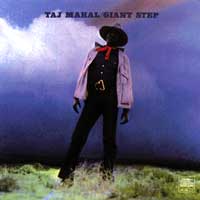 Ein weitere Glanztat von Taj Mahal! An der Gitarre brilliert bei dieser
Bluesplatte ("Blues" im weiteren Sinne) Jesse Ed Davis.
Ein weitere Glanztat von Taj Mahal! An der Gitarre brilliert bei dieser
Bluesplatte ("Blues" im weiteren Sinne) Jesse Ed Davis.
|
| The Band (Capitol, Okt. 1969) |
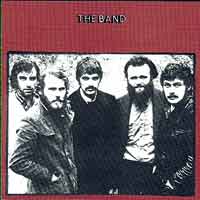 Die zweite Geniestreich der Fünf. Der Streit der Fans geht dahin,
welche der beiden Platten die bessere ist: für mich bilden beide
die Essenz ihres Gesamtwerkes, danach nie mehr erreicht, obwohl auch
die anderen Platten nicht schlecht sind, sogar die der Reunionplatten
ohne Robertson und Manuel aus den 90ern gefallen mir. Anspieltipps:
"Rag Mama Rag", "Up On Cripple Creek", "The
Night They Drove Old Dixie Down", "Unfaithful Servant".
Erwähnenswert noch eine bekannte & bizarre deutsche Coverversion
von "Dixie": "Am Tag Als Connie Kramer starb" von
Juliane Werding. Der dämliche deutsche Text hat aber nix
mit dem Original zu tun. Und das Arrangement stammt wohl auch eher von
Joan Baez etwas süßlicher Coverversion von 1971.
Die zweite Geniestreich der Fünf. Der Streit der Fans geht dahin,
welche der beiden Platten die bessere ist: für mich bilden beide
die Essenz ihres Gesamtwerkes, danach nie mehr erreicht, obwohl auch
die anderen Platten nicht schlecht sind, sogar die der Reunionplatten
ohne Robertson und Manuel aus den 90ern gefallen mir. Anspieltipps:
"Rag Mama Rag", "Up On Cripple Creek", "The
Night They Drove Old Dixie Down", "Unfaithful Servant".
Erwähnenswert noch eine bekannte & bizarre deutsche Coverversion
von "Dixie": "Am Tag Als Connie Kramer starb" von
Juliane Werding. Der dämliche deutsche Text hat aber nix
mit dem Original zu tun. Und das Arrangement stammt wohl auch eher von
Joan Baez etwas süßlicher Coverversion von 1971.

 Mehr ...
Mehr ...
„Music From Big Pink“ war erschienen und bekam
durchweg glänzende Reviews, war aber ein Gegenentwurf zum augenblicklichen
musikalische Trend und dem Lebensgefühl der späten 60s („It
was `Don´t trust anybody over 30. Hate your mom! Hate your dad!´
And a lot of other things that didn´t really make a lot of sense“,
erklärt Levon Helm). So dauerte es etwas, bis sich jeder über
die einsame Klasse dieser Platte im Klaren war. The Band gab keine Interviews
und Liveauftritte konnten keine anberaumt werden, weil Rick Danko sich bei
einem der vielen Band-Autounfälle zwei Halswirbel brach („I was
a little too drunk, a little too high“). Für touren war eh nicht
viel Zeit, denn die Band bereitete schon die Aufnahmen für ihr zweites
Album vor, welches sie „Harvest“ nennen wollten. „It was
like we had planted our seed“, erklärte Robertson, „and this
was the fruit that we were finally getting from all the work we had done
in all those years“. Man entschied sich später für „The
Band“, weil es tatsächlich um ihren Namen einige Verwirrung gab.
Das idyllische Woodstock in Upstate New York war zu diesem Zeitpunkt zu
einem völlig überlaufenen Städtchen verkommen. Jeder wollte
Dylan beim Einkaufen treffen, und so zog The Band es vor, ihr zweites Album in L.A. aufzunehmen.
Um die gewohnte Big Pink Atmosphäre des ungezwungenen Musizierens nachzustellen,
mieteten sie das Anwesen von Sammy Davis Jr., zogen mit ihren Familien ein
und bauten das Poolhaus zu einem Studio um. Fenster wurden vernagelt, Wände
schalldicht gemacht und man richtete es sich bequem ein (das kann man im
Innencover der LP und JAP-CD gut nachverfolgen). Capitol kam aber einen
Monat nicht mit dem Recording-Equipment ran, sodaß man im zweiten
nur 9 der 12 Songs aufnehmen konnte. Richard Manuel besorgte jede Menge
Amphetamine, um die Aufnahmen zu beschleunigen.
Die Arbeit begann Abends um 7 Uhr mit dem Kreiren der Arrangements. Produzent
John Simon dazu: „We took great care with every instrument to make
it sound different for every song and appropriate for every song“.
Nach einem reichhaltigen Abendessen wurde geübt, gefeilt, verworfen
und geändert. Nach Mitternacht rollte dann die Bandmaschine. Als der
Rest der Band ins Bett ging, veredelte „Honey Boy“ Garth Hudson
die Songs noch mit Keyboards und Bläsern. Ein Großteil des Materials
war zumindest teilweise schon zu Big Pink-Zeiten geschrieben worden, hatte
den gemeinsamen Formungsprozess aber noch nicht gänzlich durchlaufen.
Es war Anfang `69 und The Band war auf der Höhe ihres Schaffens. Das
Ensemblespiel hatte traumhafte Ausmaße angenommen, die Verschmelzung
der drei Lead-Stimmen geriet nie besser, und die Instrumente wurden je nach
Song getauscht. So sitzt bei fast der Hälfte der Aufnahmen Richard
Manuel am Schlagzeug, der einfach unglaubliches leistet. Nachzuvollziehen
am besten beim „Classic Albums“ Video, wo Levon oder Robbie so
manches mal nur die Schlagzeug-Spur laufen lassen und vor Freude ins Gnicheln geraten.
The Band war wirklich eine der wenigen Bands, die aus fünf gleichwertigen
Individuen bestand, die ihr Können in den Dienst des Ensembles stellten.
Keinen hätte man austauschen können, ohne den Bandsound nicht
grundlegend zu verändern und der alte Spruch, „die Summe der fünf
Musiker war weit größer als ihre Einzelteile“, passte nie beser als hier.
Nachdem 9 Songs in LA eingespielt waren, mußten die Sessions unterbrochen
werden, denn The Band hatte Impressario Bill Graham den Zuschlag gegeben,
drei Auftritte in San Francisco´s Winterland zu spielen. Es waren
die ersten Gigs nach 3 oder 4 Jahren, es gab keine Press oder Interviews,
nur Fotos von 5 bärtigen Hinterwäldlern. Die Erwartungshaltung
des Publikums wuchs ins Grenzenlose. „We were scared shitless“,
sagt Levon Helm und es kam vor dem ersten Auftritt zum psychosomatischen
Totalzusammenbruch von Gitarrist Robbie Robertson. Nach zwei Vorbands (Ace
Of Cups und Sons Of Champilin) mußten die 5.000 Konzertbesucher ganze
3 Stunden warten, bis ein Hypnotiseur Robbie so fitmachte („Your legs
are like iron springs“), daß er 35 Minuten durchhielt. Natürlich
fühlte sich die Menge betrogen. Die Show am Freitag und Samstag liefen
besser, ebenso die 4 Auftritte im Fillmore East einige Wochen später.
Im April `69 stellten sie ihr zweites Album in der Hit Factory New York
fertig, „Up On Cripple Creed“, „Whispering Pines“ und „Jemima Surrender“ wurden hier aufgenommen.
„Summer of `69. No interviews, no publicity, really, and we´re
still a mystery.“ (Aus Levon Helm´s Buch). Auftritte beim Toronto
Pop Festival und Woodstock folgten und einige Wochen danach spielten Bob
Dylan & The Band auf der Isle Of Wight.
„The Band“ erschien im September `69 und erreichte Platz 9 der
Charts. Die ausgekoppelte Single „Up On Cripple Creek“ kam bis
auf Rang 25 und blieb die einzige Top-30 Single der Band.
Die Reviews waren ekstatisch und „The Band“ taucht bis heute regelmäßig
als „Klassisches Album“ in Listen wichtiger und unwichtiger Leute
auf. Für mich ist sie die Inselplatte!
Das ganze Album klingt reif und abgeklärt, wie ein Relikt aus einer
längst vergangenen Zeit, and die man sich gerne erinnert. Das reicht
vom Frontfoto (5 erwachsene, düster dreinblickende, bärtige Männer)
über die braune, erdige Grundfarbe des Covers bis hin zum Foto auf
dem Backcover, wo sie glatt als Stringband aus dem 19. Jahrhundert durchgehen
könnten.
Die Verbindung vieler musikalischer Traditionen mit den bildreichen Texten
über den amerikanischen Bürgerkrieg, das Leben im frühen
20. Jahrhundert, als noch Minstrel-Shows, Scharlatane und Jahrmärkte
durch das Land zogen und den genau gezeichneten Figuren – von Virgil
Kane bis Ragtime Willie – funktionierte besser als je zuvor. Songs
wie „Rockin Chair“ und „When You Awake“ vermittelten
das Bild von zufriedenen alten Leuten auf ihrer Veranda, bereit Geschichten
aus ihrem langen Leben zu erzählen. Dazu sind Songs wie „Across
the Great Divide“, „The Night They Drove Old Dixie Down“,
„Up On Cripple Creek“ und „King Harvest“ über die
Jahre zu absoluten Klassikern geworden.
Der zweite Song „Rag Mama Rag“ zeigt die Arbeitsweise der Band
aufs Beste: Rick Danko an der Fiddle, Garth Hudson am funky Piano, Levon
Helm mit der Mandoline, Richard Manuel am Schlagzeug und John Simon an der
Tuba. Kein Bass. „To me this track had the makings of a hit single.
It had this rhythm, it was over quick, and danceable. But I´ve been
wrong before.“ (Levon Helm). „The Night They Drove Old Dixie Down“
ist eine Geschichte über den Bürgerkrieg aus der Sicht der Südstaaten
und einer der überzeugendsten Story-Songs aus Robertson´s Feder.
Natürlich war die Stimme des Arkanasas´ Boys Levon Helm wie geschaffen
für diesen Song. Auch „Up On Cripple Creek“ hat dieses gegerbte
Old Time Feeling: Garth Hudson jagt sein Calvinet durch ein WahWah-Pedal
und erzeugt so eine Art Maultrommel-Sound. Mit „Whispering Pines“
folgt einer der wunderschönsten Songs des Albums, der zwar selten zu
den Highlights gezählt wird, aber zu meinen absoluten Favoriten zählt.
Diese von Richard Manuel gesungene Ballade hat mich noch nie unbeeindruckt
gelassen.
Auf dem vorletzten Song „Unfaithful Servant“ hat Rick Danko als
Sänger eine Sternstunde. Die faulkneristische Geschichte aus den Südstaaten
beeindruckt weiterhin durch das Akustikgitarrensolo und das traurig-schwebende
Klarinetten-/Saxophon Duett, mit dem der Song perfekt ausklingt.
Schließlich erzählt „King Harvest (Has Surely Come)“
vom Leiden der Farmer der Depressions-Ära, für die ein Sommer
ohne Regen oftmals das Ende bedeutete. Der 3-stimmige Chorus ist leiser
als die von Levon mit Leidenschaft gesungenen Verse. Nach dem Chorus steigt
diese unglaubliche Doppel-Bassnote ein, die den Songs förmlich nach
vorne boxt (Robertson weist im Video auf diese Stelle hin). Der Song endet
mit einem fast 40-sekündigen Gitarrensolo, eines der wenigen auf der
ganzen Platte. „It was the last thing we cut in California, and it
was that magical feeling of `King Harvest´ that pulled us through.
It was like, there, that´s The Band.“ (Levon Helm)
Robbie Robertson soll mal gesagt haben, daß die Songs auf „The
Band“ wie Kapitel in einem Buch seien. Tauscht man die Kapitel aus,
verändert man die Geschichte. Nicht bescheiden, aber völlig richtig.
(Glitterhouse)
The Band's first album, Music From Big Pink, seemed to come out of nowhere,
with its ramshackle musical blend and songs of rural tragedy. The Band,
the group's second album, was a more deliberate and even more accomplished
effort, partially because the players had become a more cohesive unit
and partially because guitarist Robbie Robertson had taken over the songwriting,
writing or co-writing all 12 songs. Though a Canadian, Robertson focused
on a series of American archetypes from the union worker in "King
Harvest (Has Surely Come)" and the retired sailor in "Rockin'
Chair" to, most famously, the Confederate Civil War observer Virgil
Cane in "The Night They Drove Old Dixie Down." The album effectively
mixed the kind of mournful songs that had dominated Music From Big Pink,
here including "Whispering Pines" and "When You Awake"
(both co-written by Richard Manuel), with rollicking uptempo numbers like
"Rag Mama Rag" and "Up on Cripple Creek" (both sung
by Levon Helm and released as singles, with "Up on Cripple Creek"
making the Top 40). As had been true of the first album, it was the Band's
sound that stood out the most, from Helm's (and occasionally Manuel's)
propulsive drumming to Robertson's distinctive guitar fills and the endlessly
inventive keyboard textures of Garth Hudson, all topped by the rough,
expressive singing of Manuel, Helm, and Rick Danko that mixed leads with
harmonies. The arrangements were simultaneously loose and assured, giving
the songs a timeless appeal, while the lyrics continued to paint portraits
of 19th century rural life (especially Southern life, as references to
Tennessee and Virginia made clear), its sometimes less savory aspects
treated with warmth and humor. The 2000 CD reissue featured seven bonus
tracks.
(by William Ruhlmann, All Music Guide)
|
| Mighty Baby (Head, Okt. 1969) |
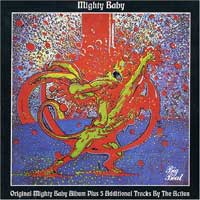 Lost And Found!
Lost And Found!
(28.10.2006)

 Mehr ...
Mehr ...
This hour-long CD is one of the best bodies of British psychedelia ever released. It contains the complete Mighty Baby album from Head Records, expanded to 13 tracks with the addition of five tracks cut by the Action during its 1967 transition period. The opening number, "Egyptian Tomb," sets the tone for the entire album -- in terms of content, structure, and beat, it sounds like the early Allman Brothers, or maybe the Grateful Dead in one of their harder-rocking moments, jamming with Crosby, Stills, Nash & Young on an impromptu version of CSN's "Pre-Road Downs." The beauty of the original Mighty Baby album tracks is that they're psychedelia with a solid beat, none of that noodle-rock that drugged-up Brits usually engaged in. "A Friend You Know But Never See" mighthave passed muster on the Byrds' Notorious Byrd Brothers album. Other songs noodle around too much, but overall this is some of the most energetic psychedelia to come out of England, and anyone who enjoys psychedelic guitar will love Martin Stone's and Alan King's work on this album. The bonus tracks, all "lost" demos, are even better: highly rhythmic, driving rock (check out "Understanding Love") with lots of spacy guitar and tougher-than-normal flower-power introspective lyrics, with some gorgeous harmonies dressing it all up -- a near perfect meld of garage rock and psychedelic sensibilities.
(by Bruce Eder, All Music Guide)
One of the great debut albums of all time by the UK's Mighty Baby.
Mighty Baby- "Mighty Baby" [Head Records 1969] Sometimes refered to as the "Egyptian Tomb" LP.
by Bob Mickey Spillane, host of The Dangerous R&R Show
Mighty Baby's self titled debut, one of the greatest of all psychedelic records of the 60's, was languishing in obscurity for over 10 years before Psycho Records reissued it in the 80's. After what was a limited pressing it went back in limbo until the advent of CD's when the word eventually got around and it's now considered a psychedelic classic. Hard to find on vinyl when it came out and even harder to find these days at garage sales, attics, musty & moldy basements, or even auctions, it's a skillful blend of psych, jazz, great melodies & songwriting. At it's core the music is wrapped around the instrumental dexterity of Martin Stone and Ian Whiteman's mesmerizing woodwind and keyboard passages.
Mighty Baby was formed in 1968 around Alan "Bam" King [guitar), Mike Evans (bass) and Roger Powell (drums), all were founding members of one of the UK's greatest Mod groups, The Action. Late-period arrivals Martin Stone (guitar, ex-Savoy Brown) and Ian Whiteman (piano, saxophone) completed the lineup and Mighty Baby was born. Stone & Whiteman actually joined the latter days of The Action making what would be known as "The Action/Mighty Baby Demos". Most of my record collecting acquaintances bow their heads and speak in hushed tones when the subject of Mighty Baby comes up. "You donzt have an extra copy kicking around? Do you? It doesn't have to be Mint....I'll take a beat up copy.. just so I have one, you know?"
But I digress.....as mentioned before, the roots of Mighty Baby lie in The Action, a mod band from London who formed in 1963 and gained a healthy following due to their powerhouse live shows and a clutch of five finger poppin' singles released between the years 1965 and 1967 on the Parlophone label. But as the mid 60's turned into the late 60's, striped bell bottoms and frilly chest baring Rod Stewart tops were being turned in for kaftans and acid tabs all around London. [Has anyone told Rod that he's a wee bit not happening these days? I mean really....The Cole Porter Songbook?!!??] Musical barriers weren't just being kicked down they were demolished and conciousness was being expanded. The Action was there front and center ready to mount their assault.
The initial change came when Action acquired guitarist Martin Stone and pianist Ian Whiteman into their fold. Stone was fresh from a stint of trying to psychedelicize Savoy Brown. As the story goes, Stone got Savoy Brown busted for drugs when he was searched at the airport and was promptly tossed out on his arse.....who knows how these rumors start?....you be the judge. One day I will have Martin Stone on The Dangerous R&R Show and we'll ask him. With two highly proficient and willing new members, The Action saw their opportunity to "Tune In, Turn On & Drop Out".
The Action loved jazz and while Mingus & Miles were admired they adored the king of freedom, John Coltrane. When Ian Whiteman joined the band they developed their particular style of "freeform" by covering Coltrane's INDIA. Mighty Baby's recording of this song is only available on a CD entitled FROM THE ATTIC. A live recording made in 1971, discovered in the attic of one of the members, and released by the band. The CD claims "That's all there is, there is no more". When Mighty Baby started playing their rock-fueled version of India with a belly full of enthusiasm and a head full of blotter, they confused the mods and sent dope soaked hippies into outer space.
The quintet's self-titled debut album, released on Head Records in 1969, starts with what is considered their theme song....
EGYPTIAN TOMB: What is this glorious racket coming out of my speakers? What instruments are creating that melody? From the opening my ears are standing up straighter than Lyndon B. Johnson's beagle at a photo shoot. Whitemans' sax [left channel] and Stones' guitar [right channel] are seamless and yet altogether miles apart. Then all of a sudden the chorus comes crashing down and I'm on my knees asking...no.. begging for more. A wonderful blend of jazz, rock and melody seemingly improvised but somehow you know that this isn't possible! Martin Stones' over amplified guitar notes seem liquid.....caressing every nuance....gaining momentum until it's dissipated finality. 5 minutes / 30 seconds of brilliance.
A FRIEND YOU KNOW BUT NEVER SEE: is lighter fare... maybe ....rolling piano, powerful drumming and guitarwork that is certainly skinny dipping in the "Oil-0-Joy" with a riff that The Bevis Frond might have borrowed for "African Violet" this is one outstanding track.
I'VE BEEN DOWN SO LONG: the band dips into the west-coast vibe, Whiteman trading in his sax for piano and again the interplay between he and Stone stands out. Michael Evans flexes his muscle on bass and it's Stone's turn to pan left to right. Ahhh.....it was almost 1970 but the lads were keeping the 60's alive for sure.
SAME WAY FROM THE SUN: Martin begins in the left channel working his way to the middle setting the stage for Alan Bam King..excellent vocal! The song morphs into a psych rave this time Stone jamming with himself. Just when it seems that the song is over [a big psych crash] the band comes fading back, speeding up things and here Whiteman shines on the big B-3 Hammond.
HOUSE WITHOUT WINDOWS: the laid back vibe is evident. Stone setting the pace, Whiteman picking it up for the first verse, a staggered chorus then back to the main theme, second chorus leading into another Stone mind-melting solo! Big business, Atom bombs, fighting for the Queen, reasons to exist again...."in a house without windowsz in a house where no wind blows"... Indeed.
TRIALS OF A CITY: rockin' in the Status Quo vein here..excellent production.. guitars, piano, sax, bass, drums....fun stuff with one of my favorite studio tricks, hand claps.
I'M FROM THE COUNTRY: opens with Stones' acoustic but it only takes a couple of bars before the band is in full bloom with their early take on "Americana". Martin Stone demonstrates that he's comfortable with a variety of styles, here taking on the Clarence White [Byrds] style of country rock guitar.
AT A POINT BETWEEN FATE AND DESTINY: recalls the pastoral musings of fellow countrymen, Barclay James Harvest. The rhythm is laid down with the acoustic guitar and Whiteman adds some soaring B-3 organ. Every passing minute gets you closer to the patented Mighty Baby jazz/rock improvisation. The tension is there teasing you but never quite fulfilling the promise making you want to turn the record back to side one for more.....brilliant IMHO.
Having dipped into that intoxicating world of psychedelia, I can say that this is perhaps one of the best debuts of the 60's, most certainly on every psychedelic record collectors top 10 list.
(Bob Mickey Spillane, It's Psychedelic Baby Magazine, 23.12.2013)
|
| The Pentangle: "Basket Of Light" (Transatlantic, Okt. 1969) |
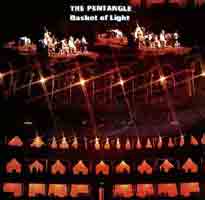 Pentangle
waren einzigartig: zwei erfolgreiche Folksänger und Akustikgitarristen
(Bert Jansch und John Renbourn) taten sich mit einer Jazz-Rhythmusgruppe
(Terry Cox und Danny Thompson) und einer Sängerin
mit Elfenstimme (Jacqui McShee) zusammen und spielten sich mit
ihren eigenwilligen und einzigartigen Mixtur aus Folk und Jazz bei diesem
3. Album sogar auf Platz 5 der britischen Charts! Pentangle
waren einzigartig: zwei erfolgreiche Folksänger und Akustikgitarristen
(Bert Jansch und John Renbourn) taten sich mit einer Jazz-Rhythmusgruppe
(Terry Cox und Danny Thompson) und einer Sängerin
mit Elfenstimme (Jacqui McShee) zusammen und spielten sich mit
ihren eigenwilligen und einzigartigen Mixtur aus Folk und Jazz bei diesem
3. Album sogar auf Platz 5 der britischen Charts! |
| The Tony Williams Lifetime: "Emergency" (Verve, Okt. 1969) |
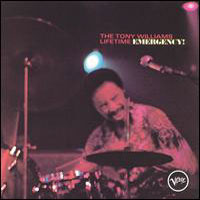 Ein Klassiker des Jazzrock - und eines der legendärsten Trios im
Jazz: Trommler Tony Williams, Gitarrengott John McLaughlin
(vor seinem Durchbruch) und Orgel-Geheimtipp Larry Young, dem
heimlichen Star dieser Platte.
Ein Klassiker des Jazzrock - und eines der legendärsten Trios im
Jazz: Trommler Tony Williams, Gitarrengott John McLaughlin
(vor seinem Durchbruch) und Orgel-Geheimtipp Larry Young, dem
heimlichen Star dieser Platte.
(17.08.2011)

 Mehr ...
Mehr ...
Tony Williams' Emergency was one of the first and most influential albums in late-'60s fusion, a record that shattered the boundaries between jazz and rock. Working with guitarist John McLaughlin and organist Larry Young, Williams pushed into new territory, creating dense, adventurous, unpredictable soundscapes. With Emergency, Tony Williams helped create the foundation of the style and sound of fusion. It's a seminal release, originally released on two albums and now available on one CD.
(by Leo Stanley, All Music Guide)
|
| Jefferson Airplane: "Volunteers" (RCA/Grunt, Nov. 1969) |
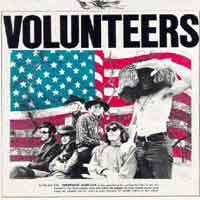 Musikalisch und textlich sicherlich einer der Höhepunkte in der
Bandgeschichte. Zur Stammbesetzung um Paul Kantner (v,g), Marty
Balin (v), Grace Slick (v), Jorma Kaukonen (g), Jack
Casady (bg) und Spencer Dryden (dr) kamen Nicky Hopkins
am Piano, der besonders in "Wooden Ships", das David Crosby
mit textlicher Unterstützung von Stephen Stills und Paul
Kantner schrieb, glänzt. Das Stück gefällt mir hier
sogar noch viel besser als bei CS&N. "Eskimo
Blue Day" ist ein weiteres sehr schönes Lied, das später
vom Gun Club genial gecovert wurde.
David Crosby, Stephen Stills, aber auch Jerry Garcia,
waren mit im Studio.
Musikalisch und textlich sicherlich einer der Höhepunkte in der
Bandgeschichte. Zur Stammbesetzung um Paul Kantner (v,g), Marty
Balin (v), Grace Slick (v), Jorma Kaukonen (g), Jack
Casady (bg) und Spencer Dryden (dr) kamen Nicky Hopkins
am Piano, der besonders in "Wooden Ships", das David Crosby
mit textlicher Unterstützung von Stephen Stills und Paul
Kantner schrieb, glänzt. Das Stück gefällt mir hier
sogar noch viel besser als bei CS&N. "Eskimo
Blue Day" ist ein weiteres sehr schönes Lied, das später
vom Gun Club genial gecovert wurde.
David Crosby, Stephen Stills, aber auch Jerry Garcia,
waren mit im Studio.

 Mehr ...
Mehr ...
"For many people, Jefferson Airplane represent all
that was simple-minded and naive about the West Coast psychedelic experiment.
As a result, they've never enjoyed the retrospective spotlight as much as
dud contemporaries such as The Doors, but I can't help wondering whether
that's got more to do with what they got up to after the Airplane touched
down. I mean, Jefferson bleedin' Starship?
But go right back to the source and every one of their first six records
boasts some transcendent moments. The Airplane perfected the surging, group-mind
approach and their music always felt communal and free - but, unlike such
fellow travellers as The Grateful Dead, who specialised in temporally extended
song-forms, their sound was much more compact and implosive. Everyone contributed
equally to the squall: vocalist Marty Balin was one of the great psychedelic
songwriters while Grace Slick's vocals were euphoric and powerful - and
in Jorma Kaukonen they had one of the finest acid guitarists.
While 1967's After Bathing At Baxter's is probably their greatest achievement,
I always find myself coming back to 1969's Volunteers. Despite catching
the Airplane at perhaps their most self-conscious and further cementing
their image as truly clueless urban guerillas, its beautiful, utopian sense
of striving to really say something - anything! - makes it a genuinely moving
experience.
Plus there are some great songs, all inspiringly arranged - especially We
Can Be Together, with its rallying cry of: ''Up against the wall, motherf***er!''
It still brings a tear to my eye." |
|
| Captain Beefheart & His Magic Band: "Trout Mask Replica" (Reprise, Nov. 1969) |
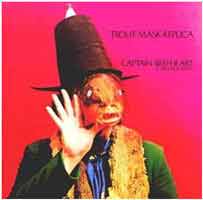 Das Meisterwerk des Captains, produziert von Frank Zappa, völlig
FAR OUT zu seiner Zeit und auch heute noch absolut wunderbar, verwirrend
und zersetzend. Ich muss gestehen, dass ich die Platte nicht oft hören
kann und vermute, dass das auch bei vielen anderen Leuten so ist. Trotzdem
taucht das Album in vielen Bestof-Listen auf! Ob die Leute die Platte
wirklich immer gehört haben, oder sie nur aufführen, weil
man dieses Album als Musikfreak gut findet muss? Egal. Ich gebe zumindest
zu, dass ich Don Van Vliet in seiner frühen "kommerziellen"
Phase auf den beiden "Spot"-Alben von 1972 ("Clear
Spot" und "The Spotlight Kid") noch lieber höre.
"Kommerziell" dabei natürlich nur im relativen Sinne.
Das Meisterwerk des Captains, produziert von Frank Zappa, völlig
FAR OUT zu seiner Zeit und auch heute noch absolut wunderbar, verwirrend
und zersetzend. Ich muss gestehen, dass ich die Platte nicht oft hören
kann und vermute, dass das auch bei vielen anderen Leuten so ist. Trotzdem
taucht das Album in vielen Bestof-Listen auf! Ob die Leute die Platte
wirklich immer gehört haben, oder sie nur aufführen, weil
man dieses Album als Musikfreak gut findet muss? Egal. Ich gebe zumindest
zu, dass ich Don Van Vliet in seiner frühen "kommerziellen"
Phase auf den beiden "Spot"-Alben von 1972 ("Clear
Spot" und "The Spotlight Kid") noch lieber höre.
"Kommerziell" dabei natürlich nur im relativen Sinne.

 Mehr ...
Mehr ...
|
"Diese Platte könnte man nach mehreren Gesichtspunkten
beurteilen: nach ihrer Bedeutung für andere Musiker, nach ihrer absoluten
Einmaligkeit von 1969 bis heute und zuletzt nach subjektiven Eindrücken
eines Individuums, welches die Scheibe zu besprechen versucht. Ich will
versuchen vor allem den beiden letztgenannten Aspekten gerecht zu werden.
Don Van Vliet verdankt seinen Spitznamen "Captain
Beefheart" dem alten Schulkumpel Frank Zappa, mit dem er in den frühen
60ern in diversen kurzlebigen Bands zusammenspielte. Frank Zappa ermöglichte
als Produzent auch das Entstehen des Doppelalbums "Trout Mask Replica"
(Beefheart hatte seit 1965 Schwierigkeiten seine Aufnahmen zu veröffentlichen),
später gastierte Beefheart auf Zappas "Hot Rats"-Album,
die beiden nahmen auch gemeinsam die Scheibe "Bongo Fury" auf.
"Trout Mask Replica" bietet hauptsächlich
Avantgarde/Jazz-Einflüsse (wie z.B. Ornette Coleman und Cecil Taylor)
mit einer Prise Blues oder Boogie, eine Band die die krümmsten Rhythmen
groovig umsetzt, dazu die tiefe, rauhe, unvergleichliche Stimme Beefhearts,
von der man sagt, dass sie in höheren Registern manchen Mikrophonen
nicht gut bekommt. (Eine Stimme, die vielleicht manche Skeptiker auch
an einen betrunkenen Matrosen erinnern könnte...)
Legendenbildung scheint zu dieser personifizierten Schrägheit
gut zu passen, es wird auch u.a. berichtet, dass das dichte, durchkomponierte
Doppelalbum "Trout Mask Replica" in einem Take live aufgenommen
wurde. Das Album klingt manchmal sicherlich etwas (nach)lässig, man
(der Produzent?) war bestimmt mehr an Authentizität als an Perfektion
interessiert. Es finden sich hier auch Studiogespräche, mindestens
einmal wird ein zum Song gehörender Dialog wiederholt. Dann noch
die abgefahrenen, poetischen Texte Beefhearts, die hier im Sprechgesang,
manchmal a capella, ab und zu etwas holprig, einem schwer nachvollziehbaren
Rhythmus folgend, oft staccatoartig merkwürdigsten Wortspielereien
ausstoßend daherkommen... Das und die Malerkarriere von Beefheart,
für die er die Musik Anfang der 80er aufgab und nun umgeben von seltenen
Pflanzen und Tieren zurückgezogen am Rande der Mojave-Wüste
lebt, ergibt ein Bild eines verrückten Genies.
Gelegentlich erscheinen auf "Trout Mask Replica"
auch neurotische, narrative oder kreischende Stimmen unterschiedlicher
Herkunft, die oft von free-jazzigen Sax- oder Klarinettensolos begleitet,
auf klassische Schönheit fixierte Hörer wahrscheinlich in die
Flucht schlagen werden. Oft klingt das Ganze als würde der Schlagzeuger,
die rhythmisch-melodischen Gitarren und die Stimme gegeneinander und jedoch
zusammen jedes für sich einem eigenen Rhythmus folgen, das ergibt
mindesten drei Rhythmen übereinander, einfach genial... Abwechselnd
entscheiden sich die Mitstreiter entweder an einem Strang zu ziehen oder
wie eben beschrieben etwas Gemeinsames durch scheinbare Widersprüche
zu erschaffen.
Es fehlen auch einige wenige reine Instrumentalparts nicht,
die manchmal etwas zappaesk anmuten, wie z.B. "Veteran's day poppy".
Bezüglich "Trout Mask Replica" scheinen sich viele Musikinteressierte
ob ihrer Bedeutung ziemlich einig zu sein, wer jedoch beispielsweise mit
freieren Musikformen nix anfangen kann, wird auch an dieser Scheibe keine
Freude haben.
Trotzdem ein Meisterwerk."
|
|
| Scott Walker: "Scott 4" (Phillips, Nov. 1969) |
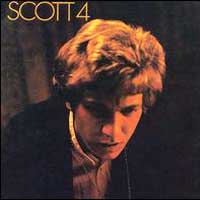

 Mehr ...
Mehr ...
|
Walker dropped out of the British Top Ten with his fourth album, but
the result was probably his finest '60s LP. While the tension between
the bloated production and his introspective, ambitious lyrics remains,
much of the over-the-top bombast of the orchestral arrangements has been
reined in, leaving a relatively stripped-down approach that complements
his songs rather than smothering them. This is the first Walker album
to feature entirely original material, and his songwriting is more lucid
and cutting. Several of the tracks stand among his finest. "The Seventh
Seal," based upon the classic film by Ingmar Bergman, features remarkably
ambitious (and relatively successful) lyrics set against a haunting Ennio
Morricone-style arrangement. "The Old Man's Back Again" also
echoes Morricone, and tackles no less ambitious a lyrical palette; "dedicated
to the neo-Stalinist regime," the "old man" of this song
was supposedly Josef Stalin. "Hero of the War" is also one of
Walker's better vignettes, serenading his war hero with a cryptic mix
of tribute and irony. Other songs show engaging folk, country, and soul
influences that were largely buried on his previous solo albums. (by Richie
Unterberger, AMG)
|
|
| The Grateful Dead: "Live/Dead" (Warner, Dez. 1969) |
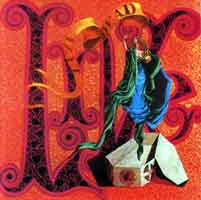 Dieses Live-Doppelalbum ist die Quintessenz der Dead, die hier vor allem
bei der Kollektivimprovisation "Dark Star" zur Höchstform
auflaufen. Vorhergehende Studioproduktionen hatten nie die Livequalität
der Band erreicht.
Dieses Live-Doppelalbum ist die Quintessenz der Dead, die hier vor allem
bei der Kollektivimprovisation "Dark Star" zur Höchstform
auflaufen. Vorhergehende Studioproduktionen hatten nie die Livequalität
der Band erreicht.

 Mehr ...
Mehr ...
| "AMONGST most music critics there still persists this
cliched idea that somehow the Velvets and the Dead were the two opposing
flip-sides of psychedelic rock; sort of punks vs hippies, amphetamines vs
hallucinogens, east coast vs west coast, blah blah blah. Yet The Grateful
Dead did just as much to completely rewrite the rules as The Velvets. They
took American folk and blues and stretched them to infinity, turning them
inside out with flashy mescaline-inspired improvisations that summoned storms
of volcanic feedback and in-the-red levels of distortion well before the
likes of Sonic Youth (themselves acknowledged fans). And although studio
experiments such as 1968's Anthem Of The Sun and 1975's Blues For Allah
are mightily satisfying, it's only live that the Dead really start to levitate.
Live/Dead was the first live album ever to be recorded on 16 tracks and
the sound quality is truly stellar. Drawn from two 1969 shows at San Francisco's
Avalon and Carousel Ballrooms, it showcases the classic line-up in all their
multi-faceted glory, from the space-rock of the classic Dark Star through
the lunacy of Turn On Your Love Light. One headphone session with this monster
will forever alter your relationship with time and space. Just don't forget
to come back." |
|
|
The first in an endless row of the Grateful Dead's trademark double live
albums and one of the best-loved ones. Tired of mimicking their live craft
in the studio, or, at best, interpolating live stuff with pointless studio
overdubs, the Dead finally agreed here to follow the usual way and split
into a 'live band', putting out their real live experiences, and a 'studio
band', putting out well-crafted studio recordings. Not that the two sides
of the band wouldn't ever be meeting from now on, but for the most part,
all of the band's acid excesses were now left on genuine live albums.
Like this one.
If you find out you hate the album, don't despair. It's certainly not
for everybody. But let me tell you this, brothers and sisters - there
is a way to enjoy the album, and the way lies in the album's incredible
diversity. Oh well, wait a bit, it's not actually that diverse, because
it's the Grateful Dead after all, and they don't do no Roy Wood kind of
freakshow; they got their own. But what strikes me on here is that none
of the seven tracks actually sound similar; all follow slightly different
patterns, and you get to witness the Dead in all kinds of 'environments'
- it's not just the notorious "acid jams" that you're gonna
get, but rather a vast palette of styles and moods. I doubt that anybody
but the most loyal Deadheads would enjoy the record in its entirety, though;
most probably, you won't like all of these styles, and even I certainly
don't. What good is there still makes the record well worth owning, though.
Actually, there's only one "acid jam" on there, the massive,
epic 'Dark Star' that opens the album. This is a number you have to get
used to, but you know - you have to get used to it. An excellent amalgam
of blues and jazz, all mostly played in a minor key for further moodiness,
it showcases Garcia at his very, very best. Frankly speaking, I really
don't know how it is theoretically possible to play all these twenty-minute
solos without dropping dead at the end. The only person I know who's capable
of doing that is Clapton, and we all know that Clapton is God, now don't
we? But truthfully, Jerry's masterful and atmospheric passages on 'Dark
Star' are quite comparable with some of Clapton's best jams in Cream.
Particularly impressive is the moment when Jerry goes 'duelling' with
Bob Weir and the entire band just goes crazy without you even noticing
it - everything is so smooth and well-controlled that even in the very
middle of this endless jam they can still take you by surprise.
Exhausted on that one, the band rips into an inspired rendition of 'St
Stephen', completely obliterating the studio original. It's one of the
shorter tunes on here, but also one of the tightest and most easily accessible
- it's just a folksy little chant, after all. Then the band goes really
raunchy and rockin' on the stomping jam 'The Eleven', where they are faster
and angrier than anywhere else on the album. Then there's time for about
fifteen minutes worth of goofiness: Pigpen steps in with an exaggerated,
schizophrenic rendition of the old R'n'B song 'Turn On Your Lovelight'.
Then they get into 'blues mode', playing a lengthy, drawn-out, bleeding
little blooze number appropriately called 'Death Don't Have No Mercy'.
Then things get weird again, with a lengthy, drawn-out, bleeding little
noisefest appropriately called 'Feedback'; and after abusing our ears
for so long, the Dead close with a few farewellish vocal harmonies ('And
We Bid You Goodnight'). Whatever the actual length of these pieces might
be, you at least gotta give them their due - they're not overexhausting
our patience. Well, not my patience, at least. My patience has learned
how to stretch itself out through the long years full of hardship and
toil and listening to too much Captain Beefheart. My patience is cool
and relaxed; what about your patience, dear Sir?
That said, patience is one thing, and pure enjoyability is another. Like
I said, you probably won't like every style they tackle. Listen to me
now. Me - I can easily tolerate 'Dark Star', because it's really dark
and really trippy and really takes you places, all the time never stopping
you from tapping your foot and keeping within the groove. And I can easily
tolerate 'St Stephen', and to a lesser extent, 'The Eleven' and 'Death
Don't Have No Mercy': the latter might be just ten minutes of generic
blues, but it sets such a creepy, somber mood, that I take it. However,
I just can't understand the very meaning of 'Turn On Your Love Light'.
My hypothesis is that it's just Pigpen fooling around and trying to kill
time or something. I mean, take something like the Stones' 'Goin' Home',
throw out the cool guitar lines and the exaggerated, hilarious vocals,
throw in a drunk unfunny clown and you guarantee yourself some prime boredom.
Likewise, I won't accept anything like 'Feedback' in my world. If you
want something really noisy and messy, go listen to Amon Düül
II and spare yourself all that American feedback psychedelia crap. Even
if you deem such things to be 'mind-liberating', there simply were lots
of bands doing the noise schtick much better.
With all these faults, it's obvious I can't grant the album a maximum
rating; even so, let's at least not forget that it's a double one and
they managed to fit it all on one CD, so you can just disregard the twenty
five minutes of stupid filler and concentrate on the fifty minutes of
the really interesting stuff. Simply put, I highly doubt that in the America
of 1969 there ever existed a band capable of producing something like
'Dark Star' on the stage. Certainly not Quicksilver Messenger Service,
who took their 'professional' duties far lighter than the Dead. And definitely
not the Airplane, as Jorma Kaukonen never had the ace guitar skills of
Garcia; besides, whenever that band entered 'jam mode', it was like they
rather were playing 'lightweight pothead' music, while the Dead were playing
'serious pothead' music. Feel the difference? Hey, you don't really NEED
to be a pothead to feel the difference!
(by George Starostin,
Only Solitaire)
|
|
| Fairport Convention: "Liege & Lief" (Island, Dez. 1969) |
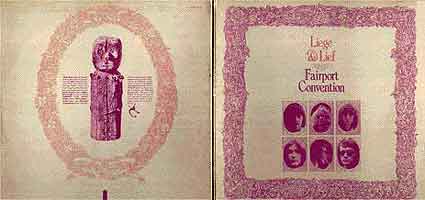 Nachdem es sich schon auf der gerade mal ein halbes Jahr alten letzten
Platte "Unhalfbricking" schon
andeutete, war man hier im Folkrock angelangt und spielte mit elektrischen
Gitarren und Schlagzeug vor allem altenglische Volkslieder, was die
Folkpuristen ihnen und besonders Dave Swarbrick ähnlich
übel nahmen, wie Dylans seinen Wechsel von Folk zu Rock damals
auf dem Newport-Festival. Der neue Drummer hieß Dave Mattacks,
Bandgründer Ashley Hutchings war zum letzten Mal dabei.
Sandy Denny singt in Höchstform. Anspieltipps: "Come
All Ye", "Matty Groves" und das Thompson/Swarbrick-Original
"Crazy Man Michael".
Nachdem es sich schon auf der gerade mal ein halbes Jahr alten letzten
Platte "Unhalfbricking" schon
andeutete, war man hier im Folkrock angelangt und spielte mit elektrischen
Gitarren und Schlagzeug vor allem altenglische Volkslieder, was die
Folkpuristen ihnen und besonders Dave Swarbrick ähnlich
übel nahmen, wie Dylans seinen Wechsel von Folk zu Rock damals
auf dem Newport-Festival. Der neue Drummer hieß Dave Mattacks,
Bandgründer Ashley Hutchings war zum letzten Mal dabei.
Sandy Denny singt in Höchstform. Anspieltipps: "Come
All Ye", "Matty Groves" und das Thompson/Swarbrick-Original
"Crazy Man Michael".

 Mehr ...
Mehr ...
| "In much the same way that punk rock was a lightning
rod for militant, culturally disaffected kids in the mid-1970s, the folk
boom of the 1960s attracted angry young men a decade earlier. Fired up by
the Luddite rhetoric that would later inspire punks, new folk attempted
to re-forge a music that spoke directly to the ordinary working man in the
bedlam of the industrial age; a music that did away with the star system,
that was emotionally honest and - most importantly - saw its lineage as
stemming directly from its own backyard. Unlike The Stones and their ilk,
salivating over the latest US blues imports, musicians such as bassist Ashley
Hutchings, guitarist Richard Thompson and vocalist Sandy Denny looked to
the pubs and villages of old England for the authentic voice of the underclass,
tapping into a rich tradition of romantic balladry. Fairport Convention's
masterful 1969 recording Liege And Lief was new electric folk's first real
breakthrough. It is still an incredible document, where extended, epic jamming
(with obvious nods to the sprawling west coast psychedelia of Jefferson
Airplane in Thompson's absolutely stellar fretwork) meets with frail English
traditionals, all lit up with plenty of magical midnight air thanks to Denny's
bewitchingly beautiful vocals. While their raucous demolitions of folk standards
such as Matty Groves and Tam Lin are uniformly exhilarating, it is Thompson's
Farewell, Farewell that really steals the show. It may just be the most
heartbreaking song of remembrance ever written." |
|
| by Bruce Eder & Richie Unterberger
For their fourth album, Fairport Convention released what is regarded
by many as not only the best record in their history but also one of the
seminal English folk-rock albums of all time. This was also the album
that marked the transformation of the group from, essentially, a rock
band that utilized folk music (in tandem with modern singer/songwriter
material) as a source for part of their sound, and an inspiration for
their own songwriting, into a group specializing in reinterpreting traditional
English songs. There's only one original number here, the soaring "Come
All Ye," the rest being adaptations of old English folk songs; at
the time, however, very few groups were doing this with any success, or
mixing acoustic and electric sounds quite as adeptly, with the result
that Liege and Lief was practically a consciousness-raising album for
a lot of listeners. "Farewell Farewell," "Matty Groves,"
"Reynardine," and "Tam-Lin" were highlights of an
LP filled with gems in this style, ornamented with gorgeous harmonies
and striking instrumental virtuosity. Sadly, this lineup was in the process
of splitting up virtually as the record was being made -- after Sandy
Denny's and Ashley Hutchings' exits, it would be remembered with a tone
of nostalgia that was somewhat unfair to the equally impressive lineup
that followed.
The 2002 CD reissue adds a previously unreleased version of "Sir
Patrick Spens" with Sandy Denny on lead vocals (she was out of the
band when the version that appears on Full House was recorded) and a previously
unreleased cover of Richard Fariña's "Quiet Joys of Brotherhood."
(Although take 4 of "Quiet Joys of Brotherhood" was released
on the Sandy Denny box Who Knows Where the Time Goes, this version is
the previously unavailable take 1.) It also has new liner notes by both
Ashley Hutchings and producer Joe Boyd.
|
|
| The Rolling Stones: "Let It Bleed" (Decca, Dez. 1969) |
|
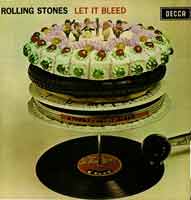 Einer der Klassiker von den Stones. Natürlich wegen "Sympathy
For The Devil", "You Got The Silver", "Midnight
Rambler" und "Love In Vain" unverzichtbar in dieser
Liste.
Einer der Klassiker von den Stones. Natürlich wegen "Sympathy
For The Devil", "You Got The Silver", "Midnight
Rambler" und "Love In Vain" unverzichtbar in dieser
Liste.
Anmerkung: "Sympathy For The Devil" ist natürlich
von "Beggars Banquet".
Da habe ich einen bösen Faux Pas begangen, der von den Junx aus
dem "Rolling-Stone-Forum" gnadenlos aufgedeckt wurde. Asche
auf mein Haupt. Zu meiner Entlastung kann ich leider nur sagen, dass
ich damals, als diese Platte erschien, 10 Jahre jung war und
inzwischen schon über 40 bin (das Gedächtnis lässt
nach!)
(10.12.2002)

 Mehr ...
Mehr ...
|
The record kicks off with the terrifying "Gimme Shelter,"
the song that came to symbolize not only the catastrophe of the Stones'
free show at Altamont but the death of the utopian spirit of the 1960s.
But the entire album, although a motley compound of country, blues and
gospel fire, rattles and burns with apocalyptic cohesion: the sex-mad
desperation of "Live With Me"; the murderous blues of "Midnight
Rambler"; Keith Richards' lethal, biting guitar on "Monkey Man";
the epic moralism, with honky-tonk piano and massed vocal chorus, of "You
Can't Always Get What You Want," which Mick Jagger wrote on acoustic
guitar in his bedroom. "Somebody said that we could get the London
Bach Choir," Jagger recalled, "and we said, 'That will be a
laugh.' " (Rolling Stone)
Total album sales: 3 million. Peak chart position: 3
|
|
| T-Bone Walker/Joe Turner/Otis Spann: "Super Black Blues" (Flying Dutchman, Dez. 1969) |
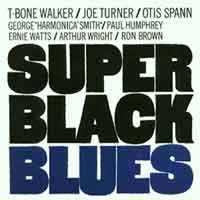 Der
etwas marktschreierische Titel trifft es aber haargenau: Hier kamen
drei Meister des Blues zu einer entspannten Studiosession zusammen:
der Sänger/Gitarrist T-Bone Walker, für viele der beste
Bluesgitarrist noch vor B.B. King und hier wohl "Primus inter pares"
(oder wie das heißt), der "Shouter" Big Joe Turner,
sowie der wenig später verstorbene Pianist Otis Spann. Unterstützt
wurden sie von einer wirklich hochkarätigen Begleitband mit Harmonikaspieler
George Smith (von der Muddy Waters-Band), Jazztrommler Paul
Humphrey (spielt auch auf Steely Dan's "Aja"!)
und Saxofonlegende Ernie Watts. Nur Bassist Ron Brown
und Gitarrist Arthur Wright sind mir nicht bekannt. Produziert
in exquisitem Klang wurde das Ganze von Bob Thiele, der sonst
für das Jazzlabel Blue Note arbeitete. Die Produktion orientiert
sich in Klang und Coverästhetik stark an Jazzplatten aus dieser
Zeit (Blue Note, Riverside, etc.). Meine Vinylplatte ist mir übrigens
vor einiger Zeit zerbrochen und ich war jahrelang nicht in der Lage,
mir ein neues Exemplar zu besorgen. Und ENDLICH ist jetzt in England
eine CD-Wiederveröffentlichung draußen, die ich mir natürlich
sofort bestellt habe! Der
etwas marktschreierische Titel trifft es aber haargenau: Hier kamen
drei Meister des Blues zu einer entspannten Studiosession zusammen:
der Sänger/Gitarrist T-Bone Walker, für viele der beste
Bluesgitarrist noch vor B.B. King und hier wohl "Primus inter pares"
(oder wie das heißt), der "Shouter" Big Joe Turner,
sowie der wenig später verstorbene Pianist Otis Spann. Unterstützt
wurden sie von einer wirklich hochkarätigen Begleitband mit Harmonikaspieler
George Smith (von der Muddy Waters-Band), Jazztrommler Paul
Humphrey (spielt auch auf Steely Dan's "Aja"!)
und Saxofonlegende Ernie Watts. Nur Bassist Ron Brown
und Gitarrist Arthur Wright sind mir nicht bekannt. Produziert
in exquisitem Klang wurde das Ganze von Bob Thiele, der sonst
für das Jazzlabel Blue Note arbeitete. Die Produktion orientiert
sich in Klang und Coverästhetik stark an Jazzplatten aus dieser
Zeit (Blue Note, Riverside, etc.). Meine Vinylplatte ist mir übrigens
vor einiger Zeit zerbrochen und ich war jahrelang nicht in der Lage,
mir ein neues Exemplar zu besorgen. Und ENDLICH ist jetzt in England
eine CD-Wiederveröffentlichung draußen, die ich mir natürlich
sofort bestellt habe!
(Januar 2003) |
| Michael Chapman: "Rainmaker" (EMI/Harvest, 1969) |
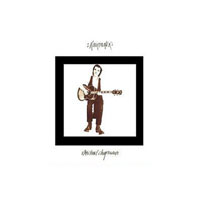 Ein unterbewerteter englischer Sänger und Gitarrist mit seinem
Debüt. Von seinen zahlreichen Alben habe ich im Laufe der Jahre
so einige aus den Grabbelkisten ziehen können, ohne dabei ein wirklicher
Kenner von Michael Chapman zu werden, aber dieses hier gefällt
mir am besten.
Ein unterbewerteter englischer Sänger und Gitarrist mit seinem
Debüt. Von seinen zahlreichen Alben habe ich im Laufe der Jahre
so einige aus den Grabbelkisten ziehen können, ohne dabei ein wirklicher
Kenner von Michael Chapman zu werden, aber dieses hier gefällt
mir am besten.
(05.06.2008)

 Mehr ...
Mehr ...
... Sein Deb�talbum z�hlt auch fast 30 Jahre sp�ter noch zu einer der Sternstunden von Albions Singer/Songwriter-Gilde. Rainmaker lebt von Chapmans filigraner Melodief�hrung, seinem hingenuschelten Gesang, seinem markanten Akustikgitarrenspiel - und von begnadeten Begleitern wie Drummer Aynsley Dunbar, den Bassisten Danny Thompson und Rick Kemp oder Gitarrenlegende Clem Clempson. Schillernde Folk-Kleinode, leichtf��ige Instrumentals und als Sahneklecks obendrauf f�nf teils ultrarare Bomustracks: Ein Meilenstein harrt seiner Entdeckung.�
(ME/Sounds. 6 Sterne)
In 1969 British singer/songwriter Michael Chapman took the U.K.'s folk-rock world by surprise with his debut album, Rainmaker, on the Harvest label. In an era when each week garnered a new surprise in the music world, gathering serious and widespread critical acclaim wasn't easy, and finding a buying public near impossible. Rainmaker showcases a new talent who holds nothing back for himself. Every songwriting principle and trick, killer guitar riff, and songwriting hook in his bag makes an appearance here (something he would never do again). As a result, there are several truly striking things about the album that makes it stand out from the rest of the Brit folk-rock slog from the late '60s. One of them is Chapman's guitar playing. A true stylist in his own right, he holds a middle line between John Martyn and Bert Jansch with the provocative electric rock funkiness of Martyn juxtaposed against the rock solid folk traditional so wonderfully espoused by Jansch. Another is Chapman's lean, carved, sleek lyrical style, preferring the starkness of poetry to the lush elements of the song styles usually found on records of this type. Both are put to fine use on the opener, "It Didn't Work Out," a gorgeous broken love ballad with a philosophical bent, along with Chapman's doleful resigned vocal; the electric guitars cascade over fingerpicked acoustics, and acoustic and electric basses -- courtesy of Rick Kemp and Danny Thompson. Here, the old-English melody style was welded to a rock backbeat and fused into a whole, rhythmic, elegant, but sparse tale of broken love. The fiery emotions were carried through the measures by Chapman's tumultuous guitar leads. On the title track, an instrumental with thunderstorm sound effects, the weave between electricity and natural sound grows tighter. When playing in traditional or blues styles, such as the dark, menacing folk-blues of "No One Left to Care," Chapman fuses the rock pulse to the folk or blues song, open-tuning his guitars to such a degree that drones created multiple tones and a solid bottom for his voice to pounce down upon. They also create a sense of emotional honesty not so prevalent on the scene at the time -- artists were given to interpret old songs with an air of academic distance -- Chapman chews his words and spits them out while rifling off guitar riffs at every turn that are as gnarly and venomous as anything by Richard Thompson at the time. Not to mention the stunning instrumental "Thank You, P.K., 1944," with its silvery 12-string work that turns the tonal qualities of the instrument inside out so completely you could swear there were three guitars players -- despite the fact that none of the guitar parts were overdubbed -- or the shimmering, high-whining slide work on the rock growler "Small Stones." The CD reissue contains five bonus tracks, a shorter single version of "It Didn't Work Out," and its B-side, "Mozart Lives Uptown," as well as a second part to that track, "On My Way Again," and the humorous but poignant "Bert Jansch Meets Frankenstein" (the latter three previously unreleased). As auspicious a debut as Rainmaker was for its fine songwriting, history has proved it to be more so because it's the only record in Chapman's distinguished catalog where he ever showcased his truly virtuosic talent as a guitarist. Why, is anybody's guess?
(by Thom Jurek, All Music Guide)
|
| Bonnie Dobson: "Bonnie Dobson" (RCA, 1969) |
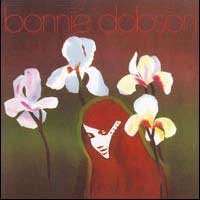 Lost & Found!
Lost & Found!
(04.04.2010)

 Mehr ...
Mehr ...
|
Bonnie Dobson did not make the transition from folk to rock well, as
this 1969 album attests. With its pop trimmings and orchestration, the
impression is that RCA was trying to put Dobson into the pop market, rather
than the rock or even folk-rock one. The arrangements aren't awful, but
they aren't inspired either, and don't suit the songs well. It's as if
someone was trying to make her over into a folk Bobbie Gentry. And the
material isn't the greatest either. Getting an opportunity to do an electric
version of her own "Morning Dew" would seem to have been the
greatest opportunity that the author of the song could have, yet it's
no more than adequate, and in any case had been beaten to the punch through
prior versions by Tim Rose, the Grateful Dead, the Jeff Beck Group, Lulu,
and others. Same thing with her covers of Fred Neil's "Everybody's
Talking" and Dino Valenti's "Let's Get Together": would
have been a great idea in early 1967, but was running behind the pack
a couple of years later. (At least her cover of Jackson Frank's "You
Never Me" was a more obscure, daring choice.) Five of the 12 songs
are her own compositions, but with the exception of "Morning Dew"
they're inoffensively forgettable, easygoing pop-folk-rock. A sitar (or
possibly an electric sitar) pops up a couple of times, but it sounds more
trendy than far-out. As an early-1960s folk singer, Dobson made notable
if little-known contributions to the folk scene, but this album indicates
that she wasn't able to either maximize her potential or capitalize on
her assets in a timely fashion.
(by Richie Unterberger , All
Music Guide)
|
|
| Judy Henske & Jerry Yester: "Farewell Aldebaran" (Straight, 1969) |
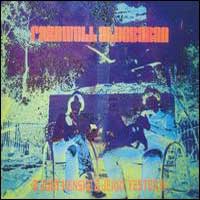 Lost
And Found! Lost
And Found!

 Mehr ...
Mehr ...
|
A cult treasure, ripe for CD reissue, though few picked up on it in its day and few have picked it up since. Not readily comparable to much other late-'60s psychedelia, it's rare that rock combines pretty, accessible melodies and off-the-wall eclecticism and experimentalism so well.
(by Richie Unterberger, All
Music Guide)
|
|
| Dan Hicks & His Hot Licks: "Original Recordings" (Epic, 1969) |
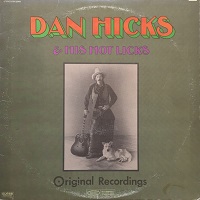

 Mehr ...
Mehr ...
Original Recordings was Dan Hicks' initial solo effort as well as the debut of his "Hot Licks." Unlike the overamplified electric jug band music that the Charlatans had been creating during Hicks' stint as their drummer and occasional vocalist, this new band performed a refreshing blend of jazz swing with country & western. Their understated performance style stood in stark contrast to the burgeoning heavy metal and acid rock that were en vogue as the '60s became the '70s. Featured on this album is a seminal version of the "Hot Licks" that were only together briefly. Included are John Weber (guitar) and Terry Wilson (drums) as well as vocalists Tina Viola Gancher and Sherry Snow. Both Sid Page (violin/vocals) and Jaime Leopold (acoustic bass) would remain with Hicks (guitar/vocals/spoken word) as core members of the band. Of the 11 original compositions on this disc, "How Can I Miss You When You Won't Go Away" followed Hicks from the Charlatans, while "Canned Music," "I Scare Myself," and "Shorty Falls in Love" would be slightly reworked for their inclusion on the upcoming long-players Where's the Money? and Striking It Rich, respectively. Perhaps because of Hicks' background as a drummer, his sense of timing is a key element to his deceptively complex melodies. Likewise, this has a great deal to do with the success of the call-and-response vocals between Hicks and the female background vocalists he would dub "the Lickettes." Within these pastoral melodies and slightly askew lyrics is the somewhat out-of-sync and acid-tinged "It's Bad Grammar, Baby." In retrospect, the prominently distorted acoustic guitar lead overwhelms the track -- which would have otherwise fit nicely within the context of the remainder of the album. This might have had something to do with it being conspicuously left off the 2001 Sony/Legacy reissue Canned Music: The Most of Dan Hicks & His Hot Licks. Those who can locate a copy of these Original Recordings are urged to do so. For Hicks-ophiles or Dan-ophites, it is a vital entry into his canon.
(by Lindsay Planer, All Music Guide)
|
| Freddie King "Is A Blues Master" (Atlantic/Cotillion, 1969) |


 Mehr ...
Mehr ...
|
| Charlie Musselwhite: "Tennessee Woman" (Vanguard, 1969) |
 Gerade frisch für € 2,95 bei Zweitausendeins aus der Grabbelkiste
geholt! Ich bin zwar nicht mehr so sehr in dem "Bluesding"
wie noch vor einigen Jahren, muss aber feststellen: ein wirklich großartiges
Album! Songs, Zusammenspiel, Klangqualität, Musselwhites Stimme
und Harmonika! Und dieses coole Cover! Musselwhite ist definitiv einer
der besten weißen Bluesharpspieler! Wobei dieser "rassistische
Ansatz" eigentlich total bescheuert ist, denn er meint unterschwellig:
zwar gut für einen "Weißen", aber nicht so gut wie ein
"Schwarzer". übrigenz wusste ich früher überhaupt
nicht, dass Musselwhite ein "Weißer" ist - große überraschung
als ich ihn dann zum ersten mal auf Fotos sah!
Gerade frisch für € 2,95 bei Zweitausendeins aus der Grabbelkiste
geholt! Ich bin zwar nicht mehr so sehr in dem "Bluesding"
wie noch vor einigen Jahren, muss aber feststellen: ein wirklich großartiges
Album! Songs, Zusammenspiel, Klangqualität, Musselwhites Stimme
und Harmonika! Und dieses coole Cover! Musselwhite ist definitiv einer
der besten weißen Bluesharpspieler! Wobei dieser "rassistische
Ansatz" eigentlich total bescheuert ist, denn er meint unterschwellig:
zwar gut für einen "Weißen", aber nicht so gut wie ein
"Schwarzer". übrigenz wusste ich früher überhaupt
nicht, dass Musselwhite ein "Weißer" ist - große überraschung
als ich ihn dann zum ersten mal auf Fotos sah!
(03.10.2003)

 Mehr ...
Mehr ...
I saw Charlie Musselwhite for the first time in 1969. I bought this album soon after and have never stopped listening to it. This is a phenomenal blues band at the top of their game. Besides Musselwhite playing beautiful harp and singing beautifully, the band features Skip Rose on piano, Tim Kaihatsu and Larry Welker sharing the guitar duties, Carl Severied on the bass, Lance Dickerson on the drums, Fred Roulette on the pedal steel guitar and Rod Piazza sits in with a chromatic harmonica on "Blue Feeling Today"
One of the things that is great about the blues bands back in the sixties and seventies is that there seemed to be more emphasis on everybody in the group playing instead on just one or two featured players. "A Nice Day For Something" and "Christo Redemptor" feature solos by at least four people each. Musselwhite also gave room on each of the albums in this period for Rose to feature one of his own songs. The rest of the material includes songs by the likes of Willie Dixon, Little Walter, Duke Pearson, Fenton Robinson as well as a couple of songs by Musselwhite.
This was a time period that was a golden age for the blues. Magic Sam, Muddy Waters, Butterfield, Buddy Guy, Otis Spann, Junior Wells and many others were in their prime. It was still possible to hear some of the great country blues players like Son House or Mississippi John Hurt or Fred McDowell. Many of the players from the generation inbetween like Sam Hopkins were still around. It was possible to hear the whole history of the genre being performed live and to hear the extensions of the genre that people like Butterfield were making. Musselwhite is as good as anybody from that period. And this album is one of his best.
(Greg Taylor, gefunden bei Amazon)
The addition of jazz pianist Skip Rose gave a new dimension to the ensemble sound, and provided a perfect foil to Charlie's own soloing � especially on the re-take of "Cristo Redentor," extended to 11 minutes, shifting to double-time in spots. Rose's instrumental, "A Nice Day for Something," is a welcome change of pace, and Musselwhite's "Blue Feeling Today" compares favorably to fine covers of Little Walter and Fenton Robinson tunes.
(by Dan Forte, All Music Guide)
|
| "Renaissance" (Island, 1969) |
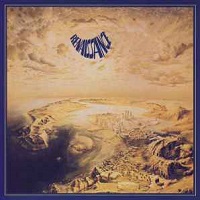

 Mehr ...
Mehr ...
The original group's debut album was a then-groundbreaking meld of progressive rock with classical and jazz influences. The album is a little clunky by today's standards, and far druggier than the later group in its ambience (cofounders Keith Relf and Jim McCarty were the heavily psychedelic half of the final lineup of the Yardbirds, which made them anathema to Jimmy Page), but vocalist Jane Relf had a striking individual style, and the classical influence was unique for its time.
(by Bruce Eder, All Music Guide)
|
| Milton Nascimento: "Courage" (A&M/CTi, 1969) |
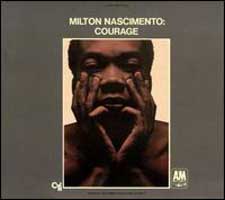 Zum ersten Mal nimmt der brasilianische Sänger und Gitarrist in
den USA bei einem Jazzlabel auf. An den Tasteninstrumenten findet man
die prominentesten Begleiter: Herbie Hancock, sehr "banddienlich"
spielend, am Piano und Eumir Deodato an der Orgel. Gewöhnungsbedürftig
für viele sind sicherlich die für eine Creed Taylor-Produktion
typischen Streicher, aber wenn man davon mal absieht oder sich sogar
dran gewöhnt hat, ist das eine ganz vorzügliche Platte, die
dem Brasilien-Unkundigen den ersten Schritt in eine neue musikalische
Welt ermöglicht.
Zum ersten Mal nimmt der brasilianische Sänger und Gitarrist in
den USA bei einem Jazzlabel auf. An den Tasteninstrumenten findet man
die prominentesten Begleiter: Herbie Hancock, sehr "banddienlich"
spielend, am Piano und Eumir Deodato an der Orgel. Gewöhnungsbedürftig
für viele sind sicherlich die für eine Creed Taylor-Produktion
typischen Streicher, aber wenn man davon mal absieht oder sich sogar
dran gewöhnt hat, ist das eine ganz vorzügliche Platte, die
dem Brasilien-Unkundigen den ersten Schritt in eine neue musikalische
Welt ermöglicht.
(26.03.2006)

 Mehr ...
Mehr ...
|
Milton Nascimento's first album for North American ears, recorded at Van Gelder Studios in New Jersey under the watchful eye and discerning ear of Creed Taylor, is a masterpiece, a gorgeously executed tour through his early songs. Backed beautifully by Eumir Deodato's lush orchestrations and a clutch of sidemen from the Taylor stable (including Herbie Hancock, Airto Moreira and Hubert Laws), Nascimento unveils one first-class tune after another, many of which would ignite a rush of cover versions. Among the songs North Americans heard for the first time were "Vera Cruz," "Tres Pontas," "Morro Velho," the scatted "Catavento," and the intensely moving "Bridges (Travessia)" -- the latter which launched Nascimento's name on the world music scene. Singing in English, Portuguese and often, no words at all, Nascimento's odd yet masculine and expressive baritone stands out like a moaning foghorn from the smooth A&M/Taylor sonic formula, a haunting combination. This was Nascimento before tropicalismo, when he latched onto the tail end of the bossa nova movement and quickly became one of its most inspired performers and songwriters. To some admirers, Courage remains his best record, period.
(by Richard S. Ginell, All Music Guide)
|
|
| Pharoah Sanders: "Karma" (Impulse!, 1969) |
|
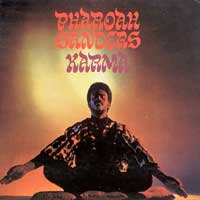 "Hippie-Jazz" sagen manche Leute - und meinen das wohl auch
eher abfällig. Ende 70er (oder Anfang 8oer) Jahre habe ich den
Mann mal live auf dem wunderbaren Jazzfestival in der Balver Höhle
im Sauerland(!) gesehen, was einer der bewegendsten Konzerteindrücke
meines Lebens wurde. Und weil ich ja nie John Coltrane live
erleben konnte, muss ich zumindest sagen: der beeindruckendste Saxofonspieler,
den ich je gesehen habe.
"Hippie-Jazz" sagen manche Leute - und meinen das wohl auch
eher abfällig. Ende 70er (oder Anfang 8oer) Jahre habe ich den
Mann mal live auf dem wunderbaren Jazzfestival in der Balver Höhle
im Sauerland(!) gesehen, was einer der bewegendsten Konzerteindrücke
meines Lebens wurde. Und weil ich ja nie John Coltrane live
erleben konnte, muss ich zumindest sagen: der beeindruckendste Saxofonspieler,
den ich je gesehen habe.
Das fast 33minütige "The Creator Has A Masterplan"
ist der Mittelpunkt des Albums. Sänger Leon
Thomas durfte seine Stimme mit dem markanten Jodeleffekt bald
darauf auch bei Santana (auf "Welcome"
von 1973) erheben und hat das Lied auch auf seinem Debüt "Spirits
Known And Unknown" herausgebracht. Ausserdem gibt es das
Lied doch tatsächlich zweimal in der Interpretation von Jeffrey
Lee Pierce und seinem Gun Club, natürlich ohne solch
instrumentale Höchstleistungen wie hier, aber trotzdem (?) recht
interessant gemacht: auf dem 84er Studioalbum "The
Las Vegas Story" und dem Livealbum "Ahmed's Wild Dream"
aus den 90ern. Coltrane-Sanders-Santana-Gun Club: eine interessante,
leicht bizarre Mischung, die aber irgendwie meinen Nerv trifft!

 Mehr ...
Mehr ...
|
"Although introduced as a protégé of John Coltrane
and touted by many as his heir apparent, reedman Pharoah Sanders quickly
proved his own man. His shared interest in the "cosmic" music
of Coltrane's final period belies the fact that Sanders frequently plays
with an unhurried sense of peace and satisfaction rarely found in his
mentor's music. His use of space, African and Asian motifs and instruments,
and simple, repetitive melodies also pointed the way for jazz, rock, and
new age musicians in the '70s and '80s, while his sometimes raucous use
of harsh, shrieking runs influenced many of jazz's most adventurous saxophonists.
The centerpiece of Karma is the marathon half-hour octet recording "The
Creator Has a Master Plan." Although the track features a warm vocal
by Leon Thomas, its true feature artist for almost the entire length is
Sanders, who carries the melody, feel, and improvisation firmly on his
shoulders. All of Sanders's key elements--Afro-centric spiritualism, sweeping
use of mood from long, relaxed intervals to frenetic cacophony, and a
deep sense of melody and rhythm--are in evidence. The album's religious
feeling is cemented by the album's closer, "Colors," which serves
as a deeply felt invocation."
(Fred Goodman, Amazon)
|
|
| Pharoah Sanders: "Jewels Of Thought" (Impulse, 1969) |
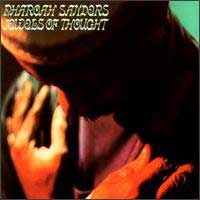 Gleich vier Alben nahm der "Ziehsohn" von John Coltrane 1969
auf und brachte in dem Jahr auch schon gleich drei davon heraus. "Karma"
stammte vom 14. und 19. Februar und der Nachfolger (?) "Jewels
Of Thought" wurde am 20. Oktober aufgenommen. Wieder gibt es lange
extatische Nummern und wieder sind interessante Coverversionendavon
zu erwähnen: Eugene Chadbourne zersägt mit seinen Freunden
von Camper Van Beethoven die "Gottespreisung" "Hum-Allah
..."
Gleich vier Alben nahm der "Ziehsohn" von John Coltrane 1969
auf und brachte in dem Jahr auch schon gleich drei davon heraus. "Karma"
stammte vom 14. und 19. Februar und der Nachfolger (?) "Jewels
Of Thought" wurde am 20. Oktober aufgenommen. Wieder gibt es lange
extatische Nummern und wieder sind interessante Coverversionendavon
zu erwähnen: Eugene Chadbourne zersägt mit seinen Freunden
von Camper Van Beethoven die "Gottespreisung" "Hum-Allah
..."

 Mehr ...
Mehr ...
In 1969, Pharoah Sanders was incredibly active, recording no less than four albums and releasing three. The band on Jewels of Thought is largely the same as on Deaf Dumb Blind and Karma, with a few changes. Idris Muhammad has, with the exception of "Hum-Allah-Hum-Allah Hum Allah," replaced Roy Haynes, and Richard Davis has permanently replaced Reggie Workman and Ron Carter, though Cecil McBee is still present for the extra bottom sound. Leon Thomas and his trademark holy warble are in the house, as is Lonnie Liston Smith. Comprised of two long cuts, the aforementioned and "Sun in Aquarius," Jewels of Thought sees Sanders moving out from his signature tenor for the first time and delving deeply into reed flutes and bass clarinet. The plethora of percussion instruments utilized by everyone is, as expected, part of the mix. "Hum-Allah" begins with a two-chord piano vamp by Smith and Thomas singing and yodeling his way into the band's improvisational space. For 12 minutes, Sanders and company mix it up -- especially the drummers -- whipping it first quietly down into the most pure melodic essences of Smith's solo and then taking the tension and building to ecstatic heights with all manner of blowing and intervallic interaction between the various elements until it just explodes, before coming down in pieces and settling into a hush of melodic frames and the same two-chord vamp. On "Sun in Aquarius," African thumb pianos, reed flutes, sundry percussion, and orchestra chimes are employed to dislocate all notions of Western music. Things get very quiet (though there is constant motion); the innards of the piano are brushed and hammered quietly before Sanders comes roaring out of the tense silence with his bass clarinet, and then the tenor and bass share an intertwined solo and Smith starts kicking ass with impossibly large chords. It moves into another two-chord vamp at the end of 27 minutes, to be taken out as a closed prayer. It's more like a finished exorcism, actually, but it is one of the most astonishing pieces by Sanders ever.
(by Thom Jurek, All Music Guide)
|
| The Savage Rose: "In The Plain" (Polydor, 1969) |
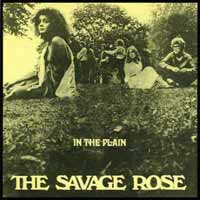 Sehr wahrscheinlich ist dies die einzige dänische Band auf diesen
Seiten. In den wilden Spät60ern hatte die Band bei uns und in den
USA einen gewissen Bekanntheitsgrad - auch mir war sie zumindest vom
Namen her bekannt. Vor einiger Zeit fand ich dann dieses Album mit dem
schönen Cover in einer Grabbelkiste und habe einfach mal zugeschlagen:
schöne "psychedelische Undergroundmusik", irgendwo zwischen
Jefferson Airplane und Amon Düül II. Die Sängerin
Annisette klingt ein wenig wie Björk, der Gitarrist
Nils Tuxen wurde später einer der angesagtesten Pedalsteeler
zwischen Hamburg und Nashville und spielte u.a. für Truckstop und
Texas Lightning. (na: ist das nicht ein cooles Namedropping???)
Sehr wahrscheinlich ist dies die einzige dänische Band auf diesen
Seiten. In den wilden Spät60ern hatte die Band bei uns und in den
USA einen gewissen Bekanntheitsgrad - auch mir war sie zumindest vom
Namen her bekannt. Vor einiger Zeit fand ich dann dieses Album mit dem
schönen Cover in einer Grabbelkiste und habe einfach mal zugeschlagen:
schöne "psychedelische Undergroundmusik", irgendwo zwischen
Jefferson Airplane und Amon Düül II. Die Sängerin
Annisette klingt ein wenig wie Björk, der Gitarrist
Nils Tuxen wurde später einer der angesagtesten Pedalsteeler
zwischen Hamburg und Nashville und spielte u.a. für Truckstop und
Texas Lightning. (na: ist das nicht ein cooles Namedropping???)
(12.09.2004)

 Mehr ...
Mehr ...
Die LP IN THE PLAIN lebt in der Hauptsache von der skurrilen un melancholischen Stimme der S�ngerin Annisette. Dar�ber hinaus bietet die d�nische Gruppe, die langsam auch in Amerika bekannt wird, eine recht eigenwillige Musik, die nie krampfhaft versucht, angels�chsischen Vorbildern nachzueifern.
(Sounds, 1969)
In the Plain by Denmark's Savage Rose has a striking cover photo with psychedelic color coordinated band members surrounded by wild pink lettering of the group name. Inside is innovative music, pretty much living up to the typical Polygram hype from this era written on the back cover. "Let's See Her" sounds like Ten Wheel Drive meets Vanilla Fudge; brothers Anders Koppel and Thomas Koppel wrote seven of the eight tracks, and created with this one clever sound and arrangements. The sleeper on In the Plain, though, is the one non-original, five minutes and 38 seconds of "Ride My Mountain," a composition by Jade. It's a wonderful production number where Anisette's vocal scream out over the very together instrumentation. The back cover photo reflects the intensity of "Ride My Mountain," the band looking like exiles of Charles Manson's clan in the positive of the back cover photo, a larger negative version above it making this import very hip. The Savage Rose look like they are auditioning for the film The Savage Seven. The opening track reminds one of a hipper Peanut Butter Conspiracy, and there is no doubt that Savage Rose find more inspiration in their music than similar bands from the era. The production is somewhat like Davd Briggs' work on Alice Cooper's Easy Action, while titles like "The Shepherd & Sally" are as experimental as anything on that early Cooper disc. Having the male vocals on "His Own Happiness" is unnecessary, sort of like Big Brother & the Holding Company letting Janis Joplin take a time out. Thankfully, Anissette comes back after a mini-instrumental interlude for a rare look at the band's sangfroid. It is also interesting to hear Thomas Koppel's to-be ex-wife, Llse Maria Koppel, on harpsichord backing his next wife, Anissette. "Evening's Child" is like a psychedelic powwow of jazz-influenced garage rock which cascades into the dirge that is "A Trial in Our Native Town." Without the polish producer Jimmy Miller would bring to the mix on Refugee, In the Plain is a very good look at a highly creative band.
(by Joe Viglione, All Music Guide)
In the cross between the anti-war in Vietnam and Black Panthers marching to the beat and stopping wars along with the music of Psychedelic and rare Progressive Rock, the Savage Rose represented everything that was political and with a message for peace of pure rock and roll. The group was formed in the late '60s by the Koppel brothers (Anders and Thomas), they knew something that what they were about to do was going to be beautiful and dynamic at the same time. It was the late writer for Rolling Stone Magazine, Lester Bangs who championed them, could see the difference as much as organist Anders and the explosive vocalist Annisette which makes you feel that the voice is coming right behind you and gives you a chill to the bone.
When the group released their self-titled debut album in 1968, and after being signed by Polydor, They knew there was another part of their music that was up their sleeve. Being bigger than Cream and the Beatles, The Savage Rose were like a flower that has just been given birth to a newborn with a taste of music up its hands and along with their second album, In The Plain, in which the late Thomas Koppel mentioned in the liner notes of the reissue in 2001, he knew that this was a breakthrough for him and the band. "We were happy, creative & powerful, with no fears and ready to go anywhere with the music."
Thomas concept of making the next Sgt. Pepper was right on and came with a magnum opus with a golden cover of the band sitting on a lawn that was more of a cross between Bebop Jazz meets The Beatles meets John Coltrane. Its idea, strangely similar to the protest of the war that was strict and like troops coming home to see a band that had the ingredients it needed for a political psychedelic rock album, seemed at the right place at the right time.
Once the pounding piano introduction that sounds pre-Glam Rock, starts off with Long Before I Was Born, where the band go into a whirlpool of terror for militant rock, the glorified upbeat number alongside other tracks that looked like an explosive device sounded fresh as Anisette's vocal arrangments that were magnificient for its time.
If Long Before I Was Born had represented the problems with the War in Vietnam with screeching vocals and clapping rhythms with the organ going a little bluesy while the drums go into a panic mode, the rest of the album was no suprise at all. Compositional pieces opened up the door including the jazzy virtuoso funeral ballads; His Own Happiness/God's Little Hand, I'm Walking Through The Door, The Shepherd and Sally, and Let's See Her went through strange and various changes; Ride My Mountain (Jade) went through a ornamental dramatic story around a young girl who's lost on top of the mountain of a lost of a child, combine with a church like sound of the background vocalist singing the line:
Ride my Mountain
I shall receive you
Ride my Mountain
I shall receive you
And the beat has a 4/4 measure with an Jimi Hendrix-like guitar solo from Nils Tuxen while Alex Riel does some early jazz beats per measure on the drums that reminded me of Elvin Jones and Ringo Starr working together as Thomas does thunderous piano work to set the scenery of the music as Anisette seems that she's fighting back tears while singing the glorified piece; Evening's Child has once again an upbeat folky acoustic classical piece followed by a small bossa nova piece on the drums that delivers a statement for Jazz listeners; and In The Plain ends on a high note on the 7-minute gloomy piece A Trial in our Native Town, a twisted world of hell and other words, oddly normal.
With the group getting ready to go in the '70s to be followers of the Black Panthers and James Brown and refusing to perform in Vietnam, The Savage Rose were almost a psych-punk-jazz movement during that time period. And its that quality of the late Thomas Koppel's songwriting and composing music for ballet a few decades earlier with Dodens Triumf that wasn't pretentious, makes the Rose such almost the danish version of Classical Jazz Punk Rock. Almost as if John Lydon meets Beethoven in Arthur Brown style as if they would do something that was outrageous.
Almost the conceptual post-apocalyptic album, The Savage Rose represented the hellish world a little bit, opening up the doors of a new generation of fans to take the music of garage and jazz at the same time. No wonder David Fricke plays it nonstop on his turntable and maybe playing about 600 times.
(www.headheritage.co.uk)
|
| The Savage Rose: "Travelin'" (Polydor, 1969) |
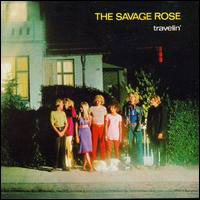 Vor
wenigen Tagen habe ich das dritte Album dieser dänischen Band als altes
Originalvinyl für wenig Geld erstanden. Eine schöne Platte, die mich
sogar inspiriert hat ein neues Lied zu schreiben: "Perfect
Day". Vor
wenigen Tagen habe ich das dritte Album dieser dänischen Band als altes
Originalvinyl für wenig Geld erstanden. Eine schöne Platte, die mich
sogar inspiriert hat ein neues Lied zu schreiben: "Perfect
Day".
Einziger Kritikpunkt vielleicht: die Kleiderwahl der Band für das Coverfoto
ist ziemlich bunt, aber nicht sehr glücklich. Im besten Fall kann man
sagen: uneinheitlich. Sängerin Annisette im aparten Minikleid,
Spinettspielerin Maria im geschmackvollen mittellangen Kleid,
während gleich drei der Junx eher nach Winter aussehen ...
(06.07.2009)

 Mehr ...
Mehr ...
Mit TRAVELLIN' scheint mir Savage Rose ihr bekanntes Erfolgsrezept vervollkommnet zu haben. Gut produziert und besser arrangiert stellt die Musik immer noch vor allem auf die wirklich einzigartige Stimme Annisettes ab. Die Divergenz zwischen dieser geschliffenen Babystimme und der oft pathetischen Musik hat eine gewisse Faszination. Ohne diese Stimme hat die Gruppe noch kein eigenes Gesicht.
(Sounds, 1969)
More excursions into soul-rock territory dominate one of their less distinguished albums. Highlights include the more serene and melodic cuts ("Travelin'," "Sailing Away") and the shockingly titled (for 1969) "My Family Was Gay, " with its rather straightforward hints of incest.
(by Richie Unterberger, All Music Guide)
|
| Leon Thomas: "Spirits Known And Unknown" (Flying Dutchman, 1969) |
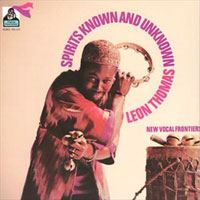 Das
Solodebüt des Sängers der Band von Pharoah Sanders,
auf genommen im Oktober 1969 mit dem Kern von dessen Band (Richard Davis
und CecilMcBee an den Bässen, Roy Haynes am Schlagzeug, Lonnie
Liston Smith am Klavier, dazu Flötist James Spaulding und Perkussionist
Richard Landrum) und mit Sanders als Gast (unter dem Pseudonym "Little
Rock") zwei Tage nach deren Album "Jewels
Of Thought". Das war anscheinend eine sehr fruchtbare Zeit.
Neben einer verkürzten Version der Trademarknummer "The Creator
Has A Masterplan" gibt es unter anderem auch eine Gesangsversion
des Horace Silver-Klassikers "Song
To My Father" zu hören. Gute Platte! Das
Solodebüt des Sängers der Band von Pharoah Sanders,
auf genommen im Oktober 1969 mit dem Kern von dessen Band (Richard Davis
und CecilMcBee an den Bässen, Roy Haynes am Schlagzeug, Lonnie
Liston Smith am Klavier, dazu Flötist James Spaulding und Perkussionist
Richard Landrum) und mit Sanders als Gast (unter dem Pseudonym "Little
Rock") zwei Tage nach deren Album "Jewels
Of Thought". Das war anscheinend eine sehr fruchtbare Zeit.
Neben einer verkürzten Version der Trademarknummer "The Creator
Has A Masterplan" gibt es unter anderem auch eine Gesangsversion
des Horace Silver-Klassikers "Song
To My Father" zu hören. Gute Platte!

 Mehr ...
Mehr ...
Leon Thomas' debut solo recording after his tenure with Pharoah Sanders is a fine one. Teaming with a cast of musicians that includes bassist Cecil McBee, flutist James Spaulding, Roy Haynes, Lonnie Liston Smith, Richard Davis, and Sanders (listed here as "Little Rock"), etc. Thomas' patented yodel is in fine shape here, displayed alongside his singular lyric style and scat singing trademark. The set begins with a shorter, more lyrical version of Thomas' signature tune "The Creator Has a Master Plan," with the lyric riding easy and smooth alongside the yodel, which bubbles up only in the refrains. It's a different story on his own "One," with Davis' piano leading the charge and Spaulding blowing through the center of the track, Thomas alternates scatting and his moaning, yodeling, howling, across the lyrics, through them under them and in spite of them. It's an intense ride and one that sets up the glorious "Echoes." This tune is Thomas at his most spiritual and uplifting, carrying the mysterious drift of his tune entwined with Spaulding's flute and a set of Pan pipes, fluttering in and out of the mix before his wail comes to the fore as a solo. The end of side one reaches into Thomas' past (he sang with everyone from Count Basie to Grant Green and Mary Lou Williams) for a highly original read of Horace Silver's classic "Song for My Father." Thomas imbues the tune with so much emotion, it's a wonder he can keep it under wraps. Side two is more free from in nature with "Damn Nam," a near rant, but one possessed with melodic vision and harmonic invention with this band. There's also the deeply moving "Malcolm's Gone," a co-write between Thomas and Sanders that features the latter's gorgeous blowing, hard and true in the middle of the mix, and a wildly spiritual Eastern vibe coming through in the improvisation. It's the longest track on the record, and one of the most criminally ignored in Thomas' long career. The album closes with Bell and Houston's "Let the Rain Fall on Me." It's a shimmering straight jazz number with a beautiful piano solo by Smith. It sends out a visionary album out on a sweet, soulful note. Ultimately, this is among Thomas' finest moments on vinyl, proving his versatility and accessibility to an audience who, for too long already, had associated him too closely with the avant-garde and free jazz.
(by Thom Jurek, All Music Guide)
|
| T-Bone Walker: "Good Feelin' " (Polydor, 1969) |
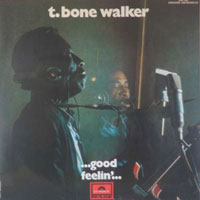 Ich
kann nicht unbedingt behaupten, dass ich mich mit dem legendären
Bluesgitarristen Aaron "T-Bone" Walker besonders gut
auskenne, aber mit diesem Fund in der Grabbelkiste des Weseler Popshops
(R.I.P.) hatte ich irgendwann in der 80ern wohl einen guten Fang gemacht.
Es handelt sich um eine französische Produktion vom November 1968
bei der der damals bereits in Obskurität zu versinken drohende
Gitarrist nochmal zu Höchstform auflief. Mit dabei an Saxofon,
Klavier und Orgel der in Paris beheimatete und neben Dollar Brand
wohl berühmteste afrikanische Jazzmusiker Manu Dibango,
der wenig später (1972?) mit "Soul Makossa" einen der
ersten Discohits hatte. Ach ja - auch die Amis hatten die Qualität
der Platte mit etwas Verzögerung erkannt und ihr 1970 einen Grammy
verliehen. Ich
kann nicht unbedingt behaupten, dass ich mich mit dem legendären
Bluesgitarristen Aaron "T-Bone" Walker besonders gut
auskenne, aber mit diesem Fund in der Grabbelkiste des Weseler Popshops
(R.I.P.) hatte ich irgendwann in der 80ern wohl einen guten Fang gemacht.
Es handelt sich um eine französische Produktion vom November 1968
bei der der damals bereits in Obskurität zu versinken drohende
Gitarrist nochmal zu Höchstform auflief. Mit dabei an Saxofon,
Klavier und Orgel der in Paris beheimatete und neben Dollar Brand
wohl berühmteste afrikanische Jazzmusiker Manu Dibango,
der wenig später (1972?) mit "Soul Makossa" einen der
ersten Discohits hatte. Ach ja - auch die Amis hatten die Qualität
der Platte mit etwas Verzögerung erkannt und ihr 1970 einen Grammy
verliehen.
(19.04.2012) |
| Al Wilson: "Searching For The Dolphins" (Soul City, 1969) |
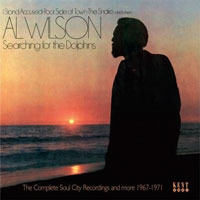 Lost
And Found! Lost
And Found! |
| Xhol Caravan: "Electrip" (Hansa, 1969) |
|
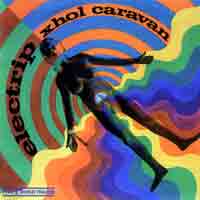 Das
zweite Album der hessischen Musikkommune, ein frühes Werk des
deutschen Progressive Rocks - und sogar auf dem Hansa-Label veröffentlicht,
das zwar 10 Jahre später auch das Debüt der wunderbaren
Band Japan herausbringen wird,
aber ansonsten eher für Schlagermusik zuständig ist. Vielleicht
sogar ein Meisterwerk? Wahrscheinlich nicht, aber auf jeden Fall waren
die Jungs aus Wiesbaden ihrer Zeit, zumindest für deutsche Verhältnisse,
weit voraus: lange Stücke, kaum Gesang, gleich 2(!) Elektro-Saxofonisten,
ein wilder Drummer namens "Skip", eine klasse Orgel und
kein (!) Gitarrist. Irgendwo ist das Alles zwischen Pink Floyd, Funk
und Free-Jazz angesiedelt. Und auf jeden Fall nicht schlechter als
die Musik der Zeitgenossen von Can,
Amon Düll II und Embryo. Das
zweite Album der hessischen Musikkommune, ein frühes Werk des
deutschen Progressive Rocks - und sogar auf dem Hansa-Label veröffentlicht,
das zwar 10 Jahre später auch das Debüt der wunderbaren
Band Japan herausbringen wird,
aber ansonsten eher für Schlagermusik zuständig ist. Vielleicht
sogar ein Meisterwerk? Wahrscheinlich nicht, aber auf jeden Fall waren
die Jungs aus Wiesbaden ihrer Zeit, zumindest für deutsche Verhältnisse,
weit voraus: lange Stücke, kaum Gesang, gleich 2(!) Elektro-Saxofonisten,
ein wilder Drummer namens "Skip", eine klasse Orgel und
kein (!) Gitarrist. Irgendwo ist das Alles zwischen Pink Floyd, Funk
und Free-Jazz angesiedelt. Und auf jeden Fall nicht schlechter als
die Musik der Zeitgenossen von Can,
Amon Düll II und Embryo.
"End-60er Jazz trifft auf psychedelischen Rock
in langen fließenden Stücken, in denen die Struktur weniger
zählt als das Gefühl. Mal ruhige mal wilde Instrumentale
mit ein wenig Zappa und viel Soft Machine." (Glitterhouse)
Meine Reissue-CD stammt von dem etwas merkwürdigen Label "Garden
Of Delight", das sich wohl als Hort des spät60er/früh70er
"Progressive Rock" versteht und mit Xhol Caravan
da sicherlich eine wunderbare Restaurationsarbeit geleistet hat. Und
grundsätzlich bin ich dem "Progressive Rock" dieser
Zeit ja auch nicht völlig abgeneigt, aber einige der Garden
Of Delights-Wiederveröffentlichungen sind sicherlich nur
was für hart gesottene Fans dieses Genres. Oder stimmt einfach
nur das Marketing nicht? Hier einige Zitate zu anderen Veröffentlichungen
des Labels vom Hüllentext, die ich mir dann doch nicht verkneifen
kann:
- "Leider hat der Sänger eine etwas
unpassende Stimme, eher für Hardrock geeignet"
(über die Platte "All Your Hopes" der Band "McOil"
von 1979)
- "Insgesamt eine der schwächsten
CDs auf dem Label, aber von sehr seltenem Original"
(über "Beggar's Pride" von Florian Geyer, 1976) =>
na Gott sei Dank selten!
- "Progressiver Klassik-Rock (sic!)
mit grossartigem Keyboarder, aber schwachem Sänger"
(über das titellose Album von Tyburn Tall von 1972) =>
ich bekomme es mit der Angst zu tun!
- "Die alte Besetzung gab ein (einmaliges)
Reunion-Konzert, das nicht wiederholt werden soll. Mit alten Stücken
... sowie ein paar nachgespielte von EL&P..." (über
"Live ... and Passion" von Tyburn Tall, 1996) => na
Gott sei Dank eine einmalige Angelegenheit!
|
| Steve Young: "Rock Salt & Nails" (RCA, 1969) |
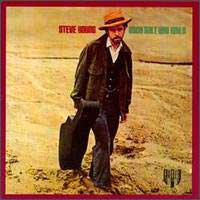 |
| Townes van Zandt: "Our Mother The Mountain" (Tomato, 1969) |
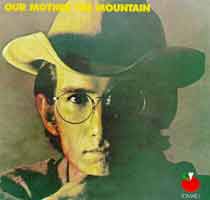 Das
zweite Album eines der besten Songschreibers vor dem Herren! Eine sparsame
Produktion von Jack Clement, meist nur Kontrabass und dezentes
Schlagzeug zu Townes' Gitarre. Von den superben Liedern sei nur auf
drei verwiesen: "Kathleen" (1994 von den Tindersticks
gecovert), "Tecumseh Valley" (1992 von Nanci Griffiths
auf ihrem Album "Other Voices/Other
Rooms" und 1995 von Steve Earle auf seinem Akustikalbum
"Train A Comin'" geadelt)
und "Snake Mountain Blues" (zum schweren Rocker auf "New
West Motel" von den Walkabouts mutiert). Das
zweite Album eines der besten Songschreibers vor dem Herren! Eine sparsame
Produktion von Jack Clement, meist nur Kontrabass und dezentes
Schlagzeug zu Townes' Gitarre. Von den superben Liedern sei nur auf
drei verwiesen: "Kathleen" (1994 von den Tindersticks
gecovert), "Tecumseh Valley" (1992 von Nanci Griffiths
auf ihrem Album "Other Voices/Other
Rooms" und 1995 von Steve Earle auf seinem Akustikalbum
"Train A Comin'" geadelt)
und "Snake Mountain Blues" (zum schweren Rocker auf "New
West Motel" von den Walkabouts mutiert). |
 weitere Highlights ...
weitere Highlights ...  Gleich
drei starke Alben gab's im Jahre '69 von Englands bester Folkrockband.
Allerdings ist dieses insgesamt 2. Album der Band als übergang
von amerikanisch orientiertem Singer/Songwriter-Musik (z.B. Dylans
"I'll Keep It With Mine" und Joni Mitchells "Eastern
Rain") hin zu altenglischem Liedgut ("She Moves Through The
Fair", "Nottamun Town") einzuschätzen. Zum Kern
der Band (Bassist Ashley Hutchings, Trommler Martin Lamble
und den Gitarristen Richard Thompson und Simon Nicol)
kam für Judy Dyble die neue Sängerin Sandy Denny, die
damals bereits ihre eigene Karriere als Folksängerin hatte. Sänger
Ian Matthews war allerdings zum letzten Mal dabei (bzw. beim
Folgealbum "Unhalfbricking"
nur noch als Gast), was möglicherweise mit dem beginnenden Stilwechsel
der Band zu hatte.
Gleich
drei starke Alben gab's im Jahre '69 von Englands bester Folkrockband.
Allerdings ist dieses insgesamt 2. Album der Band als übergang
von amerikanisch orientiertem Singer/Songwriter-Musik (z.B. Dylans
"I'll Keep It With Mine" und Joni Mitchells "Eastern
Rain") hin zu altenglischem Liedgut ("She Moves Through The
Fair", "Nottamun Town") einzuschätzen. Zum Kern
der Band (Bassist Ashley Hutchings, Trommler Martin Lamble
und den Gitarristen Richard Thompson und Simon Nicol)
kam für Judy Dyble die neue Sängerin Sandy Denny, die
damals bereits ihre eigene Karriere als Folksängerin hatte. Sänger
Ian Matthews war allerdings zum letzten Mal dabei (bzw. beim
Folgealbum "Unhalfbricking"
nur noch als Gast), was möglicherweise mit dem beginnenden Stilwechsel
der Band zu hatte. Herbie
Mann ist sicherlich einer der einflussreichsten Flötisten des Jazz,
der auf seinen zahllosen Platten mit vielen Stilen experimentiert hat.
"Memphis Underground" ist durchaus als "Zeitgeistplatte"
anzusehen: sie bringt Jazzsolisten (Herbie Mann selber, Freejazz-Gitarrist
Sonny Sharrock, Jazzrock-Gitarrist Larry Corryell und
den Vibraphonisten Roy Ayers) mit der damals angesagten Memphis-Rhythmusgruppe
um Reggie Young und Bobby Emmons zusammen. Produziert
hat das Ganze der legendäre Tom Dowd. Gespielt werden funkige
Soulgrooves (z.B. der bekannte Titelsong) und Instrumentalversionen
von Soulhits ("Chain Of Fool", "Hold On I'm Coming")
, auf denen sich die Solisten improvisatorisch ausbreiten können.
Herbie
Mann ist sicherlich einer der einflussreichsten Flötisten des Jazz,
der auf seinen zahllosen Platten mit vielen Stilen experimentiert hat.
"Memphis Underground" ist durchaus als "Zeitgeistplatte"
anzusehen: sie bringt Jazzsolisten (Herbie Mann selber, Freejazz-Gitarrist
Sonny Sharrock, Jazzrock-Gitarrist Larry Corryell und
den Vibraphonisten Roy Ayers) mit der damals angesagten Memphis-Rhythmusgruppe
um Reggie Young und Bobby Emmons zusammen. Produziert
hat das Ganze der legendäre Tom Dowd. Gespielt werden funkige
Soulgrooves (z.B. der bekannte Titelsong) und Instrumentalversionen
von Soulhits ("Chain Of Fool", "Hold On I'm Coming")
, auf denen sich die Solisten improvisatorisch ausbreiten können. Van
Der Graaf waren eine der unterbewerteten Band der britischen "Progressive-Rock-Szene"
in den frühen 70ern. Dies ist ihr Debüt-Album. dass eigentlich
als Soloalbum des Sängers Peter Hammill geplant war, da
sich die Band Ende 1968 aufgelöst hatte (das tat sie danach noch
des öfteren). Da aber die anderen Mitspieler, Hugh Banton
(keyb), Keith Ellis(bg) und Guy Evans (dr), sowieso im
Studio dabei waren und mit dem neuen Charisma-Label ein neuer Plattenvertrag
ausgehandelt werden konnte, erschienen die Aufnahmen Anfang 1969 unter
dem alten Bandnamen. Den genialen Song "Necromancer" habe
ich damals irgendwo im Fernsehen gesehen (wahrscheinlich im Beatclub)
und als kleiner Bub natürlich erst nicht verstanden.
Van
Der Graaf waren eine der unterbewerteten Band der britischen "Progressive-Rock-Szene"
in den frühen 70ern. Dies ist ihr Debüt-Album. dass eigentlich
als Soloalbum des Sängers Peter Hammill geplant war, da
sich die Band Ende 1968 aufgelöst hatte (das tat sie danach noch
des öfteren). Da aber die anderen Mitspieler, Hugh Banton
(keyb), Keith Ellis(bg) und Guy Evans (dr), sowieso im
Studio dabei waren und mit dem neuen Charisma-Label ein neuer Plattenvertrag
ausgehandelt werden konnte, erschienen die Aufnahmen Anfang 1969 unter
dem alten Bandnamen. Den genialen Song "Necromancer" habe
ich damals irgendwo im Fernsehen gesehen (wahrscheinlich im Beatclub)
und als kleiner Bub natürlich erst nicht verstanden. Wegen
"Born On The Bayou" und nicht wegen "Proud Mary"
mein klarer Favorit von den Jungs!
Wegen
"Born On The Bayou" und nicht wegen "Proud Mary"
mein klarer Favorit von den Jungs! Diese
Platte ist vor allem wegen der über 20minütigen Version von
Bo Diddley's "Who Do You Love" bekannt. Aus der Band sind
die Gitarristen Gary Duncan und John Cippolina hervorzuheben.
Stammsänger Dino Valenti ist dieses mal nicht dabei (war
er zu der Zeit im Knast? Keine Ahnung), weshalb sich Gary Duncan und
Bassist David Freiberg die Leadvocals teilen.
Diese
Platte ist vor allem wegen der über 20minütigen Version von
Bo Diddley's "Who Do You Love" bekannt. Aus der Band sind
die Gitarristen Gary Duncan und John Cippolina hervorzuheben.
Stammsänger Dino Valenti ist dieses mal nicht dabei (war
er zu der Zeit im Knast? Keine Ahnung), weshalb sich Gary Duncan und
Bassist David Freiberg die Leadvocals teilen. Gefunden in der Grabbelkiste!
Gefunden in der Grabbelkiste! Mehr ...
Mehr ...
 Das dritte Velvet-Album war eine Abkehr von den harschen Klängen
des Vorgängers "White Light/White Heat". John Cale
war zwar nicht mehr dabei, aber Lou Reed zauberte tolle Songs
wie "What Goes On", "Pale Blue Eyes", "Candy
Says", "Beginning To See The Light" und "Murder
Mystery". Trotz des genialen Bananenalbums
ist dies mein wahrer Favorit der Band!
Das dritte Velvet-Album war eine Abkehr von den harschen Klängen
des Vorgängers "White Light/White Heat". John Cale
war zwar nicht mehr dabei, aber Lou Reed zauberte tolle Songs
wie "What Goes On", "Pale Blue Eyes", "Candy
Says", "Beginning To See The Light" und "Murder
Mystery". Trotz des genialen Bananenalbums
ist dies mein wahrer Favorit der Band!
 Mehr ...
Mehr ...

 Mehr ...
Mehr ...

 Mehr ...
Mehr ...
 Tim Buckley, zum Dritten. Der Klang wird immer freier, nähert sich
immer mehr dem Jazz. Dafür sorgen neben dem begnadeten Sänger
Tim Buckley der Gitarrist Lee Underwood und der Vibraphonist
David Friedman.
Tim Buckley, zum Dritten. Der Klang wird immer freier, nähert sich
immer mehr dem Jazz. Dafür sorgen neben dem begnadeten Sänger
Tim Buckley der Gitarrist Lee Underwood und der Vibraphonist
David Friedman.
 Mehr ...
Mehr ...
 Auch
Cohens zweite Platte war wieder voller zukünftiger Klassiker, z.B.
"Story Of Isaac" und natürlich "Bird On The Wire".
Auch
Cohens zweite Platte war wieder voller zukünftiger Klassiker, z.B.
"Story Of Isaac" und natürlich "Bird On The Wire".
 Zwei Rockbands erwies RCA damals die Ehre eines eigenen Plattenlabels:
Jefferson Airplane spendierte man "Grunt",
"Racoon" war extra für die Band um Sänger/Bassist
Jesse Colin Young, einem
ehemaligen Folksänger, und dem virtuosen Gitarristen/E-Pianisten
"Banana" gegründet worden.
Zwei Rockbands erwies RCA damals die Ehre eines eigenen Plattenlabels:
Jefferson Airplane spendierte man "Grunt",
"Racoon" war extra für die Band um Sänger/Bassist
Jesse Colin Young, einem
ehemaligen Folksänger, und dem virtuosen Gitarristen/E-Pianisten
"Banana" gegründet worden.  Mehr ...
Mehr ...
 Der
größte Erfolg der "Motor City Five" aus Detroit
war dieses Livealbum mit dem berühmten "Beep" über
einer "Motherfucker"-Ansage. Beide Gitarristen erlangten danach
Kultstatus, wenn auch keinen übermäßigen Wohlstand:
Wayne Kramer als Semilegende in Punkrockkreisen, Fred "Sonic"
Smith durch seine Heirat mit Patti Smith . Das schöne
Comeback-Album nach der Kinderpause von 1988, "Dream
Of Life", haben Fred und Patti gemeinsam komponiert und eingespielt.
Leider verstarb er vor einigen Jahren.
Der
größte Erfolg der "Motor City Five" aus Detroit
war dieses Livealbum mit dem berühmten "Beep" über
einer "Motherfucker"-Ansage. Beide Gitarristen erlangten danach
Kultstatus, wenn auch keinen übermäßigen Wohlstand:
Wayne Kramer als Semilegende in Punkrockkreisen, Fred "Sonic"
Smith durch seine Heirat mit Patti Smith . Das schöne
Comeback-Album nach der Kinderpause von 1988, "Dream
Of Life", haben Fred und Patti gemeinsam komponiert und eingespielt.
Leider verstarb er vor einigen Jahren. Dylans
Platte aus Nashville ist viel besser als ihr Ruf. Mit "Lay Lady
Lay" gab's nach längerer Pause auch mal wieder einen Hit.
Schön ist auch das Duett mit Johnny Cash bei "Girl
From The North Country".
Dylans
Platte aus Nashville ist viel besser als ihr Ruf. Mit "Lay Lady
Lay" gab's nach längerer Pause auch mal wieder einen Hit.
Schön ist auch das Duett mit Johnny Cash bei "Girl
From The North Country". Diese Platte, die nur wenige Monate vor dem Meisterwerk "To
Our Children's Children's Children" entstand, ist auch schon
ein Genuss. Unbedingt mit Kopfhörer hören. Kaum zu glauben,
dass 1969 schon so ein toller Sound produziert wurde!
Diese Platte, die nur wenige Monate vor dem Meisterwerk "To
Our Children's Children's Children" entstand, ist auch schon
ein Genuss. Unbedingt mit Kopfhörer hören. Kaum zu glauben,
dass 1969 schon so ein toller Sound produziert wurde!
 Mehr ...
Mehr ...
 Der
Mann ist leider relativ unbekannt geblieben, sang zuvor im nicht so
tollen, aber erfolgreichen Kingston-Trio und hat u. a. für
die Monkees Hits geschrieben ("Daydream Believer").
Auf dieser Platte findet man sein anderes bekanntes Stück "July
You're A Woman" (würdet ihr alle wieder erkennen, wenn ihr's
hört!)
Der
Mann ist leider relativ unbekannt geblieben, sang zuvor im nicht so
tollen, aber erfolgreichen Kingston-Trio und hat u. a. für
die Monkees Hits geschrieben ("Daydream Believer").
Auf dieser Platte findet man sein anderes bekanntes Stück "July
You're A Woman" (würdet ihr alle wieder erkennen, wenn ihr's
hört!) Kurz
nach "Folsom Prison"
bereits das zweite Livealbum aus dem Knast - und diesmal endlich Nr.
1 in den Albumcharts.
Kurz
nach "Folsom Prison"
bereits das zweite Livealbum aus dem Knast - und diesmal endlich Nr.
1 in den Albumcharts.  1969 trafen sich drei Ex-Mitglieder von recht erfolgreichen Bands, die aus
dem Stand deren Vorgaben noch getoppt haben: David Crosby hatte
die Byrds verlassen (McGuinn wollte für "5D"
angeblich "Triad" nicht aufnehmen), Stephen Stills
war mit den aufgelösten Buffalo
Springfield mittelprächtig erfolgreich und Graham Nash
hatte die Hollies verlassen (die wollten seinen "Marrakesh
Express" nicht aufnehmen). Endlich mal eine Supergroup, die nicht
enttäuschte: ihre Songs und ihre drei Stimmen zusammen waren eine
Offenbarung.
1969 trafen sich drei Ex-Mitglieder von recht erfolgreichen Bands, die aus
dem Stand deren Vorgaben noch getoppt haben: David Crosby hatte
die Byrds verlassen (McGuinn wollte für "5D"
angeblich "Triad" nicht aufnehmen), Stephen Stills
war mit den aufgelösten Buffalo
Springfield mittelprächtig erfolgreich und Graham Nash
hatte die Hollies verlassen (die wollten seinen "Marrakesh
Express" nicht aufnehmen). Endlich mal eine Supergroup, die nicht
enttäuschte: ihre Songs und ihre drei Stimmen zusammen waren eine
Offenbarung.
 Der
dritte Streich meiner Helden, noch etwas unausgegoren, aber schon mit
einigen Klassesongs (z.B. "Saint Stephen" und "China
Cat Sunflower", fast alle Texte inzwischen von bandeigenen Lyriker
Robert Hunter und die Musik von Leadgitarrist Jerry Garcia
mit gelegentlicher Unterstützung von Bassist Phil Lesh),
denn ihre psychedelischen Exkursionen kamen erst live voll zur Geltung,
weshalb wenige Monate später auch das Live-Doppelalbum "Live/Dead"
erst den Durchbruch brachte. Im Studio gelangen die Bigpoints erst später
mit den Countryrockalben "Workingman's
Dead" und "American
Beauty" von 1970.
Der
dritte Streich meiner Helden, noch etwas unausgegoren, aber schon mit
einigen Klassesongs (z.B. "Saint Stephen" und "China
Cat Sunflower", fast alle Texte inzwischen von bandeigenen Lyriker
Robert Hunter und die Musik von Leadgitarrist Jerry Garcia
mit gelegentlicher Unterstützung von Bassist Phil Lesh),
denn ihre psychedelischen Exkursionen kamen erst live voll zur Geltung,
weshalb wenige Monate später auch das Live-Doppelalbum "Live/Dead"
erst den Durchbruch brachte. Im Studio gelangen die Bigpoints erst später
mit den Countryrockalben "Workingman's
Dead" und "American
Beauty" von 1970. Bei
seiner zweiten Platte tat sich Neil Young mit Crazy Horse (Billy
Talbot, Ralph Molina und Danny Whitten) zusammen:
ein neuer Sound war geboren. Von mir erst relativ spät entdeckt
enthält die Platte bereits drei seiner besten Songs: "Cinnamon
Girl", "Cowgirl In The Sand" und "Down By The River".
Bei
seiner zweiten Platte tat sich Neil Young mit Crazy Horse (Billy
Talbot, Ralph Molina und Danny Whitten) zusammen:
ein neuer Sound war geboren. Von mir erst relativ spät entdeckt
enthält die Platte bereits drei seiner besten Songs: "Cinnamon
Girl", "Cowgirl In The Sand" und "Down By The River". Ein Frühwerk der englischen Band, auf dem sie sich unter dem Einfluss
von Sängerin Sandy Denny noch stärker als beim Vorgänger
"What We Did On Our Hollidays" von
ihrer reinen Orientierung auf US-Singer/Songwriter-Musik lösen
und den Folk entdecken. "A Sailor's Life" deutet das an, was
die nächste Platte "Liege & Lief"
dann konsequent umsetzt. Richard Thompson und Simon Nicol
brillieren an den Gitarren, Ashley Hutchings ist am Bass dabei,
Martin Lamble trommelt vor seinem Unfalltod zum letzten mal,
Ian Matthews ist nach seinem Ausstieg nur noch bei einem Lied als
Gastsänger zu hören. Der damals bereits etablierte Folkgeiger
Dave Swarbrick taucht zum ersten Mal als Gast auf, bevor er später
fest zur Band stößt. Diese Platte habe ich mir bereits ca. 1974
zugelegt - wobei ich gar nicht mehr sagen kann, was mich damals schon
auf Folkrock gebracht hatte - und ist bis zum heutigen Tag mein Lieblinxalbum
der Band, eigentlich sogar eine meiner Lieblinxplatten überhaupt!
Ein Frühwerk der englischen Band, auf dem sie sich unter dem Einfluss
von Sängerin Sandy Denny noch stärker als beim Vorgänger
"What We Did On Our Hollidays" von
ihrer reinen Orientierung auf US-Singer/Songwriter-Musik lösen
und den Folk entdecken. "A Sailor's Life" deutet das an, was
die nächste Platte "Liege & Lief"
dann konsequent umsetzt. Richard Thompson und Simon Nicol
brillieren an den Gitarren, Ashley Hutchings ist am Bass dabei,
Martin Lamble trommelt vor seinem Unfalltod zum letzten mal,
Ian Matthews ist nach seinem Ausstieg nur noch bei einem Lied als
Gastsänger zu hören. Der damals bereits etablierte Folkgeiger
Dave Swarbrick taucht zum ersten Mal als Gast auf, bevor er später
fest zur Band stößt. Diese Platte habe ich mir bereits ca. 1974
zugelegt - wobei ich gar nicht mehr sagen kann, was mich damals schon
auf Folkrock gebracht hatte - und ist bis zum heutigen Tag mein Lieblinxalbum
der Band, eigentlich sogar eine meiner Lieblinxplatten überhaupt!
 Mehr ...
Mehr ...
 „...erlaubte sich bei seinem zweiten Solo-Album
Exzesse an Studio-Aufwand. Nach dem Motto `Soul goes symphonic´
arrangierte er seine Marathon-Kompositionen auf das üppigste mit
Streichern und legte mit `Hot Buttered Soul´ nebenbei eigentlich
auch bereits den Grundstein für den Discoboom der 70er Jahre.“
(Rolling Stone. 4 Sterne)
„...erlaubte sich bei seinem zweiten Solo-Album
Exzesse an Studio-Aufwand. Nach dem Motto `Soul goes symphonic´
arrangierte er seine Marathon-Kompositionen auf das üppigste mit
Streichern und legte mit `Hot Buttered Soul´ nebenbei eigentlich
auch bereits den Grundstein für den Discoboom der 70er Jahre.“
(Rolling Stone. 4 Sterne)  Das zweite von drei Alben innerhalb eines Jahres und ein weiteres absolutes
Highlight! Im Frühjahr kam schon das geniale "Born
On The Bayou" heraus, zum Jahresende sollte noch das für
meinen Geschmack schwächere "Willie & The Poorboys"
folgen. John C. Fogerty steht auf vorne auf dem Cover und auch
bei der Musik klar im Vordergrund: er war in Höchstform und schrieb
für dieses Album eine Reihe von Klassikern wie "Lodi"
oder "Bad Moon Rising", die natürlich jeder kennt. Aber
auch der Titelsong überzeugt. "Sinister Purpose" ist
wirklich sinister und das abschließende "Night Time Is The
Right Time" ist Garagenrock pur. Knappe 30 Minuten nur, aber am
Ende ist alles gesagt.
Das zweite von drei Alben innerhalb eines Jahres und ein weiteres absolutes
Highlight! Im Frühjahr kam schon das geniale "Born
On The Bayou" heraus, zum Jahresende sollte noch das für
meinen Geschmack schwächere "Willie & The Poorboys"
folgen. John C. Fogerty steht auf vorne auf dem Cover und auch
bei der Musik klar im Vordergrund: er war in Höchstform und schrieb
für dieses Album eine Reihe von Klassikern wie "Lodi"
oder "Bad Moon Rising", die natürlich jeder kennt. Aber
auch der Titelsong überzeugt. "Sinister Purpose" ist
wirklich sinister und das abschließende "Night Time Is The
Right Time" ist Garagenrock pur. Knappe 30 Minuten nur, aber am
Ende ist alles gesagt.
 Mehr ...
Mehr ...
 Das Debüt. Merkwürdigerweise eine meiner sehr späten Entdeckungen.
Aber auf jeden Fall um Klassen besser als das, was in den letzten Jahren
von Carlos und seiner Truppe samt Gaststars zu hören ist. Na ja
- gönnen wir ihm den spätem kommerziellen Erfolg!
Das Debüt. Merkwürdigerweise eine meiner sehr späten Entdeckungen.
Aber auf jeden Fall um Klassen besser als das, was in den letzten Jahren
von Carlos und seiner Truppe samt Gaststars zu hören ist. Na ja
- gönnen wir ihm den spätem kommerziellen Erfolg!


 Mehr ...
Mehr ...
 Zweites Soloalbum des ehemaligen zweiten Sängers/Gitarristen der
Steve Miller Band, aufgenommen in den berühmten Muscle Shoals-Studios
im tiefen Süden und produziert u. a. vom späteren(?) Rolling-Stone-Herausgeber
Jann Wenner. Eine der ersten Sternstunden des Gitarristen Duane
Allman. Ein kleine Anekdote am Rande: es gibt hier auch einen der
ersten Gesangsauftritte von Donna Godchaux, noch vor ihrer Zeit
mit Gatte Keith bei den Grateful Dead.
Zweites Soloalbum des ehemaligen zweiten Sängers/Gitarristen der
Steve Miller Band, aufgenommen in den berühmten Muscle Shoals-Studios
im tiefen Süden und produziert u. a. vom späteren(?) Rolling-Stone-Herausgeber
Jann Wenner. Eine der ersten Sternstunden des Gitarristen Duane
Allman. Ein kleine Anekdote am Rande: es gibt hier auch einen der
ersten Gesangsauftritte von Donna Godchaux, noch vor ihrer Zeit
mit Gatte Keith bei den Grateful Dead. Mehr ...
Mehr ...
 Dieses
Doppelalbum brachte Waters den Durchbruch beim Rockpublikum. Dazu wurde
eine der damals beliebten "Supersessions" angesetzt, die dieses
mal aber zu einem wunderbaren Ergebnis führte. Weitere "Väter"
waren: Otis Spann und der Drummer Sam Lay. Wir hören
die "Söhne" Paul Butterfield, Buddy Miles
und Michael Bloomfield.
Dieses
Doppelalbum brachte Waters den Durchbruch beim Rockpublikum. Dazu wurde
eine der damals beliebten "Supersessions" angesetzt, die dieses
mal aber zu einem wunderbaren Ergebnis führte. Weitere "Väter"
waren: Otis Spann und der Drummer Sam Lay. Wir hören
die "Söhne" Paul Butterfield, Buddy Miles
und Michael Bloomfield. Eigentlich wollte ich die Platte hier gar nicht aufführen, denn
man glaubt sie ja in- und auswendig zu kennen - und es ist ja auch eine
viel zu offensichtliche Wahl. Auf jeden Fall habe ich mir "Abbey
Road" und das weiße Album frisch für meinen Auto-CD-Player
gebrannt und letzte Tage nacheinander weggehört. Und ich muss sagen:
klasse Platte, geht mir im Moment sogar besser als das weiße
Album rein. Auf der ersten Seite Hit auf Hit zum Mitsingen, auf
der zweiten Seiten (weil CD natürlich eine "gedankliche zweite
Seite"!) Lieder wie "Sun King" und "She Came In
Thru The Bathroom Window", die ich total vergessen hatte!
Eigentlich wollte ich die Platte hier gar nicht aufführen, denn
man glaubt sie ja in- und auswendig zu kennen - und es ist ja auch eine
viel zu offensichtliche Wahl. Auf jeden Fall habe ich mir "Abbey
Road" und das weiße Album frisch für meinen Auto-CD-Player
gebrannt und letzte Tage nacheinander weggehört. Und ich muss sagen:
klasse Platte, geht mir im Moment sogar besser als das weiße
Album rein. Auf der ersten Seite Hit auf Hit zum Mitsingen, auf
der zweiten Seiten (weil CD natürlich eine "gedankliche zweite
Seite"!) Lieder wie "Sun King" und "She Came In
Thru The Bathroom Window", die ich total vergessen hatte!
 Mehr ...
Mehr ...
 Ein Jahrhundertplatte! Absolut zeitlos! Bei den Songs fällt es mir
schwer, einzelne hervorzuheben: vielleicht "River Man" und
"Three Hours". In der Begleitung sind die damals auf Island-Platten
unverzichtbaren Richard Thompson von Fairport
Convention (Gitarre) und Danny Thompson von Pentangle
(Kontrabass) zu nennen. Tolle Streicherarrangements von Robert Kirby
und Harry Robinson.
Ein Jahrhundertplatte! Absolut zeitlos! Bei den Songs fällt es mir
schwer, einzelne hervorzuheben: vielleicht "River Man" und
"Three Hours". In der Begleitung sind die damals auf Island-Platten
unverzichtbaren Richard Thompson von Fairport
Convention (Gitarre) und Danny Thompson von Pentangle
(Kontrabass) zu nennen. Tolle Streicherarrangements von Robert Kirby
und Harry Robinson.
 Mehr ...
Mehr ...
 Eine recht späte Entdeckung! Natürlich kannte ich ein paar
der alten Hits, "Oh Well" und "Rattlesnake Shake"
habe ich auf einer "Greatest Hits"-Platte sogar schon seit
den 70ern im Regal stehen. Aber erst jetzt, nach etwa 30 Jahren, entdecke
ich dieses Album als ein wahres Juwel. Zu hören ist ein wunderschöner
Sound der drei Gitarristen (auf "Then Play On" sind
erst- und letztmalig Peter Green, Jeremy Spencer und Danny
Kirwan gemeinsam dabei), alles sehr relaxt, kein blödes Blues-gebolze
oder -geschrammel, sondern gute Songs von Green und dem damals 19jährigen
Neuzugang Kirwan.
Eine recht späte Entdeckung! Natürlich kannte ich ein paar
der alten Hits, "Oh Well" und "Rattlesnake Shake"
habe ich auf einer "Greatest Hits"-Platte sogar schon seit
den 70ern im Regal stehen. Aber erst jetzt, nach etwa 30 Jahren, entdecke
ich dieses Album als ein wahres Juwel. Zu hören ist ein wunderschöner
Sound der drei Gitarristen (auf "Then Play On" sind
erst- und letztmalig Peter Green, Jeremy Spencer und Danny
Kirwan gemeinsam dabei), alles sehr relaxt, kein blödes Blues-gebolze
oder -geschrammel, sondern gute Songs von Green und dem damals 19jährigen
Neuzugang Kirwan. Mehr ...
Mehr ...
 Auf
diesem Livealbum aus dem New Yorker Fillmore East wurde John Mayall
nur von Steve Thompson (Bass), Jon Mark (Akustikgitarre)
und Johnny Almond (Sax, Flöte) - also ohne Schlagzeuger
- begleitet. Viele kennen den Song "Room To Move", auf dem
Mayall an der Bluesharp zaubert. Dies war eine der besten Mayall-Bands.
Jon und Johnny machten sich danach bald als Duo "Mark-Allmond"
mit mittelprächtigem Erfolg selbständig.
Auf
diesem Livealbum aus dem New Yorker Fillmore East wurde John Mayall
nur von Steve Thompson (Bass), Jon Mark (Akustikgitarre)
und Johnny Almond (Sax, Flöte) - also ohne Schlagzeuger
- begleitet. Viele kennen den Song "Room To Move", auf dem
Mayall an der Bluesharp zaubert. Dies war eine der besten Mayall-Bands.
Jon und Johnny machten sich danach bald als Duo "Mark-Allmond"
mit mittelprächtigem Erfolg selbständig.  Sie veröffentlichte ihr erstes Album 1966 mit 19 Jahren, schrieb
damals Hits für die Fifth Dimensions, Blood, Sweat &
Tears u. a., blieb aber bei uns immer obskur. Dies ist ihr drittes
Album, das ich vor langen Jahren mal auf einem Schallplattenflohmarkt
erstanden habe. Die Qualität der Platte ist mir damals zuerst noch
entgangen.
Sie veröffentlichte ihr erstes Album 1966 mit 19 Jahren, schrieb
damals Hits für die Fifth Dimensions, Blood, Sweat &
Tears u. a., blieb aber bei uns immer obskur. Dies ist ihr drittes
Album, das ich vor langen Jahren mal auf einem Schallplattenflohmarkt
erstanden habe. Die Qualität der Platte ist mir damals zuerst noch
entgangen.
 Mehr ...
Mehr ...

 Mehr ...
Mehr ...
 Ein weitere Glanztat von Taj Mahal! An der Gitarre brilliert bei dieser
Bluesplatte ("Blues" im weiteren Sinne) Jesse Ed Davis.
Ein weitere Glanztat von Taj Mahal! An der Gitarre brilliert bei dieser
Bluesplatte ("Blues" im weiteren Sinne) Jesse Ed Davis.
 Die zweite Geniestreich der Fünf. Der Streit der Fans geht dahin,
welche der beiden Platten die bessere ist: für mich bilden beide
die Essenz ihres Gesamtwerkes, danach nie mehr erreicht, obwohl auch
die anderen Platten nicht schlecht sind, sogar die der Reunionplatten
ohne Robertson und Manuel aus den 90ern gefallen mir. Anspieltipps:
"Rag Mama Rag", "Up On Cripple Creek", "The
Night They Drove Old Dixie Down", "Unfaithful Servant".
Erwähnenswert noch eine bekannte & bizarre deutsche Coverversion
von "Dixie": "Am Tag Als Connie Kramer starb" von
Juliane Werding. Der dämliche deutsche Text hat aber nix
mit dem Original zu tun. Und das Arrangement stammt wohl auch eher von
Joan Baez etwas süßlicher Coverversion von 1971.
Die zweite Geniestreich der Fünf. Der Streit der Fans geht dahin,
welche der beiden Platten die bessere ist: für mich bilden beide
die Essenz ihres Gesamtwerkes, danach nie mehr erreicht, obwohl auch
die anderen Platten nicht schlecht sind, sogar die der Reunionplatten
ohne Robertson und Manuel aus den 90ern gefallen mir. Anspieltipps:
"Rag Mama Rag", "Up On Cripple Creek", "The
Night They Drove Old Dixie Down", "Unfaithful Servant".
Erwähnenswert noch eine bekannte & bizarre deutsche Coverversion
von "Dixie": "Am Tag Als Connie Kramer starb" von
Juliane Werding. Der dämliche deutsche Text hat aber nix
mit dem Original zu tun. Und das Arrangement stammt wohl auch eher von
Joan Baez etwas süßlicher Coverversion von 1971.
 Mehr ...
Mehr ...
 Lost And Found!
Lost And Found! Mehr ...
Mehr ...
 Pentangle
waren einzigartig: zwei erfolgreiche Folksänger und Akustikgitarristen
(Bert Jansch und John Renbourn) taten sich mit einer Jazz-Rhythmusgruppe
(Terry Cox und Danny Thompson) und einer Sängerin
mit Elfenstimme (Jacqui McShee) zusammen und spielten sich mit
ihren eigenwilligen und einzigartigen Mixtur aus Folk und Jazz bei diesem
3. Album sogar auf Platz 5 der britischen Charts!
Pentangle
waren einzigartig: zwei erfolgreiche Folksänger und Akustikgitarristen
(Bert Jansch und John Renbourn) taten sich mit einer Jazz-Rhythmusgruppe
(Terry Cox und Danny Thompson) und einer Sängerin
mit Elfenstimme (Jacqui McShee) zusammen und spielten sich mit
ihren eigenwilligen und einzigartigen Mixtur aus Folk und Jazz bei diesem
3. Album sogar auf Platz 5 der britischen Charts! Ein Klassiker des Jazzrock - und eines der legendärsten Trios im
Jazz: Trommler Tony Williams, Gitarrengott John McLaughlin
(vor seinem Durchbruch) und Orgel-Geheimtipp Larry Young, dem
heimlichen Star dieser Platte.
Ein Klassiker des Jazzrock - und eines der legendärsten Trios im
Jazz: Trommler Tony Williams, Gitarrengott John McLaughlin
(vor seinem Durchbruch) und Orgel-Geheimtipp Larry Young, dem
heimlichen Star dieser Platte.  Mehr ...
Mehr ...
 Musikalisch und textlich sicherlich einer der Höhepunkte in der
Bandgeschichte. Zur Stammbesetzung um Paul Kantner (v,g), Marty
Balin (v), Grace Slick (v), Jorma Kaukonen (g), Jack
Casady (bg) und Spencer Dryden (dr) kamen Nicky Hopkins
am Piano, der besonders in "Wooden Ships", das David Crosby
mit textlicher Unterstützung von Stephen Stills und Paul
Kantner schrieb, glänzt. Das Stück gefällt mir hier
sogar noch viel besser als bei CS&N. "Eskimo
Blue Day" ist ein weiteres sehr schönes Lied, das später
vom Gun Club genial gecovert wurde.
David Crosby, Stephen Stills, aber auch Jerry Garcia,
waren mit im Studio.
Musikalisch und textlich sicherlich einer der Höhepunkte in der
Bandgeschichte. Zur Stammbesetzung um Paul Kantner (v,g), Marty
Balin (v), Grace Slick (v), Jorma Kaukonen (g), Jack
Casady (bg) und Spencer Dryden (dr) kamen Nicky Hopkins
am Piano, der besonders in "Wooden Ships", das David Crosby
mit textlicher Unterstützung von Stephen Stills und Paul
Kantner schrieb, glänzt. Das Stück gefällt mir hier
sogar noch viel besser als bei CS&N. "Eskimo
Blue Day" ist ein weiteres sehr schönes Lied, das später
vom Gun Club genial gecovert wurde.
David Crosby, Stephen Stills, aber auch Jerry Garcia,
waren mit im Studio.
 Mehr ...
Mehr ...
 Das Meisterwerk des Captains, produziert von Frank Zappa, völlig
FAR OUT zu seiner Zeit und auch heute noch absolut wunderbar, verwirrend
und zersetzend. Ich muss gestehen, dass ich die Platte nicht oft hören
kann und vermute, dass das auch bei vielen anderen Leuten so ist. Trotzdem
taucht das Album in vielen Bestof-Listen auf! Ob die Leute die Platte
wirklich immer gehört haben, oder sie nur aufführen, weil
man dieses Album als Musikfreak gut findet muss? Egal. Ich gebe zumindest
zu, dass ich Don Van Vliet in seiner frühen "kommerziellen"
Phase auf den beiden "Spot"-Alben von 1972 ("Clear
Spot" und "The Spotlight Kid") noch lieber höre.
"Kommerziell" dabei natürlich nur im relativen Sinne.
Das Meisterwerk des Captains, produziert von Frank Zappa, völlig
FAR OUT zu seiner Zeit und auch heute noch absolut wunderbar, verwirrend
und zersetzend. Ich muss gestehen, dass ich die Platte nicht oft hören
kann und vermute, dass das auch bei vielen anderen Leuten so ist. Trotzdem
taucht das Album in vielen Bestof-Listen auf! Ob die Leute die Platte
wirklich immer gehört haben, oder sie nur aufführen, weil
man dieses Album als Musikfreak gut findet muss? Egal. Ich gebe zumindest
zu, dass ich Don Van Vliet in seiner frühen "kommerziellen"
Phase auf den beiden "Spot"-Alben von 1972 ("Clear
Spot" und "The Spotlight Kid") noch lieber höre.
"Kommerziell" dabei natürlich nur im relativen Sinne.
 Mehr ...
Mehr ...

 Mehr ...
Mehr ...
 Dieses Live-Doppelalbum ist die Quintessenz der Dead, die hier vor allem
bei der Kollektivimprovisation "Dark Star" zur Höchstform
auflaufen. Vorhergehende Studioproduktionen hatten nie die Livequalität
der Band erreicht.
Dieses Live-Doppelalbum ist die Quintessenz der Dead, die hier vor allem
bei der Kollektivimprovisation "Dark Star" zur Höchstform
auflaufen. Vorhergehende Studioproduktionen hatten nie die Livequalität
der Band erreicht.
 Mehr ...
Mehr ...
 Nachdem es sich schon auf der gerade mal ein halbes Jahr alten letzten
Platte "Unhalfbricking" schon
andeutete, war man hier im Folkrock angelangt und spielte mit elektrischen
Gitarren und Schlagzeug vor allem altenglische Volkslieder, was die
Folkpuristen ihnen und besonders Dave Swarbrick ähnlich
übel nahmen, wie Dylans seinen Wechsel von Folk zu Rock damals
auf dem Newport-Festival. Der neue Drummer hieß Dave Mattacks,
Bandgründer Ashley Hutchings war zum letzten Mal dabei.
Sandy Denny singt in Höchstform. Anspieltipps: "Come
All Ye", "Matty Groves" und das Thompson/Swarbrick-Original
"Crazy Man Michael".
Nachdem es sich schon auf der gerade mal ein halbes Jahr alten letzten
Platte "Unhalfbricking" schon
andeutete, war man hier im Folkrock angelangt und spielte mit elektrischen
Gitarren und Schlagzeug vor allem altenglische Volkslieder, was die
Folkpuristen ihnen und besonders Dave Swarbrick ähnlich
übel nahmen, wie Dylans seinen Wechsel von Folk zu Rock damals
auf dem Newport-Festival. Der neue Drummer hieß Dave Mattacks,
Bandgründer Ashley Hutchings war zum letzten Mal dabei.
Sandy Denny singt in Höchstform. Anspieltipps: "Come
All Ye", "Matty Groves" und das Thompson/Swarbrick-Original
"Crazy Man Michael".
 Mehr ...
Mehr ...
 Mehr ...
Mehr ...
 Der
etwas marktschreierische Titel trifft es aber haargenau: Hier kamen
drei Meister des Blues zu einer entspannten Studiosession zusammen:
der Sänger/Gitarrist T-Bone Walker, für viele der beste
Bluesgitarrist noch vor B.B. King und hier wohl "Primus inter pares"
(oder wie das heißt), der "Shouter" Big Joe Turner,
sowie der wenig später verstorbene Pianist Otis Spann. Unterstützt
wurden sie von einer wirklich hochkarätigen Begleitband mit Harmonikaspieler
George Smith (von der Muddy Waters-Band), Jazztrommler Paul
Humphrey (spielt auch auf Steely Dan's "Aja"!)
und Saxofonlegende Ernie Watts. Nur Bassist Ron Brown
und Gitarrist Arthur Wright sind mir nicht bekannt. Produziert
in exquisitem Klang wurde das Ganze von Bob Thiele, der sonst
für das Jazzlabel Blue Note arbeitete. Die Produktion orientiert
sich in Klang und Coverästhetik stark an Jazzplatten aus dieser
Zeit (Blue Note, Riverside, etc.). Meine Vinylplatte ist mir übrigens
vor einiger Zeit zerbrochen und ich war jahrelang nicht in der Lage,
mir ein neues Exemplar zu besorgen. Und ENDLICH ist jetzt in England
eine CD-Wiederveröffentlichung draußen, die ich mir natürlich
sofort bestellt habe!
Der
etwas marktschreierische Titel trifft es aber haargenau: Hier kamen
drei Meister des Blues zu einer entspannten Studiosession zusammen:
der Sänger/Gitarrist T-Bone Walker, für viele der beste
Bluesgitarrist noch vor B.B. King und hier wohl "Primus inter pares"
(oder wie das heißt), der "Shouter" Big Joe Turner,
sowie der wenig später verstorbene Pianist Otis Spann. Unterstützt
wurden sie von einer wirklich hochkarätigen Begleitband mit Harmonikaspieler
George Smith (von der Muddy Waters-Band), Jazztrommler Paul
Humphrey (spielt auch auf Steely Dan's "Aja"!)
und Saxofonlegende Ernie Watts. Nur Bassist Ron Brown
und Gitarrist Arthur Wright sind mir nicht bekannt. Produziert
in exquisitem Klang wurde das Ganze von Bob Thiele, der sonst
für das Jazzlabel Blue Note arbeitete. Die Produktion orientiert
sich in Klang und Coverästhetik stark an Jazzplatten aus dieser
Zeit (Blue Note, Riverside, etc.). Meine Vinylplatte ist mir übrigens
vor einiger Zeit zerbrochen und ich war jahrelang nicht in der Lage,
mir ein neues Exemplar zu besorgen. Und ENDLICH ist jetzt in England
eine CD-Wiederveröffentlichung draußen, die ich mir natürlich
sofort bestellt habe! Ein unterbewerteter englischer Sänger und Gitarrist mit seinem
Debüt. Von seinen zahlreichen Alben habe ich im Laufe der Jahre
so einige aus den Grabbelkisten ziehen können, ohne dabei ein wirklicher
Kenner von Michael Chapman zu werden, aber dieses hier gefällt
mir am besten.
Ein unterbewerteter englischer Sänger und Gitarrist mit seinem
Debüt. Von seinen zahlreichen Alben habe ich im Laufe der Jahre
so einige aus den Grabbelkisten ziehen können, ohne dabei ein wirklicher
Kenner von Michael Chapman zu werden, aber dieses hier gefällt
mir am besten. Mehr ...
Mehr ...
 Lost & Found!
Lost & Found! Mehr ...
Mehr ...
 Lost
And Found!
Lost
And Found!
 Mehr ...
Mehr ...

 Mehr ...
Mehr ...

 Mehr ...
Mehr ...
 Gerade frisch für € 2,95 bei Zweitausendeins aus der Grabbelkiste
geholt! Ich bin zwar nicht mehr so sehr in dem "Bluesding"
wie noch vor einigen Jahren, muss aber feststellen: ein wirklich großartiges
Album! Songs, Zusammenspiel, Klangqualität, Musselwhites Stimme
und Harmonika! Und dieses coole Cover! Musselwhite ist definitiv einer
der besten weißen Bluesharpspieler! Wobei dieser "rassistische
Ansatz" eigentlich total bescheuert ist, denn er meint unterschwellig:
zwar gut für einen "Weißen", aber nicht so gut wie ein
"Schwarzer". übrigenz wusste ich früher überhaupt
nicht, dass Musselwhite ein "Weißer" ist - große überraschung
als ich ihn dann zum ersten mal auf Fotos sah!
Gerade frisch für € 2,95 bei Zweitausendeins aus der Grabbelkiste
geholt! Ich bin zwar nicht mehr so sehr in dem "Bluesding"
wie noch vor einigen Jahren, muss aber feststellen: ein wirklich großartiges
Album! Songs, Zusammenspiel, Klangqualität, Musselwhites Stimme
und Harmonika! Und dieses coole Cover! Musselwhite ist definitiv einer
der besten weißen Bluesharpspieler! Wobei dieser "rassistische
Ansatz" eigentlich total bescheuert ist, denn er meint unterschwellig:
zwar gut für einen "Weißen", aber nicht so gut wie ein
"Schwarzer". übrigenz wusste ich früher überhaupt
nicht, dass Musselwhite ein "Weißer" ist - große überraschung
als ich ihn dann zum ersten mal auf Fotos sah! Mehr ...
Mehr ...

 Mehr ...
Mehr ...
 Zum ersten Mal nimmt der brasilianische Sänger und Gitarrist in
den USA bei einem Jazzlabel auf. An den Tasteninstrumenten findet man
die prominentesten Begleiter: Herbie Hancock, sehr "banddienlich"
spielend, am Piano und Eumir Deodato an der Orgel. Gewöhnungsbedürftig
für viele sind sicherlich die für eine Creed Taylor-Produktion
typischen Streicher, aber wenn man davon mal absieht oder sich sogar
dran gewöhnt hat, ist das eine ganz vorzügliche Platte, die
dem Brasilien-Unkundigen den ersten Schritt in eine neue musikalische
Welt ermöglicht.
Zum ersten Mal nimmt der brasilianische Sänger und Gitarrist in
den USA bei einem Jazzlabel auf. An den Tasteninstrumenten findet man
die prominentesten Begleiter: Herbie Hancock, sehr "banddienlich"
spielend, am Piano und Eumir Deodato an der Orgel. Gewöhnungsbedürftig
für viele sind sicherlich die für eine Creed Taylor-Produktion
typischen Streicher, aber wenn man davon mal absieht oder sich sogar
dran gewöhnt hat, ist das eine ganz vorzügliche Platte, die
dem Brasilien-Unkundigen den ersten Schritt in eine neue musikalische
Welt ermöglicht. Mehr ...
Mehr ...
 Mehr ...
Mehr ...
 Gleich vier Alben nahm der "Ziehsohn" von John Coltrane 1969
auf und brachte in dem Jahr auch schon gleich drei davon heraus. "Karma"
stammte vom 14. und 19. Februar und der Nachfolger (?) "Jewels
Of Thought" wurde am 20. Oktober aufgenommen. Wieder gibt es lange
extatische Nummern und wieder sind interessante Coverversionendavon
zu erwähnen: Eugene Chadbourne zersägt mit seinen Freunden
von Camper Van Beethoven die "Gottespreisung" "Hum-Allah
..."
Gleich vier Alben nahm der "Ziehsohn" von John Coltrane 1969
auf und brachte in dem Jahr auch schon gleich drei davon heraus. "Karma"
stammte vom 14. und 19. Februar und der Nachfolger (?) "Jewels
Of Thought" wurde am 20. Oktober aufgenommen. Wieder gibt es lange
extatische Nummern und wieder sind interessante Coverversionendavon
zu erwähnen: Eugene Chadbourne zersägt mit seinen Freunden
von Camper Van Beethoven die "Gottespreisung" "Hum-Allah
..."
 Mehr ...
Mehr ...
 Sehr wahrscheinlich ist dies die einzige dänische Band auf diesen
Seiten. In den wilden Spät60ern hatte die Band bei uns und in den
USA einen gewissen Bekanntheitsgrad - auch mir war sie zumindest vom
Namen her bekannt. Vor einiger Zeit fand ich dann dieses Album mit dem
schönen Cover in einer Grabbelkiste und habe einfach mal zugeschlagen:
schöne "psychedelische Undergroundmusik", irgendwo zwischen
Jefferson Airplane und Amon Düül II. Die Sängerin
Annisette klingt ein wenig wie Björk, der Gitarrist
Nils Tuxen wurde später einer der angesagtesten Pedalsteeler
zwischen Hamburg und Nashville und spielte u.a. für Truckstop und
Texas Lightning. (na: ist das nicht ein cooles Namedropping???)
Sehr wahrscheinlich ist dies die einzige dänische Band auf diesen
Seiten. In den wilden Spät60ern hatte die Band bei uns und in den
USA einen gewissen Bekanntheitsgrad - auch mir war sie zumindest vom
Namen her bekannt. Vor einiger Zeit fand ich dann dieses Album mit dem
schönen Cover in einer Grabbelkiste und habe einfach mal zugeschlagen:
schöne "psychedelische Undergroundmusik", irgendwo zwischen
Jefferson Airplane und Amon Düül II. Die Sängerin
Annisette klingt ein wenig wie Björk, der Gitarrist
Nils Tuxen wurde später einer der angesagtesten Pedalsteeler
zwischen Hamburg und Nashville und spielte u.a. für Truckstop und
Texas Lightning. (na: ist das nicht ein cooles Namedropping???) Mehr ...
Mehr ...
 Vor
wenigen Tagen habe ich das dritte Album dieser dänischen Band als altes
Originalvinyl für wenig Geld erstanden. Eine schöne Platte, die mich
sogar inspiriert hat ein neues Lied zu schreiben: "Perfect
Day".
Vor
wenigen Tagen habe ich das dritte Album dieser dänischen Band als altes
Originalvinyl für wenig Geld erstanden. Eine schöne Platte, die mich
sogar inspiriert hat ein neues Lied zu schreiben: "Perfect
Day".  Mehr ...
Mehr ...
 Das
Solodebüt des Sängers der Band von Pharoah Sanders,
auf genommen im Oktober 1969 mit dem Kern von dessen Band (Richard Davis
und CecilMcBee an den Bässen, Roy Haynes am Schlagzeug, Lonnie
Liston Smith am Klavier, dazu Flötist James Spaulding und Perkussionist
Richard Landrum) und mit Sanders als Gast (unter dem Pseudonym "Little
Rock") zwei Tage nach deren Album "Jewels
Of Thought". Das war anscheinend eine sehr fruchtbare Zeit.
Neben einer verkürzten Version der Trademarknummer "The Creator
Has A Masterplan" gibt es unter anderem auch eine Gesangsversion
des Horace Silver-Klassikers "Song
To My Father" zu hören. Gute Platte!
Das
Solodebüt des Sängers der Band von Pharoah Sanders,
auf genommen im Oktober 1969 mit dem Kern von dessen Band (Richard Davis
und CecilMcBee an den Bässen, Roy Haynes am Schlagzeug, Lonnie
Liston Smith am Klavier, dazu Flötist James Spaulding und Perkussionist
Richard Landrum) und mit Sanders als Gast (unter dem Pseudonym "Little
Rock") zwei Tage nach deren Album "Jewels
Of Thought". Das war anscheinend eine sehr fruchtbare Zeit.
Neben einer verkürzten Version der Trademarknummer "The Creator
Has A Masterplan" gibt es unter anderem auch eine Gesangsversion
des Horace Silver-Klassikers "Song
To My Father" zu hören. Gute Platte!
 Mehr ...
Mehr ...
 Ich
kann nicht unbedingt behaupten, dass ich mich mit dem legendären
Bluesgitarristen Aaron "T-Bone" Walker besonders gut
auskenne, aber mit diesem Fund in der Grabbelkiste des Weseler Popshops
(R.I.P.) hatte ich irgendwann in der 80ern wohl einen guten Fang gemacht.
Es handelt sich um eine französische Produktion vom November 1968
bei der der damals bereits in Obskurität zu versinken drohende
Gitarrist nochmal zu Höchstform auflief. Mit dabei an Saxofon,
Klavier und Orgel der in Paris beheimatete und neben Dollar Brand
wohl berühmteste afrikanische Jazzmusiker Manu Dibango,
der wenig später (1972?) mit "Soul Makossa" einen der
ersten Discohits hatte. Ach ja - auch die Amis hatten die Qualität
der Platte mit etwas Verzögerung erkannt und ihr 1970 einen Grammy
verliehen.
Ich
kann nicht unbedingt behaupten, dass ich mich mit dem legendären
Bluesgitarristen Aaron "T-Bone" Walker besonders gut
auskenne, aber mit diesem Fund in der Grabbelkiste des Weseler Popshops
(R.I.P.) hatte ich irgendwann in der 80ern wohl einen guten Fang gemacht.
Es handelt sich um eine französische Produktion vom November 1968
bei der der damals bereits in Obskurität zu versinken drohende
Gitarrist nochmal zu Höchstform auflief. Mit dabei an Saxofon,
Klavier und Orgel der in Paris beheimatete und neben Dollar Brand
wohl berühmteste afrikanische Jazzmusiker Manu Dibango,
der wenig später (1972?) mit "Soul Makossa" einen der
ersten Discohits hatte. Ach ja - auch die Amis hatten die Qualität
der Platte mit etwas Verzögerung erkannt und ihr 1970 einen Grammy
verliehen. Lost
And Found!
Lost
And Found!
 Das
zweite Album eines der besten Songschreibers vor dem Herren! Eine sparsame
Produktion von Jack Clement, meist nur Kontrabass und dezentes
Schlagzeug zu Townes' Gitarre. Von den superben Liedern sei nur auf
drei verwiesen: "Kathleen" (1994 von den Tindersticks
gecovert), "Tecumseh Valley" (1992 von Nanci Griffiths
auf ihrem Album "Other Voices/Other
Rooms" und 1995 von Steve Earle auf seinem Akustikalbum
"Train A Comin'" geadelt)
und "Snake Mountain Blues" (zum schweren Rocker auf "New
West Motel" von den Walkabouts mutiert).
Das
zweite Album eines der besten Songschreibers vor dem Herren! Eine sparsame
Produktion von Jack Clement, meist nur Kontrabass und dezentes
Schlagzeug zu Townes' Gitarre. Von den superben Liedern sei nur auf
drei verwiesen: "Kathleen" (1994 von den Tindersticks
gecovert), "Tecumseh Valley" (1992 von Nanci Griffiths
auf ihrem Album "Other Voices/Other
Rooms" und 1995 von Steve Earle auf seinem Akustikalbum
"Train A Comin'" geadelt)
und "Snake Mountain Blues" (zum schweren Rocker auf "New
West Motel" von den Walkabouts mutiert). Das Album des Jahres
Das Album des Jahres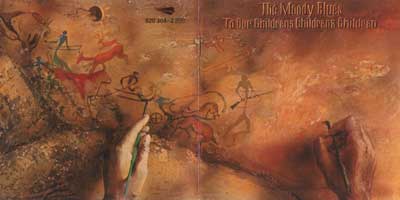 Eine meiner absoluten Lieblingsplatten! Habe ich irgendwann ca. 1974/75 von
meinen besten Freunden zum Geburtstag geschenkt bekommen. Keine Ahnung,
was die Jungs dazu veranlasst hatte, mir diese Scheibe zu schenken,
da sie ja damals bereits schon etwa 5 Jahre alt war. Die Moodies haben
vorher und nachher leider nie mehr diese Klasse erreicht. Vergesst "Nights
in White Satin" und hört diese Platte, bei der alle Lieder
ineinander übergehen und ein Gesamtkunstwerk bilden. Wenn's geht,
über Kopfhörer!
Eine meiner absoluten Lieblingsplatten! Habe ich irgendwann ca. 1974/75 von
meinen besten Freunden zum Geburtstag geschenkt bekommen. Keine Ahnung,
was die Jungs dazu veranlasst hatte, mir diese Scheibe zu schenken,
da sie ja damals bereits schon etwa 5 Jahre alt war. Die Moodies haben
vorher und nachher leider nie mehr diese Klasse erreicht. Vergesst "Nights
in White Satin" und hört diese Platte, bei der alle Lieder
ineinander übergehen und ein Gesamtkunstwerk bilden. Wenn's geht,
über Kopfhörer!

 Nachdem
Gram Parsons bei den
Nachdem
Gram Parsons bei den  Miles beim übergang vom "normalen" Jazz zum Jazzrock, dieses
mal sehr leise (siehe LP-Titel!). Jeder seiner Begleiter war bzw.
wurde danach selber ein Star: John McLaughlin, Chick Corea,
Herbie Hancock, Wayne Shorter, Dave Holland,
Tony Williams und Josef Zawinul. Was für eine Mannschaft!
Miles beim übergang vom "normalen" Jazz zum Jazzrock, dieses
mal sehr leise (siehe LP-Titel!). Jeder seiner Begleiter war bzw.
wurde danach selber ein Star: John McLaughlin, Chick Corea,
Herbie Hancock, Wayne Shorter, Dave Holland,
Tony Williams und Josef Zawinul. Was für eine Mannschaft! Weniger erfolgreich als der Vorgänger "
Weniger erfolgreich als der Vorgänger " Einer der Klassiker von den Stones. Natürlich wegen "Sympathy
For The Devil", "You Got The Silver", "Midnight
Rambler" und "Love In Vain" unverzichtbar in dieser
Liste.
Einer der Klassiker von den Stones. Natürlich wegen "Sympathy
For The Devil", "You Got The Silver", "Midnight
Rambler" und "Love In Vain" unverzichtbar in dieser
Liste.  "Hippie-Jazz" sagen manche Leute - und meinen das wohl auch
eher abfällig. Ende 70er (oder Anfang 8oer) Jahre habe ich den
Mann mal live auf dem wunderbaren Jazzfestival in der Balver Höhle
im Sauerland(!) gesehen, was einer der bewegendsten Konzerteindrücke
meines Lebens wurde. Und weil ich ja nie John Coltrane live
erleben konnte, muss ich zumindest sagen: der beeindruckendste Saxofonspieler,
den ich je gesehen habe.
"Hippie-Jazz" sagen manche Leute - und meinen das wohl auch
eher abfällig. Ende 70er (oder Anfang 8oer) Jahre habe ich den
Mann mal live auf dem wunderbaren Jazzfestival in der Balver Höhle
im Sauerland(!) gesehen, was einer der bewegendsten Konzerteindrücke
meines Lebens wurde. Und weil ich ja nie John Coltrane live
erleben konnte, muss ich zumindest sagen: der beeindruckendste Saxofonspieler,
den ich je gesehen habe. Das
zweite Album der hessischen Musikkommune, ein frühes Werk des
deutschen Progressive Rocks - und sogar auf dem Hansa-Label veröffentlicht,
das zwar 10 Jahre später auch das Debüt der wunderbaren
Band
Das
zweite Album der hessischen Musikkommune, ein frühes Werk des
deutschen Progressive Rocks - und sogar auf dem Hansa-Label veröffentlicht,
das zwar 10 Jahre später auch das Debüt der wunderbaren
Band
(2022-03-06)